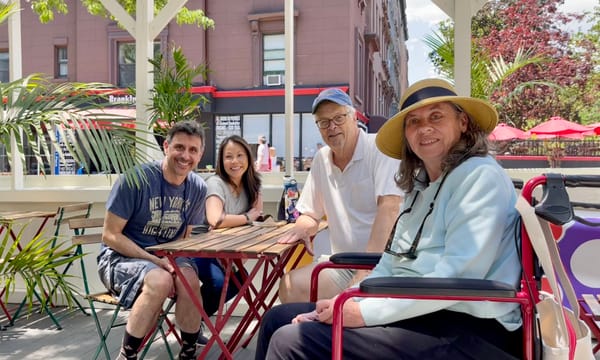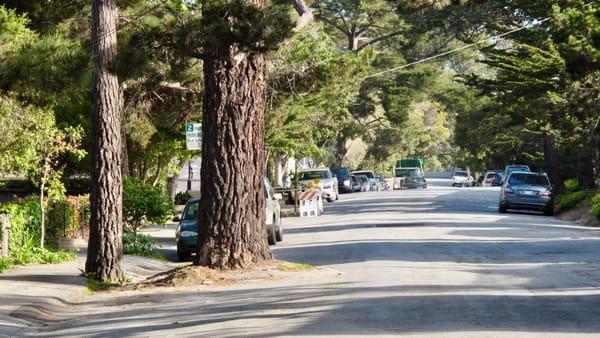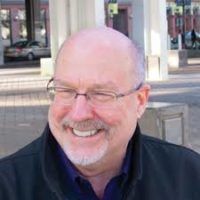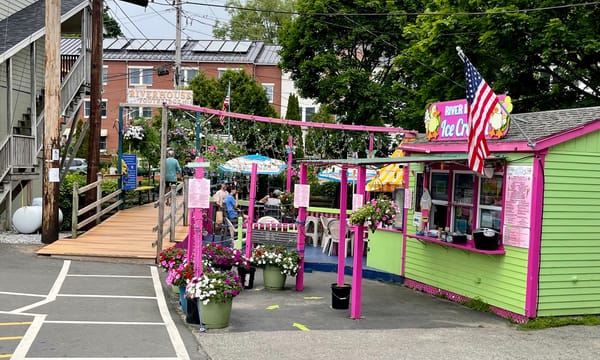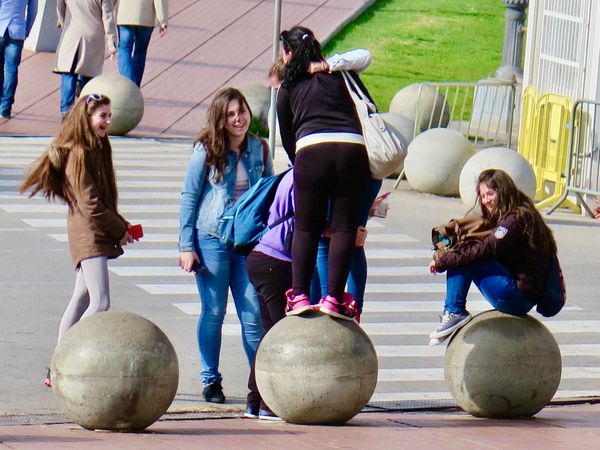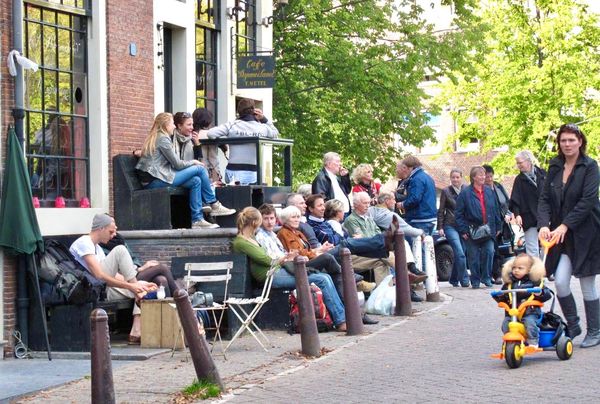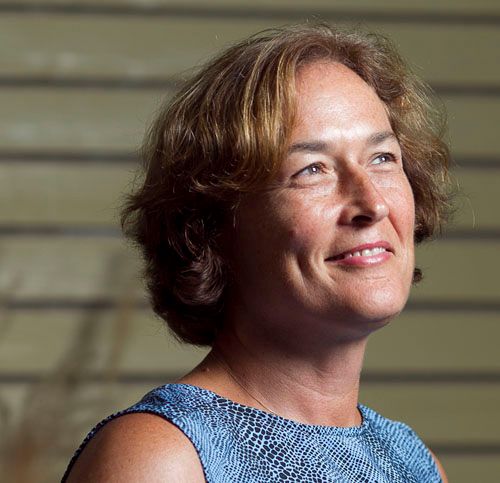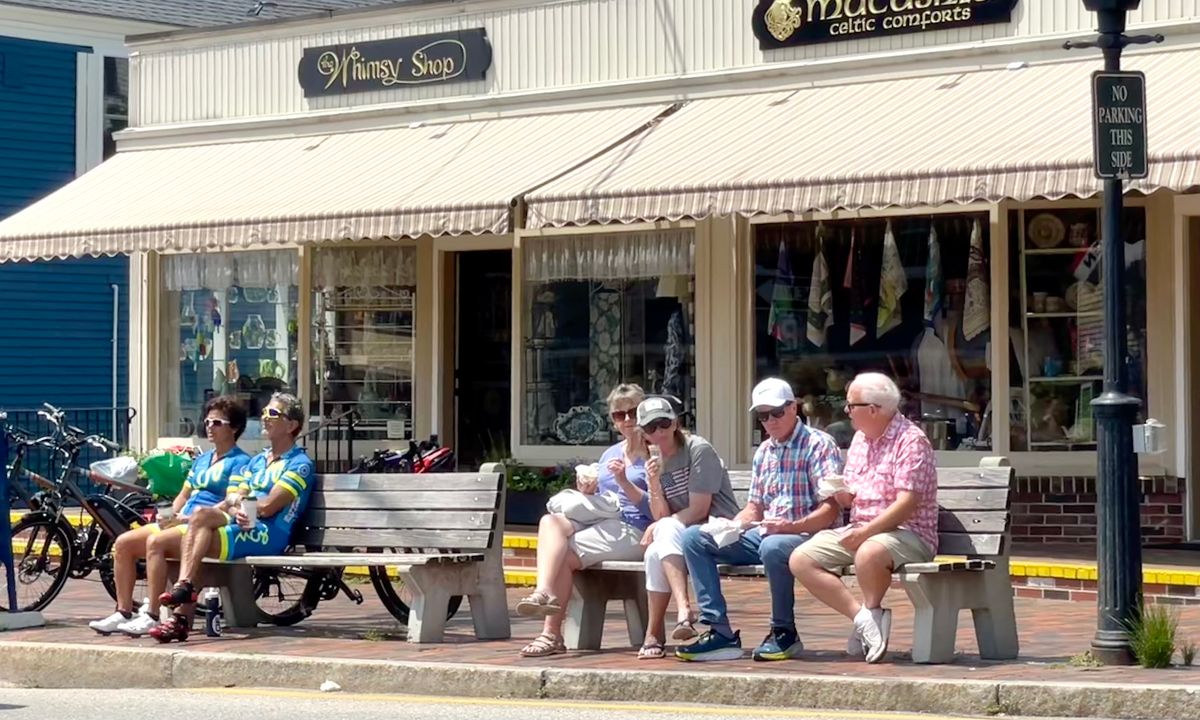
Public seating anywhere is rare — whether you are in a city or small town, at a bus stop or an intersection.
In most cities, the places where we most often cross paths are rarely where we connect. Think about it — an intersection is not often a pleasant spot to stop and catch up, for example. That's because they're designed to maximize throughput and mobility, rather than conversation. They also become temporary parking spaces. A bench would change that.
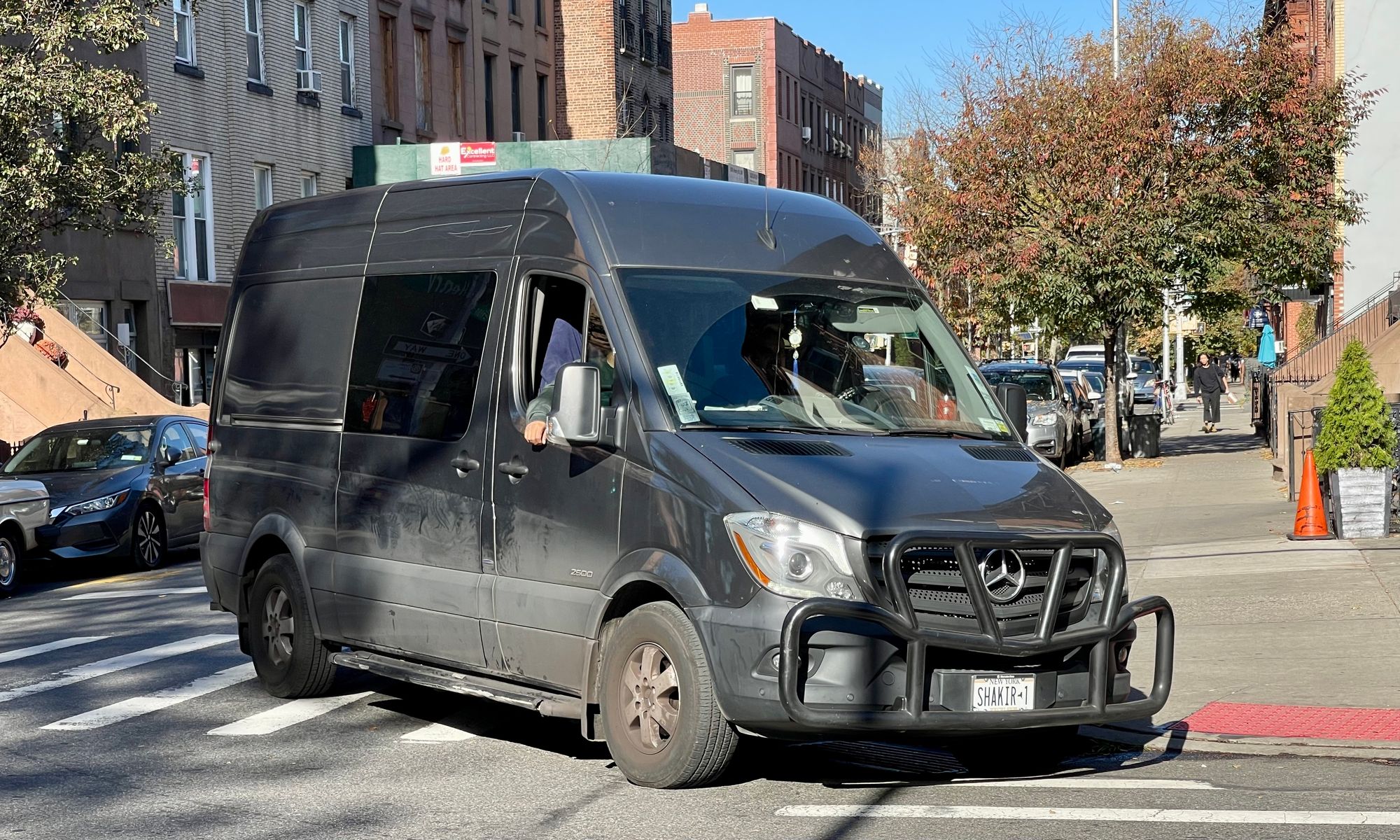
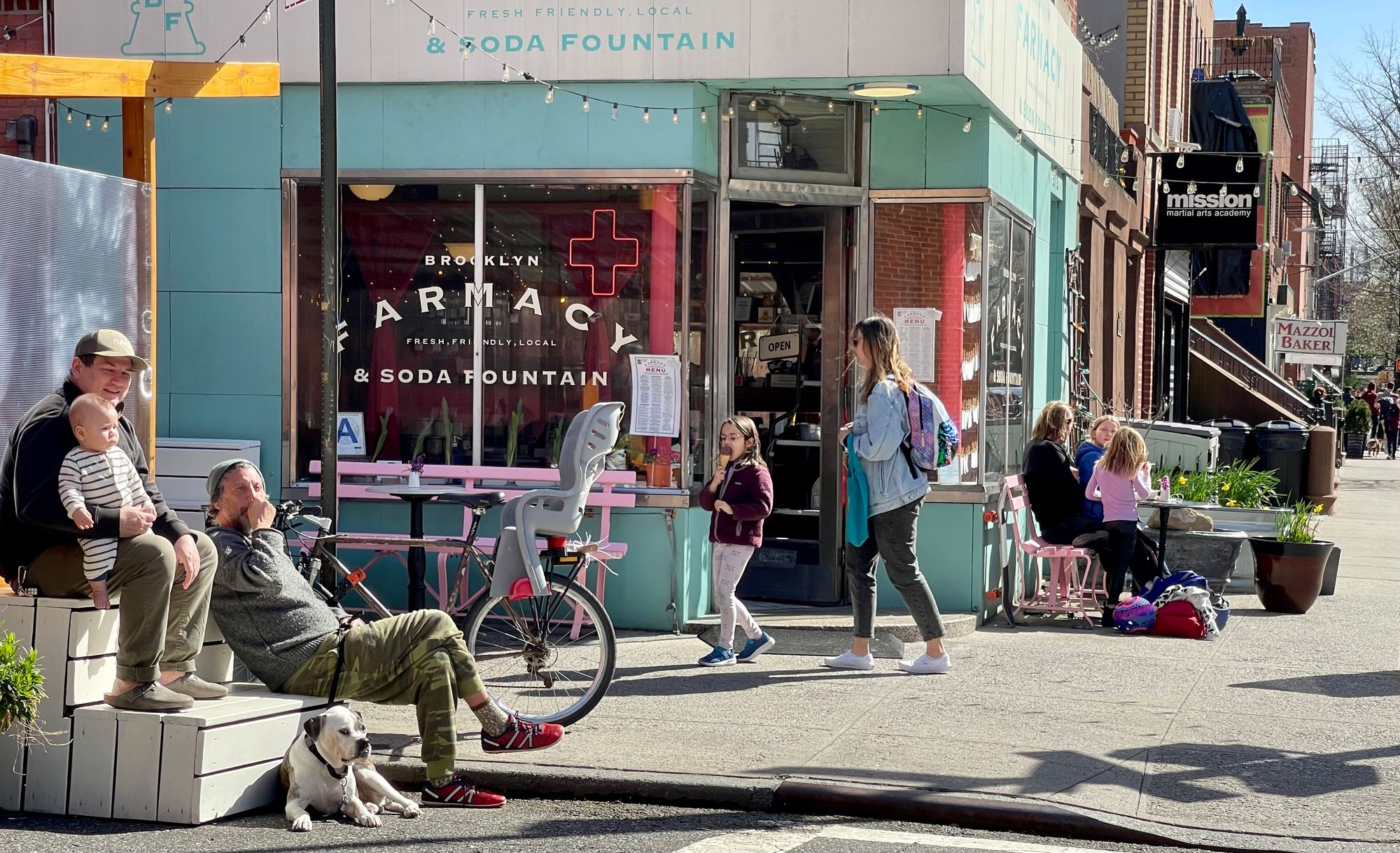
These two intersections are a block apart.
But, in an era where social isolation underlies so many of our society's challenges, creating places that invite lingering and encourage interaction at the street level will be crucial. This will mean rethinking our streets as places that draw us outside while enabling us to connect, socialize and be part of a community.
What if we told you that this transformation of our streets can be kick-started with something as simple as public seating?
Placing a public bench/seat on a corner establishes a basic, unequivocal statement that the street belongs to the surrounding community — it transcends its role as a through-way and becomes something to enjoy. This stands in direct contrast to the norm, in which street corners are too often designed as places void of anything that might invite someone to stick around. Unfortunately, this is often the result of transportation agencies' priorities of improving traffic flow and getting rid of any "obstacle" that gets in the way. In that view, a well-loved bench might even be seen as an impediment and need to be removed.
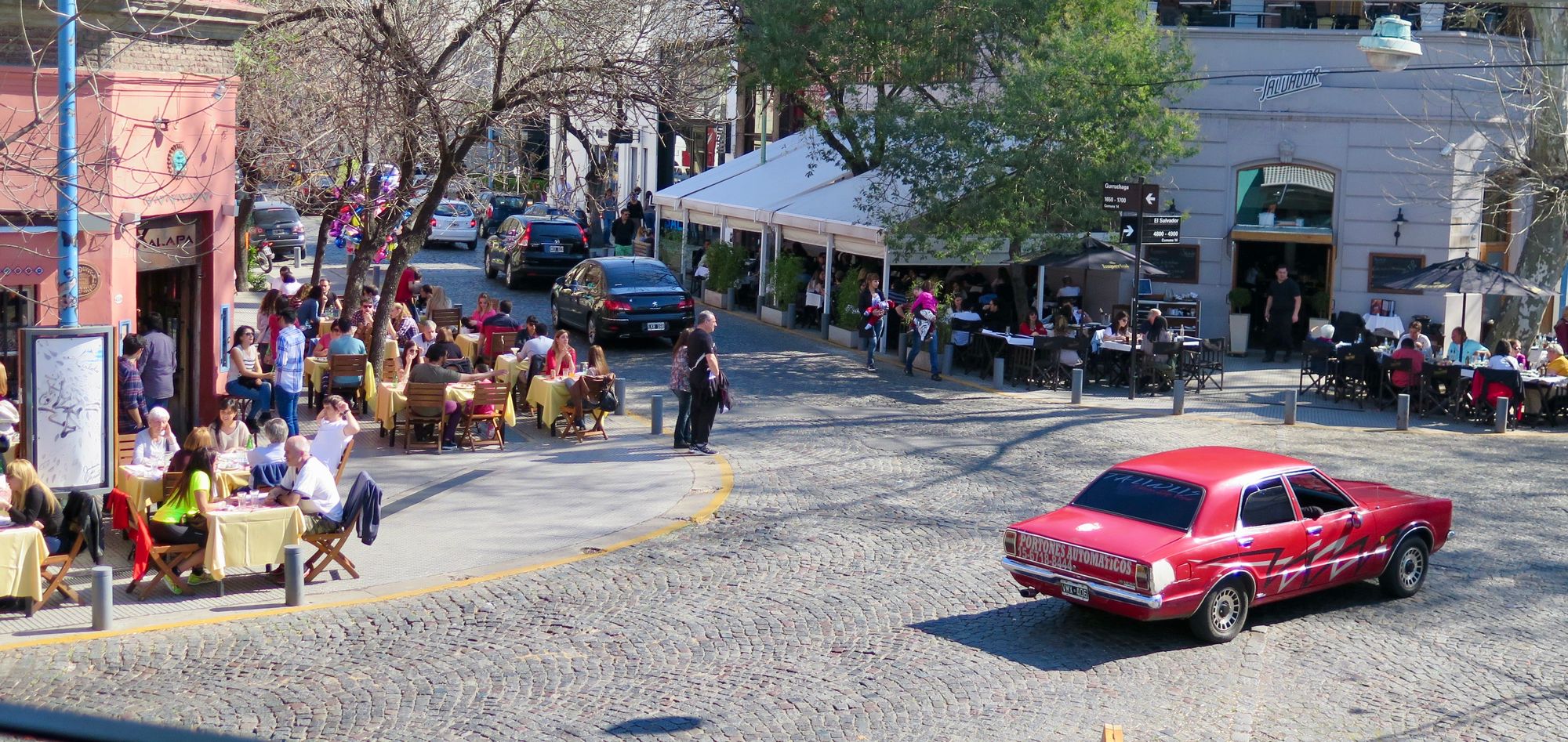
While most intersections ask us to keep moving, a simple bench invites us to connect more with that place and anyone in it. So, why not start with a big goal: to get a bench on every corner?
If we can get a bench on every corner, we can shape our communities around safe, social places to gather. By starting with a seat, we could set off a much bigger transformation that would shape neighborhoods and entire communities.
But what really got us interested in this possibility happened in three places in our Brooklyn neighborhood just a few blocks of our home.
A Bench-led Boost
If you have read any of our other articles, you will know just how crucial we think seating is in creating a welcoming space. Any old chair or bench won't do; public seating must be ample, comfortable, and accessible.
As of now, there are far too few examples of public seating on corners that we have seen in our travels. Making sure that we have enough places to sit conveys a powerful message of welcome, of comfort, and of basic respect for the people who spend time in a place, and we can think of a few places that get it right:
Our Brooklyn Neighborhoods: Three Examples
The Rogue Public Bench
This bench in our Brooklyn neighborhood's main street quickly became a major gathering place when it was first introduced and piqued our curiosity. We were stunned as we witnessed the impact such a simple bench had on a corner we went through at least once a day.
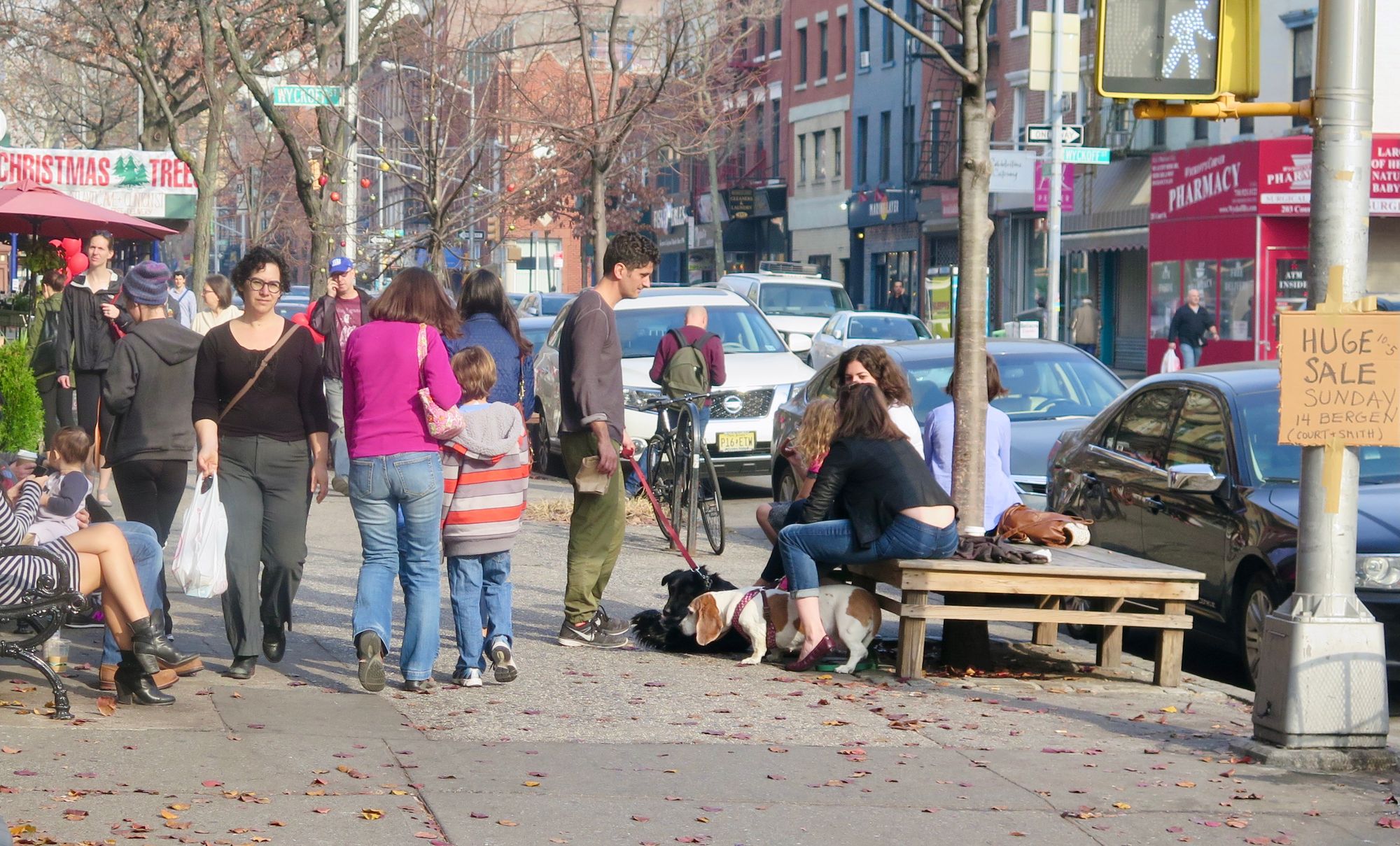
This had us wondering: How did it get there?
The folks who installed it did not go through an approval process, and it was technically illegal. But people have realized that when these benches are called "tree guards" with seating, they have been allowed — and now they are emerging around the neighborhood!
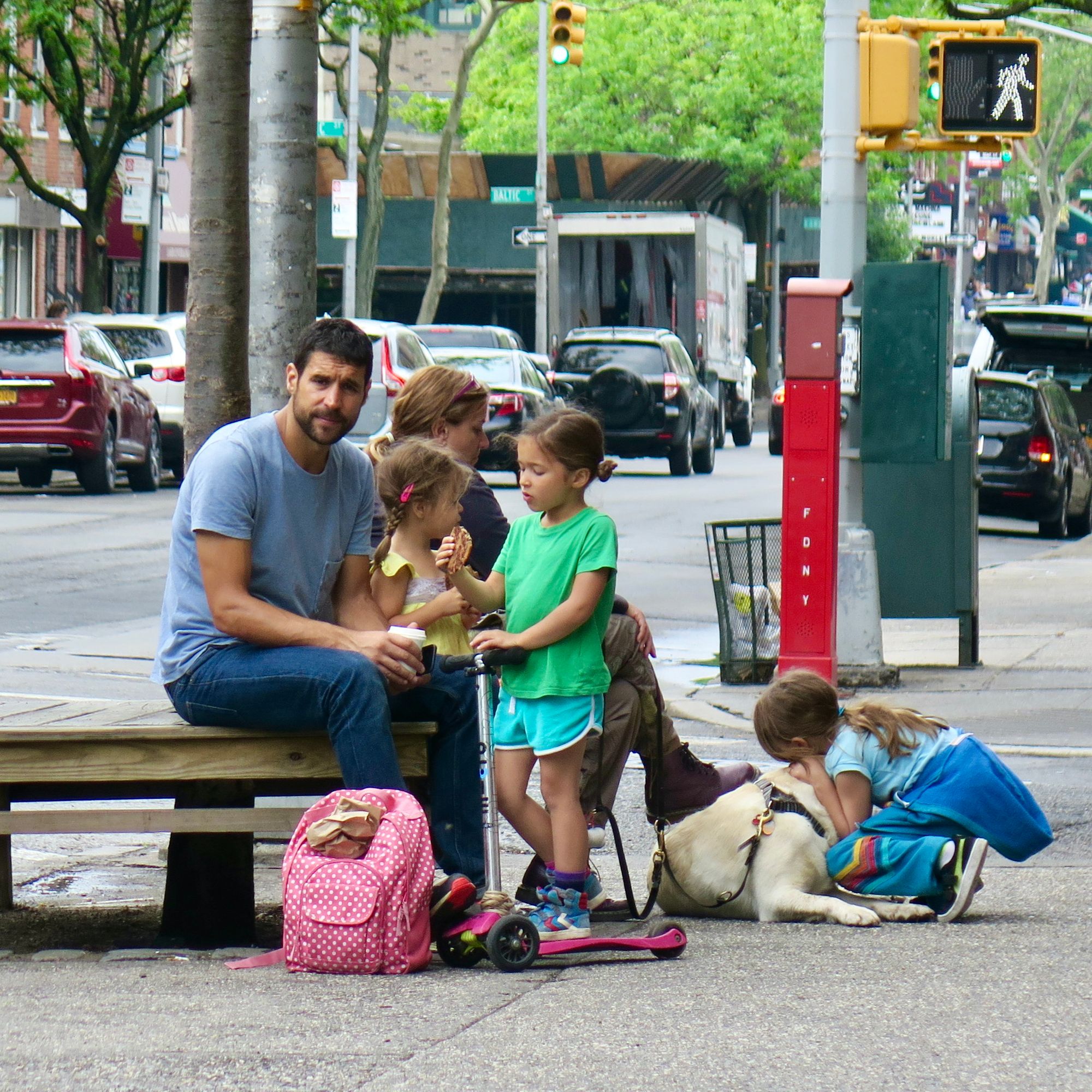
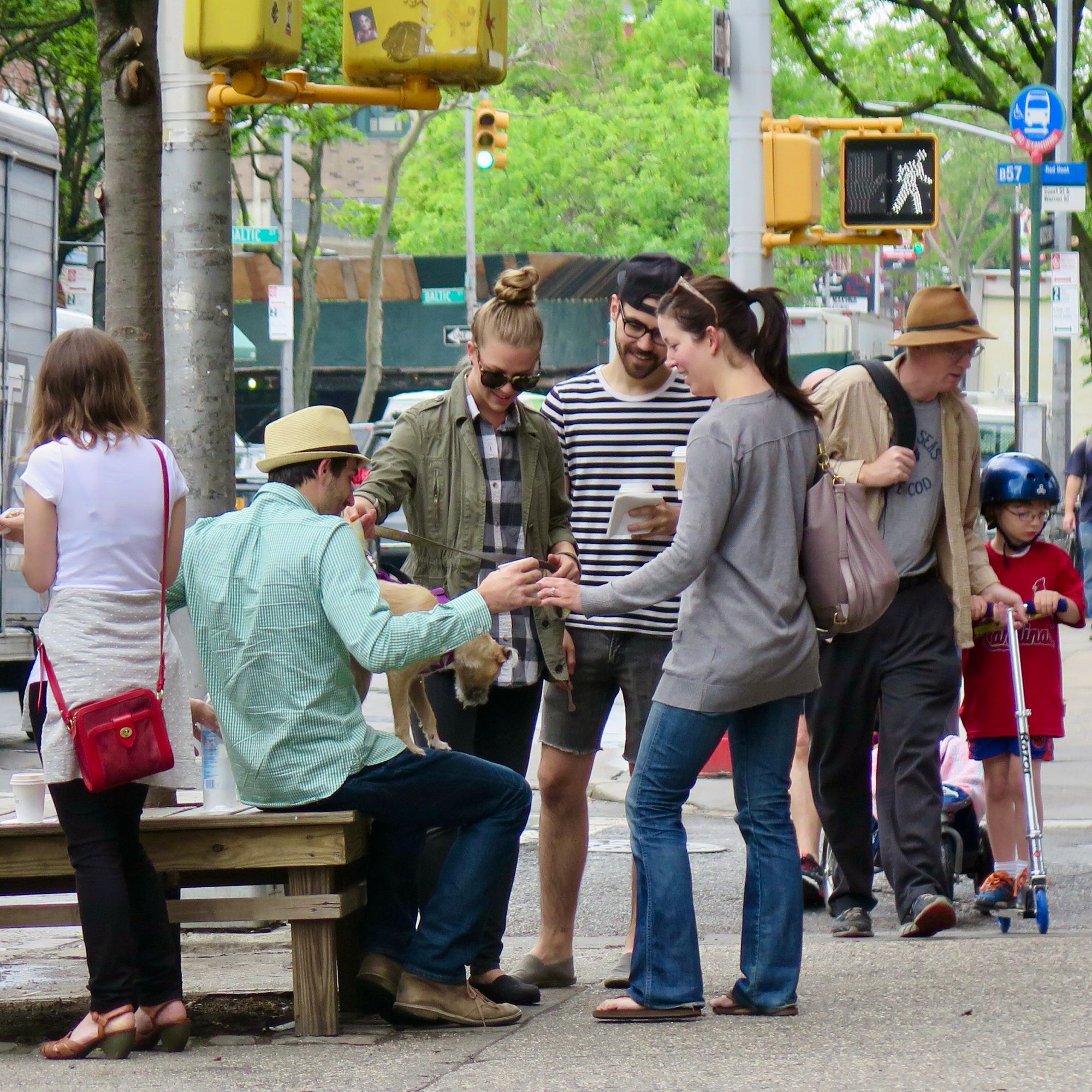
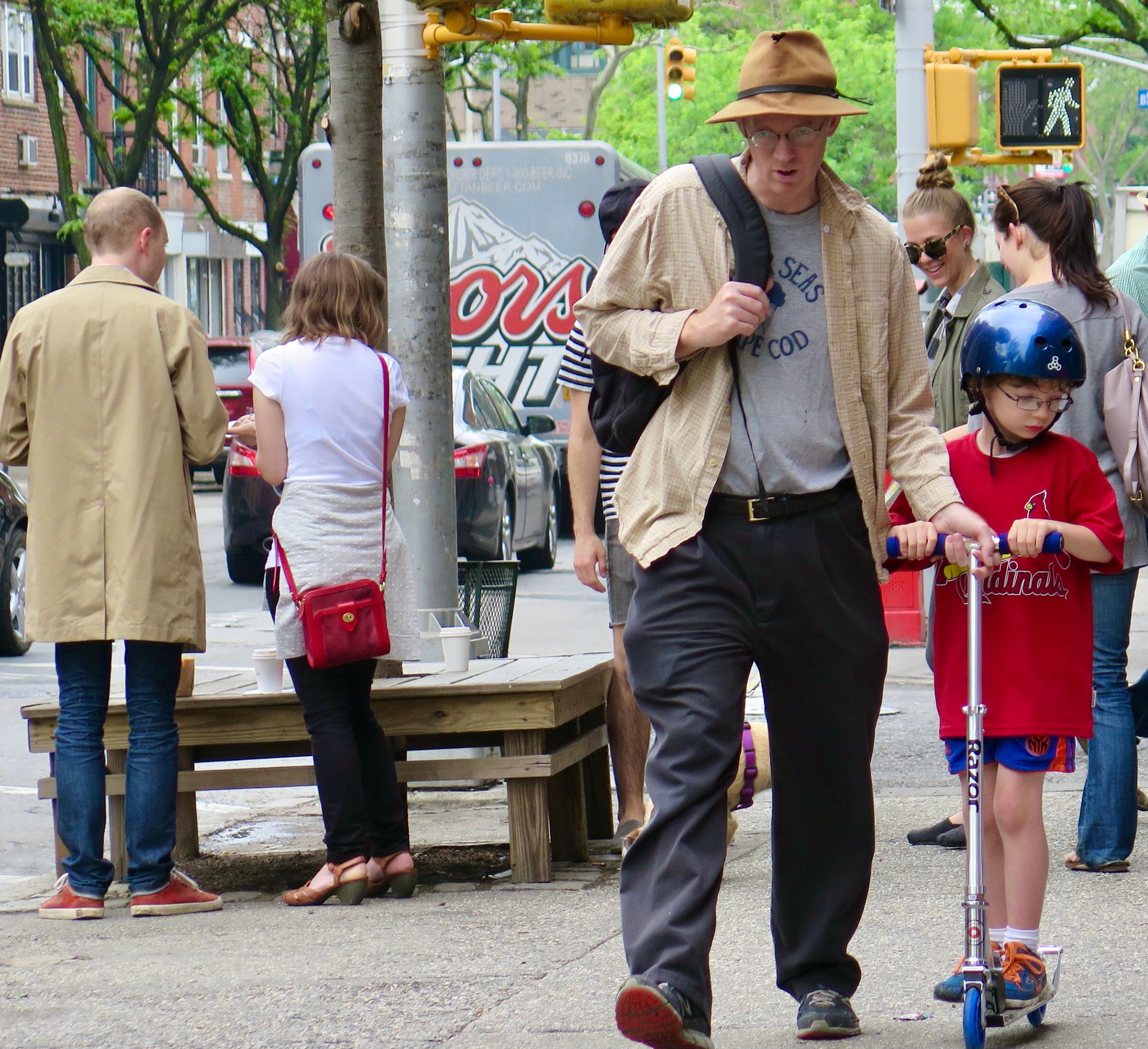
This tree guard "innovation" has become a unique way to add more public seating and enhance social life in many other neighborhoods. It often complements other benches on the opposite side of the sidewalk, creating two opportunities to sit where once there might only have been one.
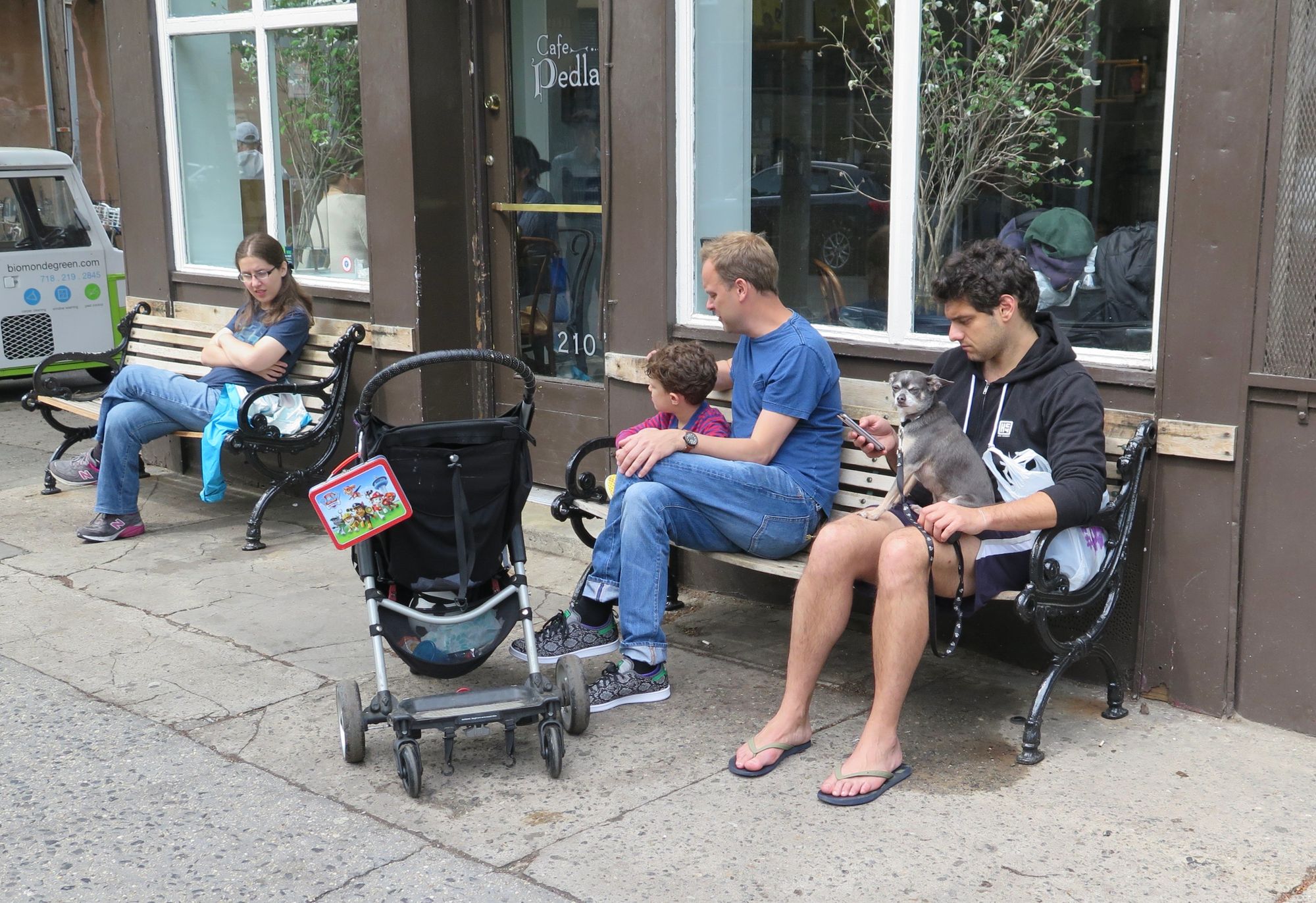
But then we lost the bench, and along with it the nearby storefront and other seating. The two benches that were in front of the building were also removed and replaced by planters...a strategy more represented in suburban communities, communicating a message of "look but don't touch."
We are not sure why the bench was removed, but the end result is a significant loss.
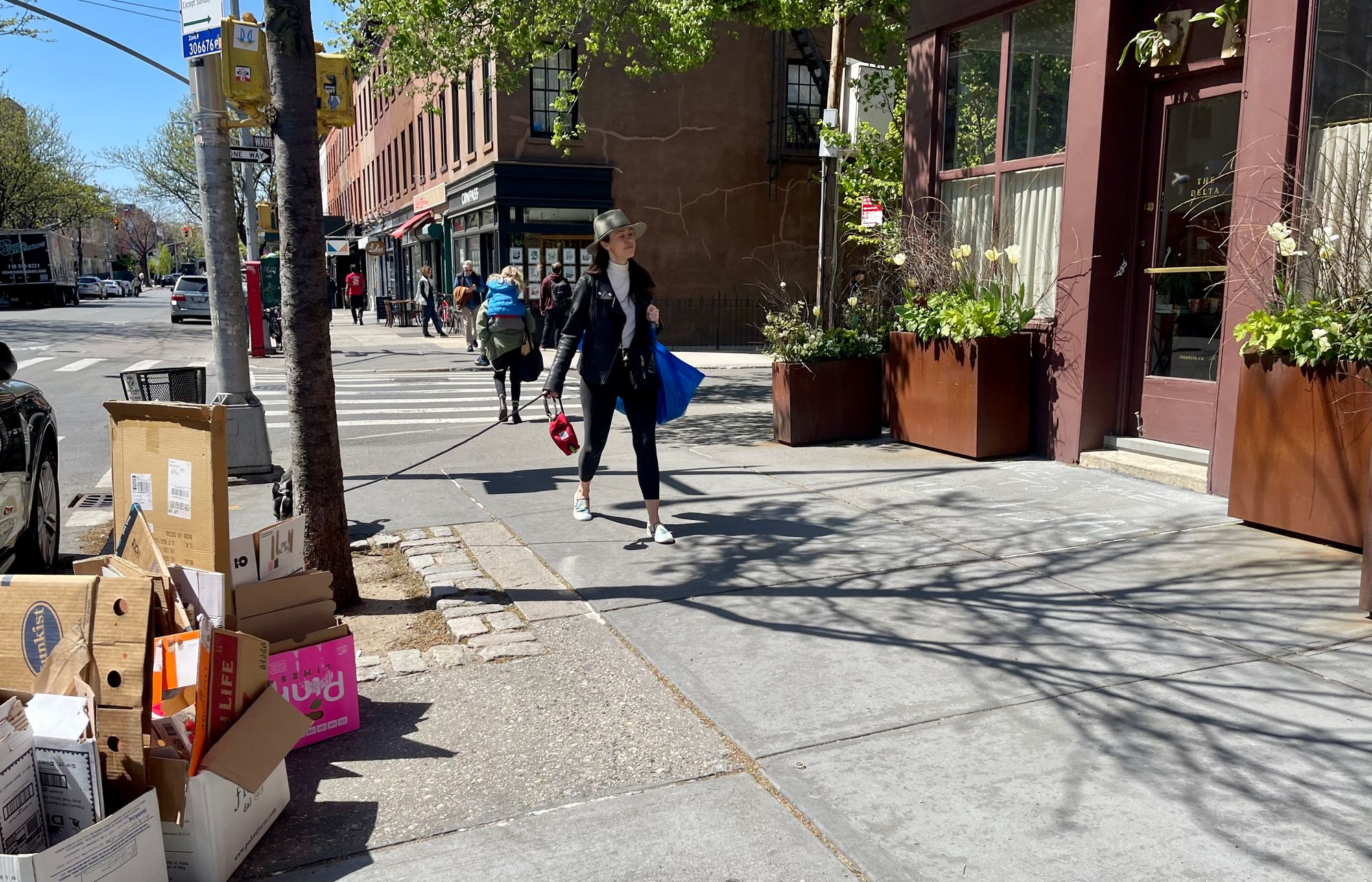
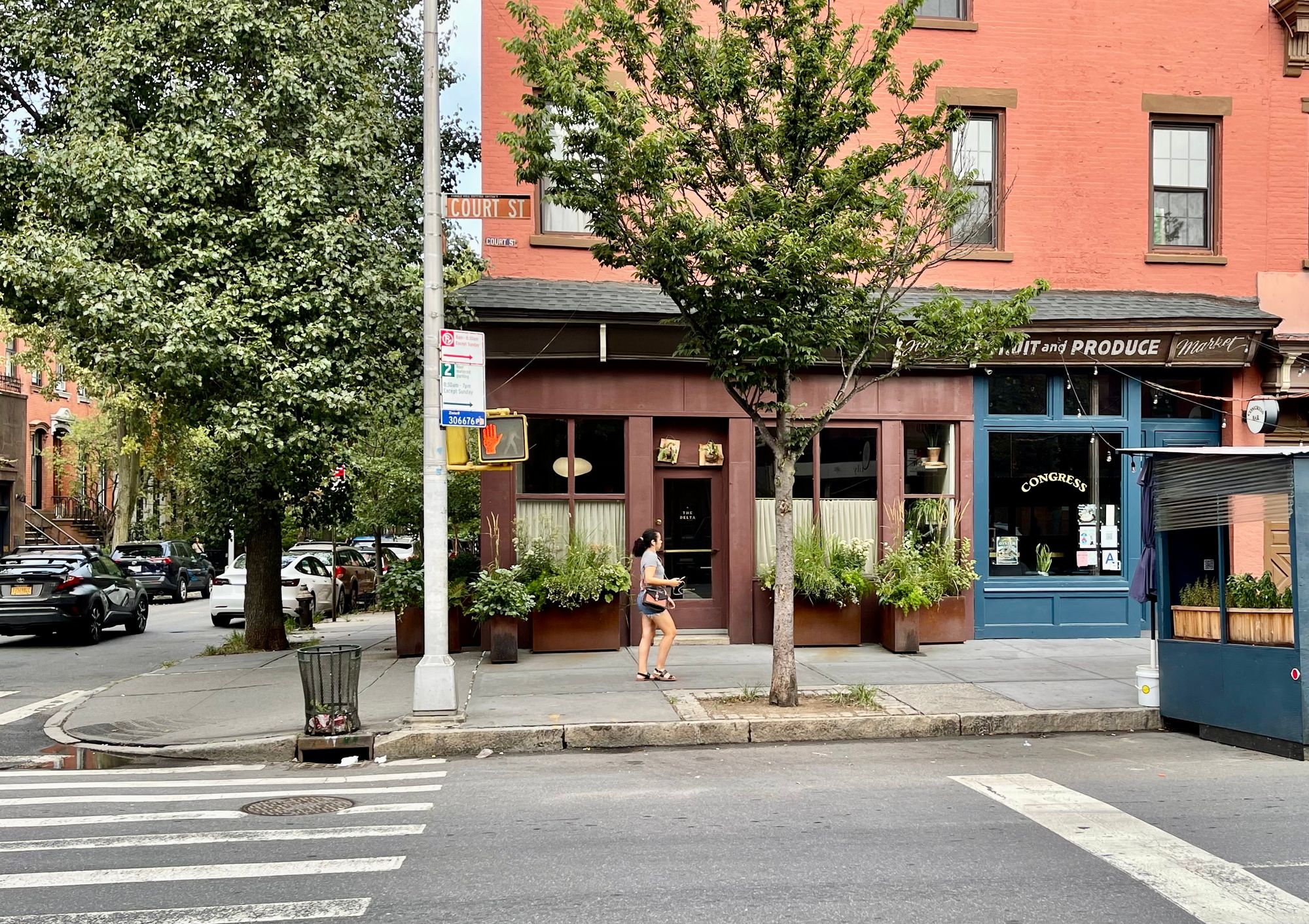
Piles of boxes take the place of a once-lively bench and the social life of this corner is erased.
Public Seating at the Farmacy and MozzLab
Also, just two blocks from where we live on Henry Street is another exceptional example. This area three blocks is still a center of old Italian life that continues in our community. In fact, those of you who remember the movie, Moonstruck. It was shot in the building where MozzLab is now located. That intersection has public seating on three corners. It is a remarkable setting for people to come together, and it is available 24/7. And you don't have buy anything. There is no table service.
On one corner there is a soda fountain called the Farmacy that draws mostly children and a young crowd.

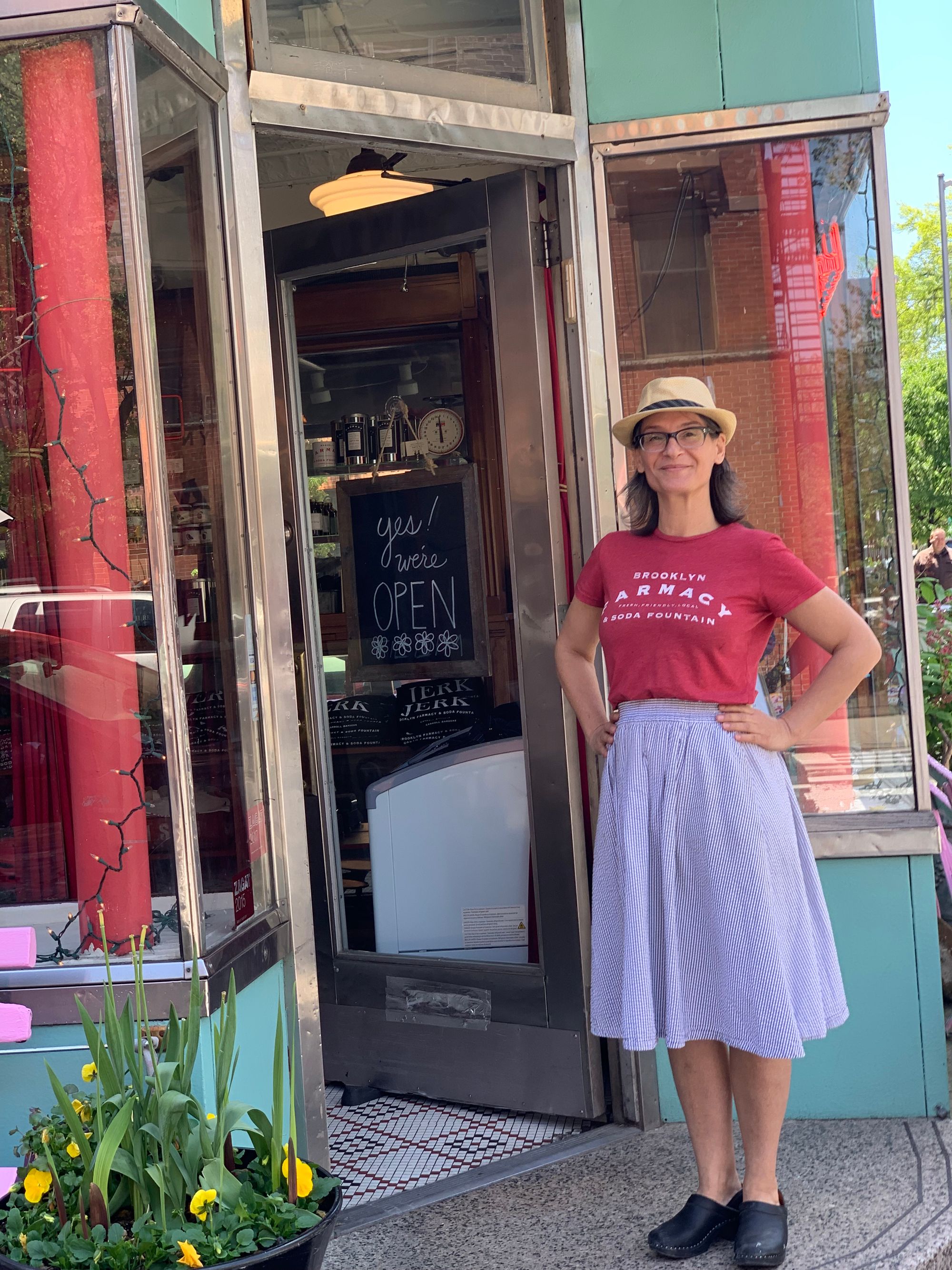
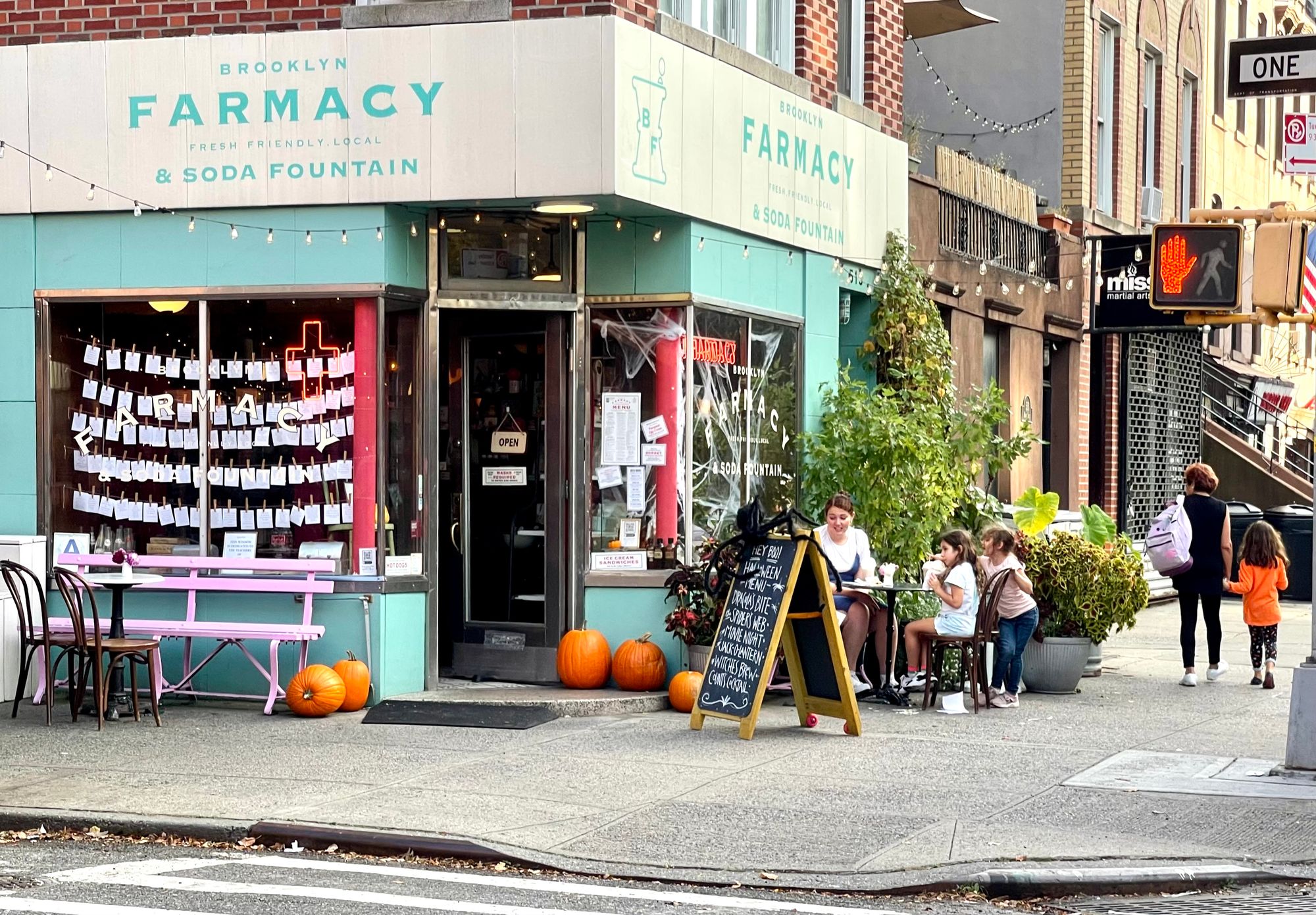
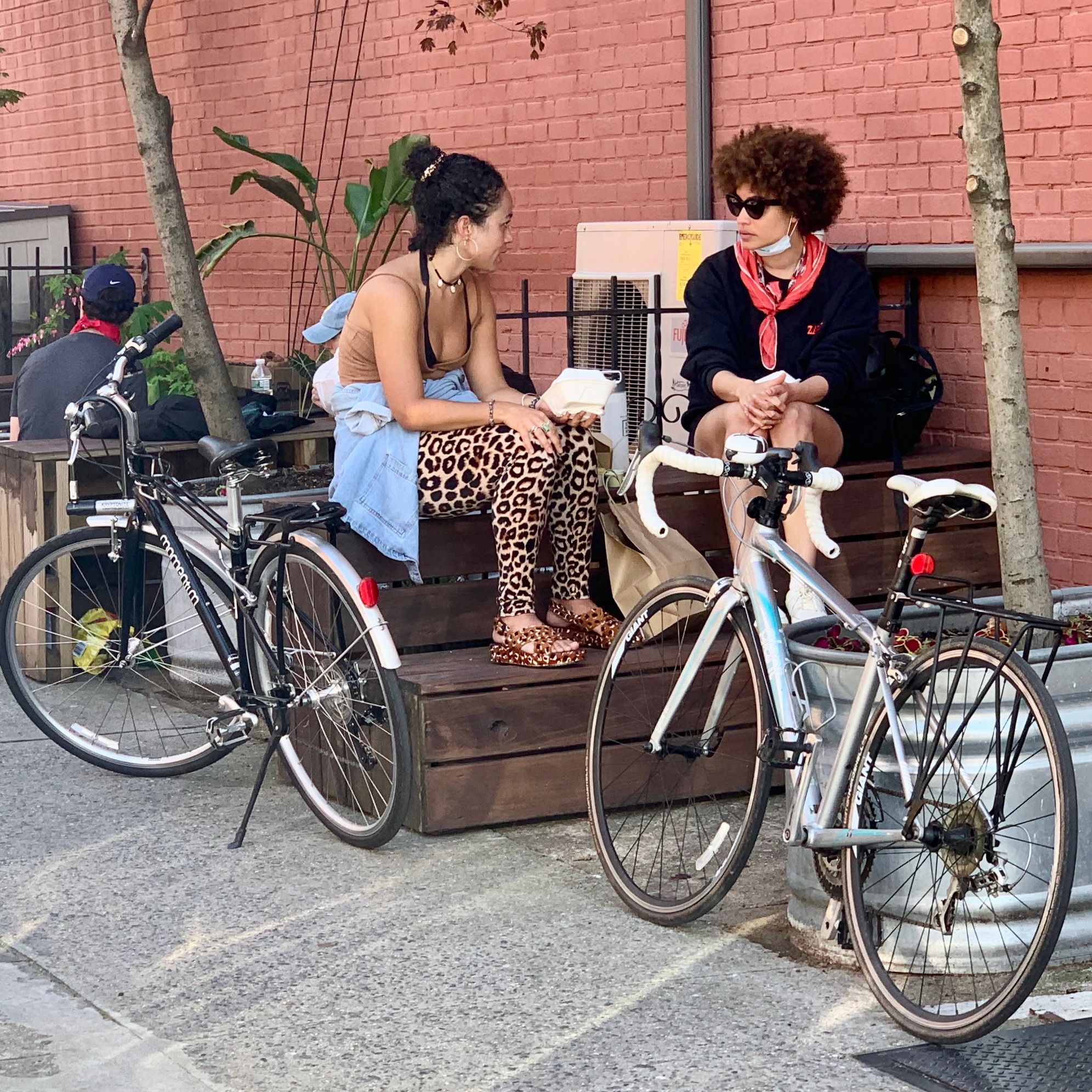
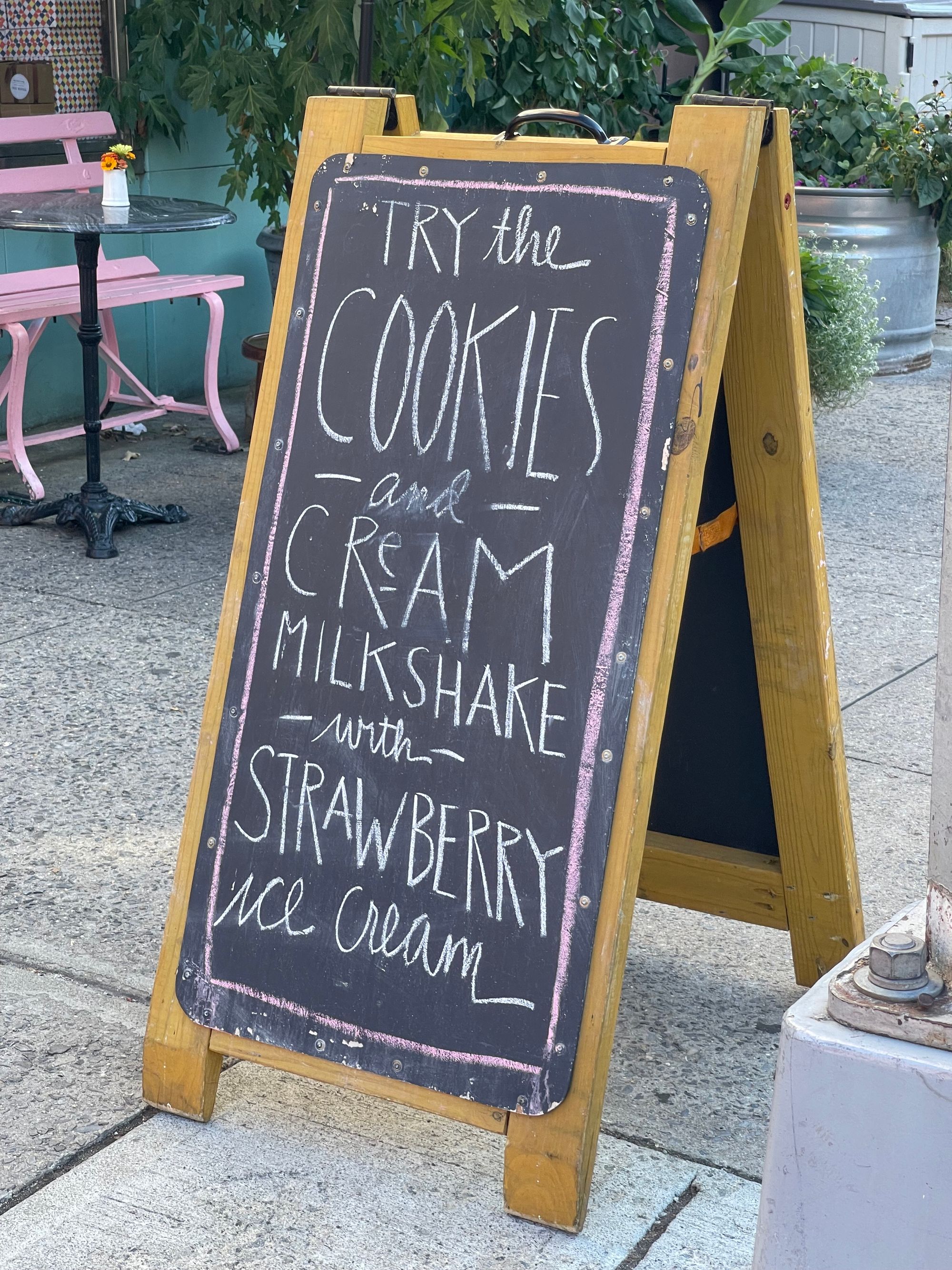
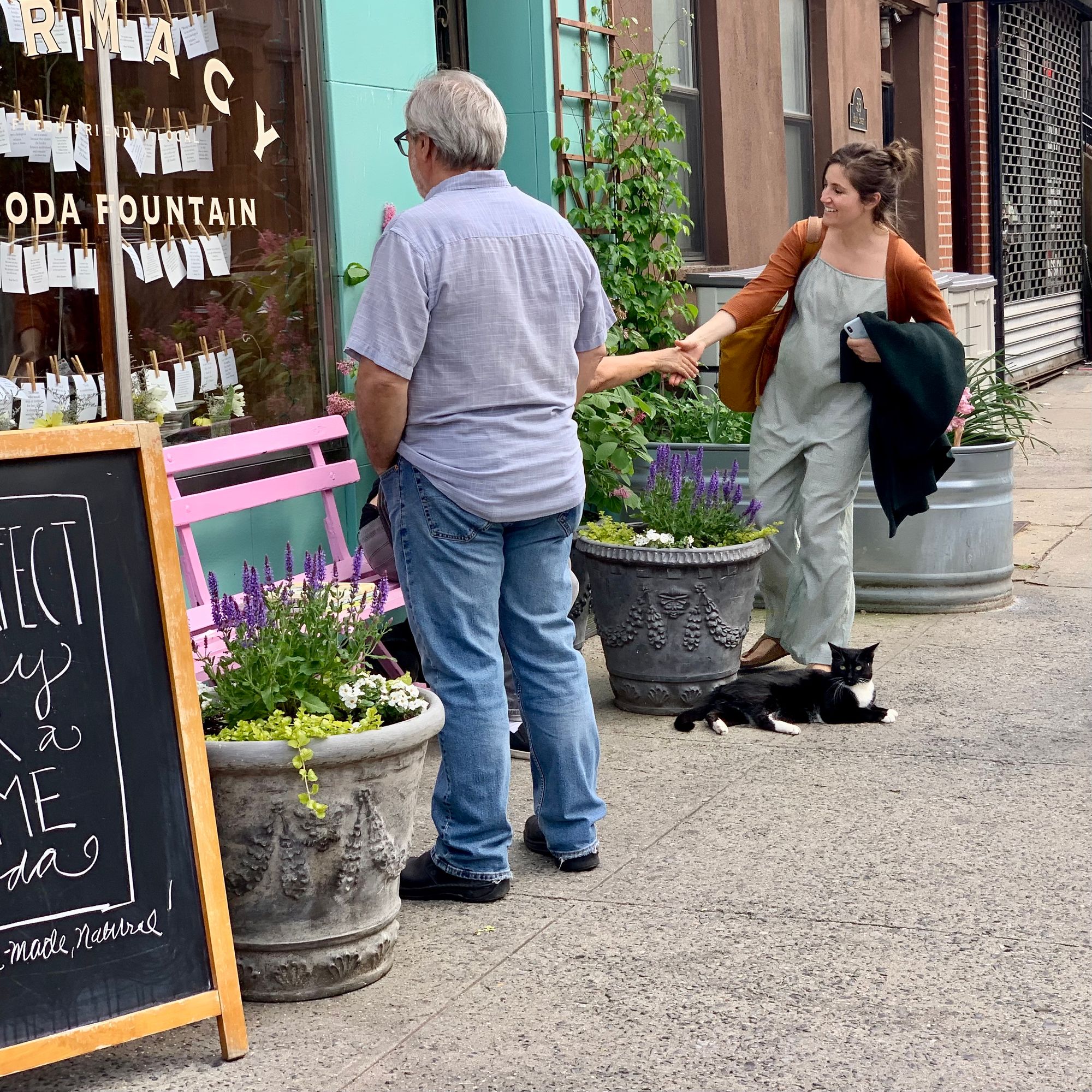
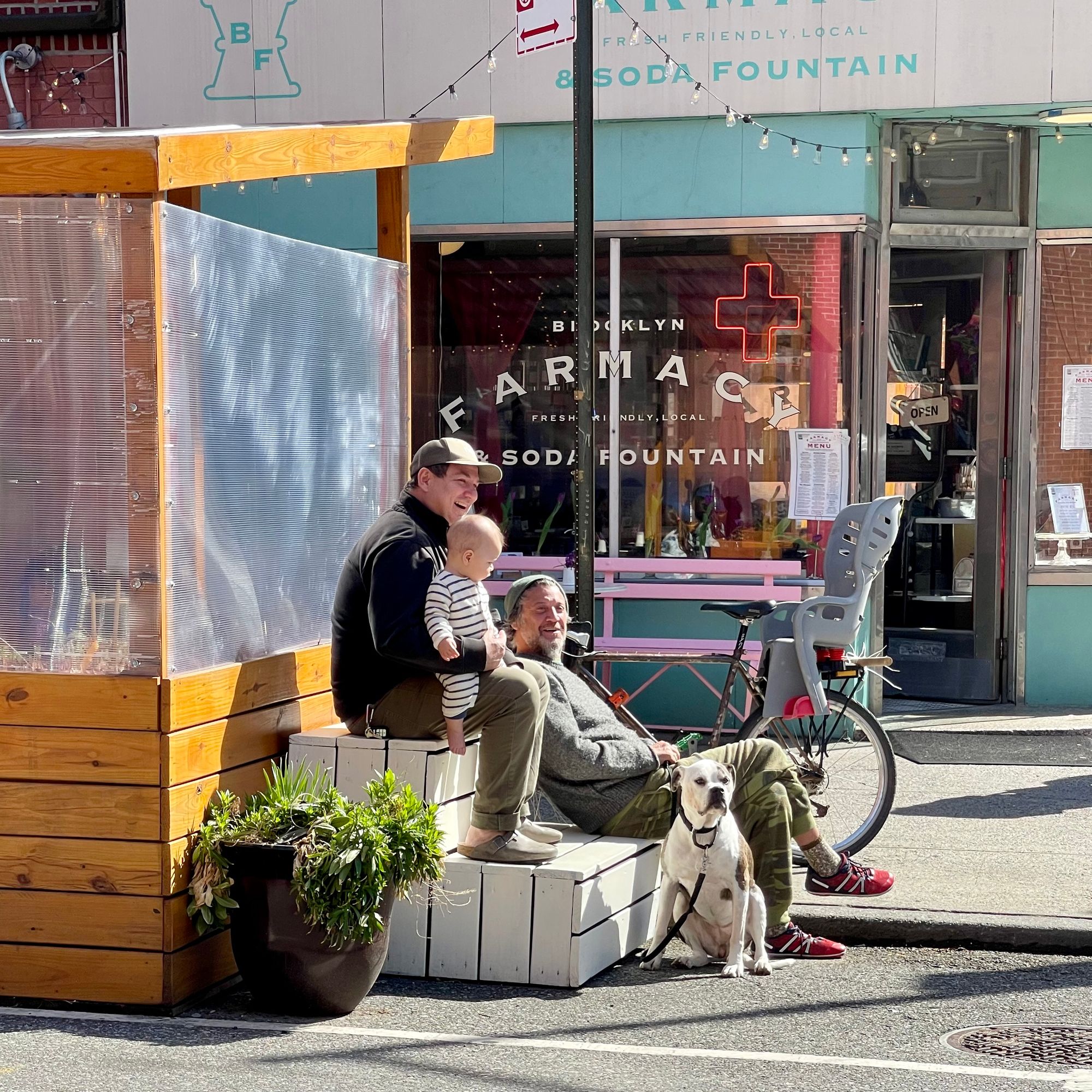
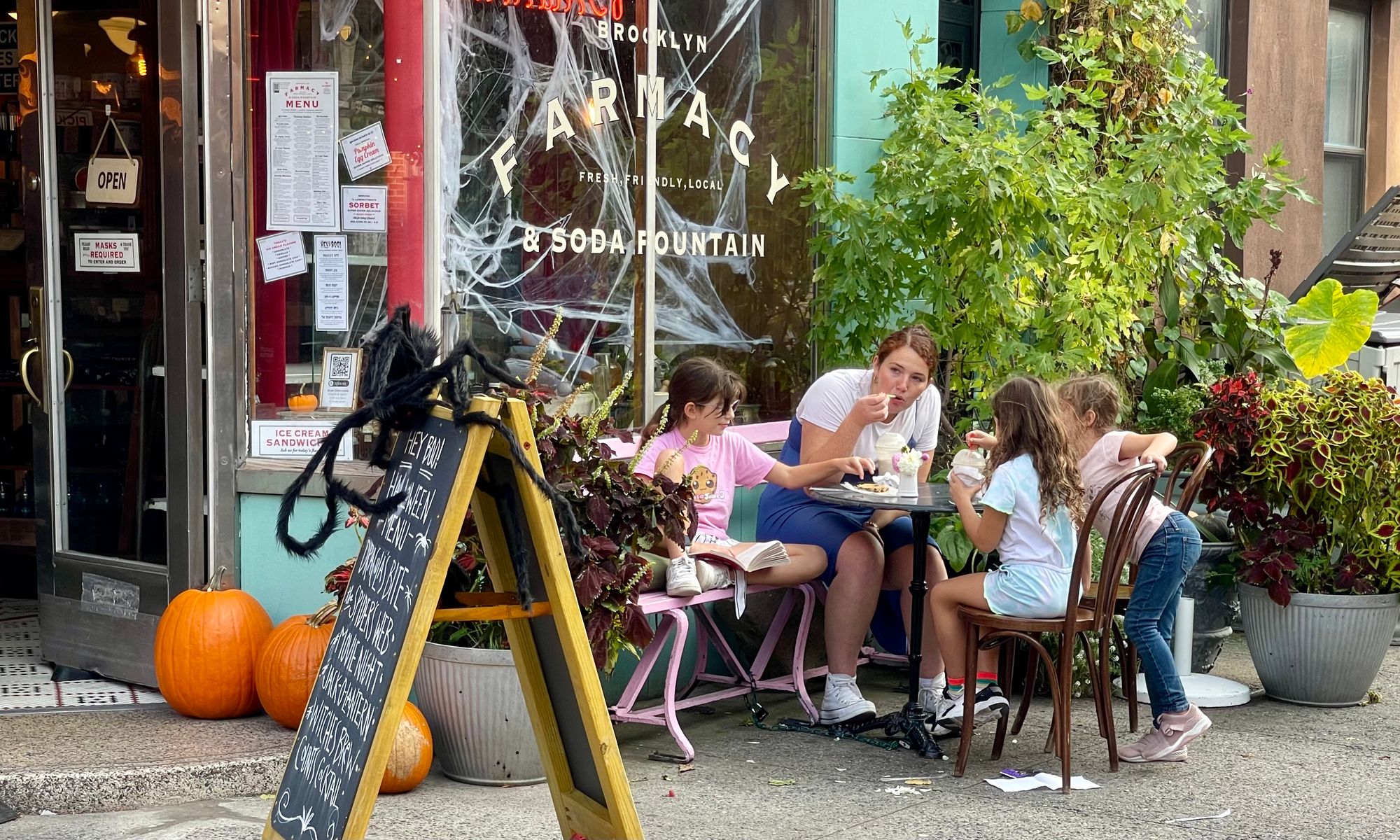
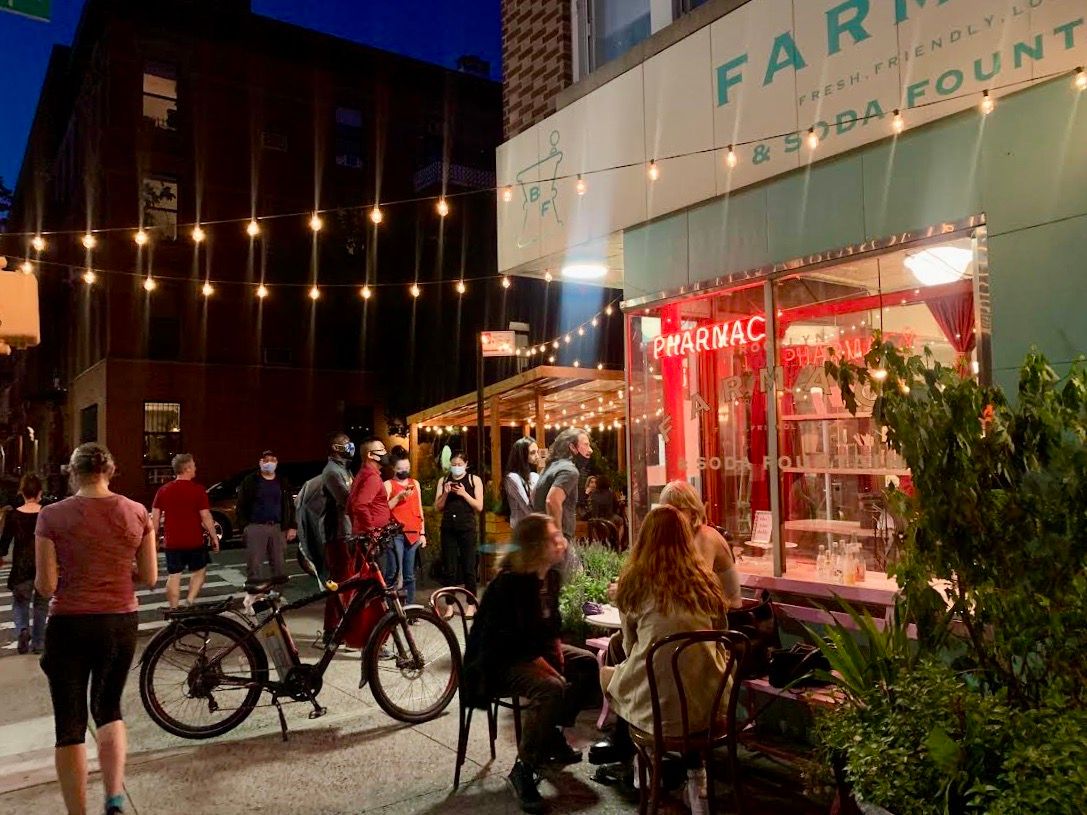
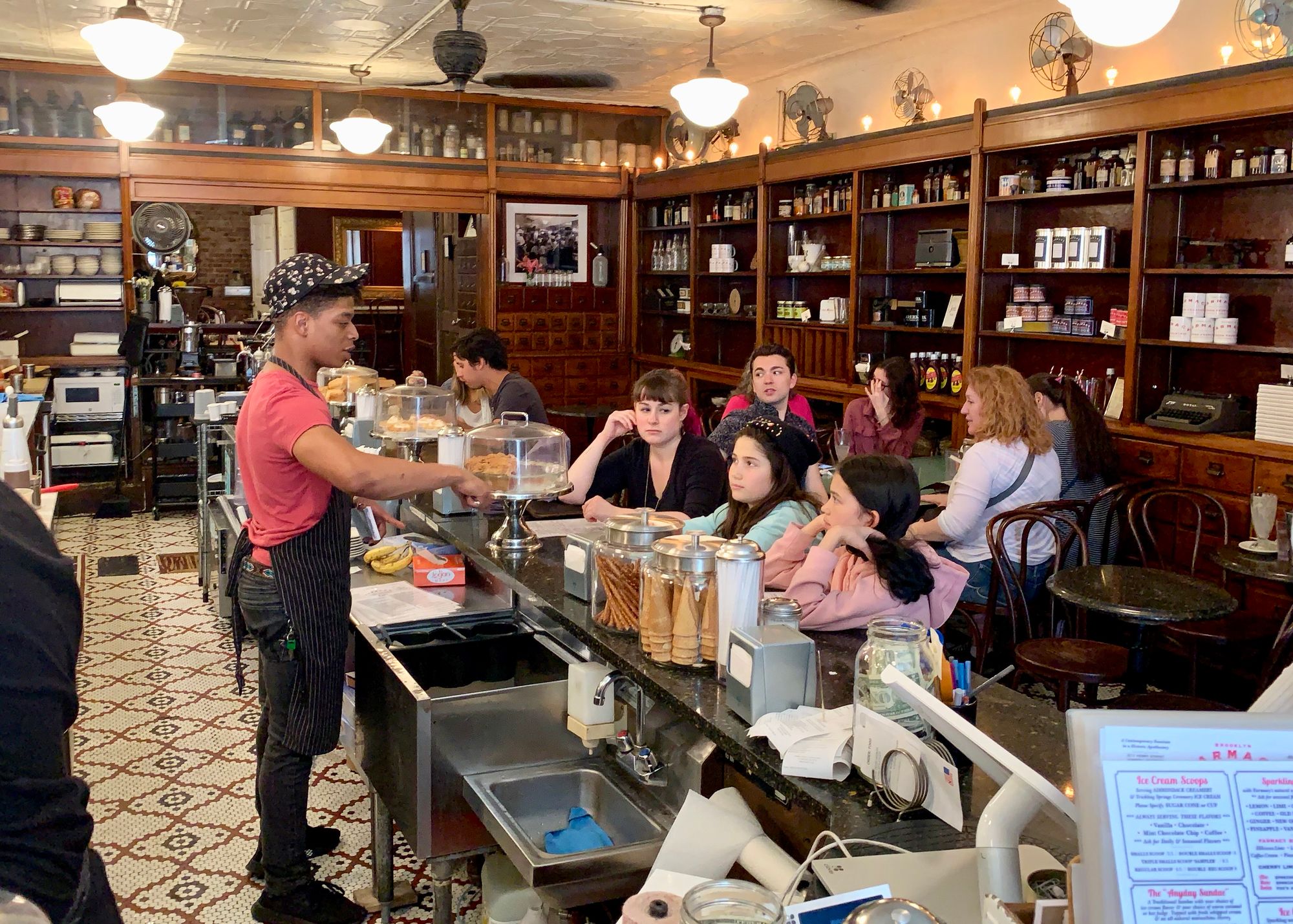
Across the street, a relative newcomer, MozzLab, has created another public gathering place... competing to make this one of the most social intersections around. Both corners provide seating that is available for anyone, day and night, open or not. Both provide food, but they are not cafes, and have no table service.
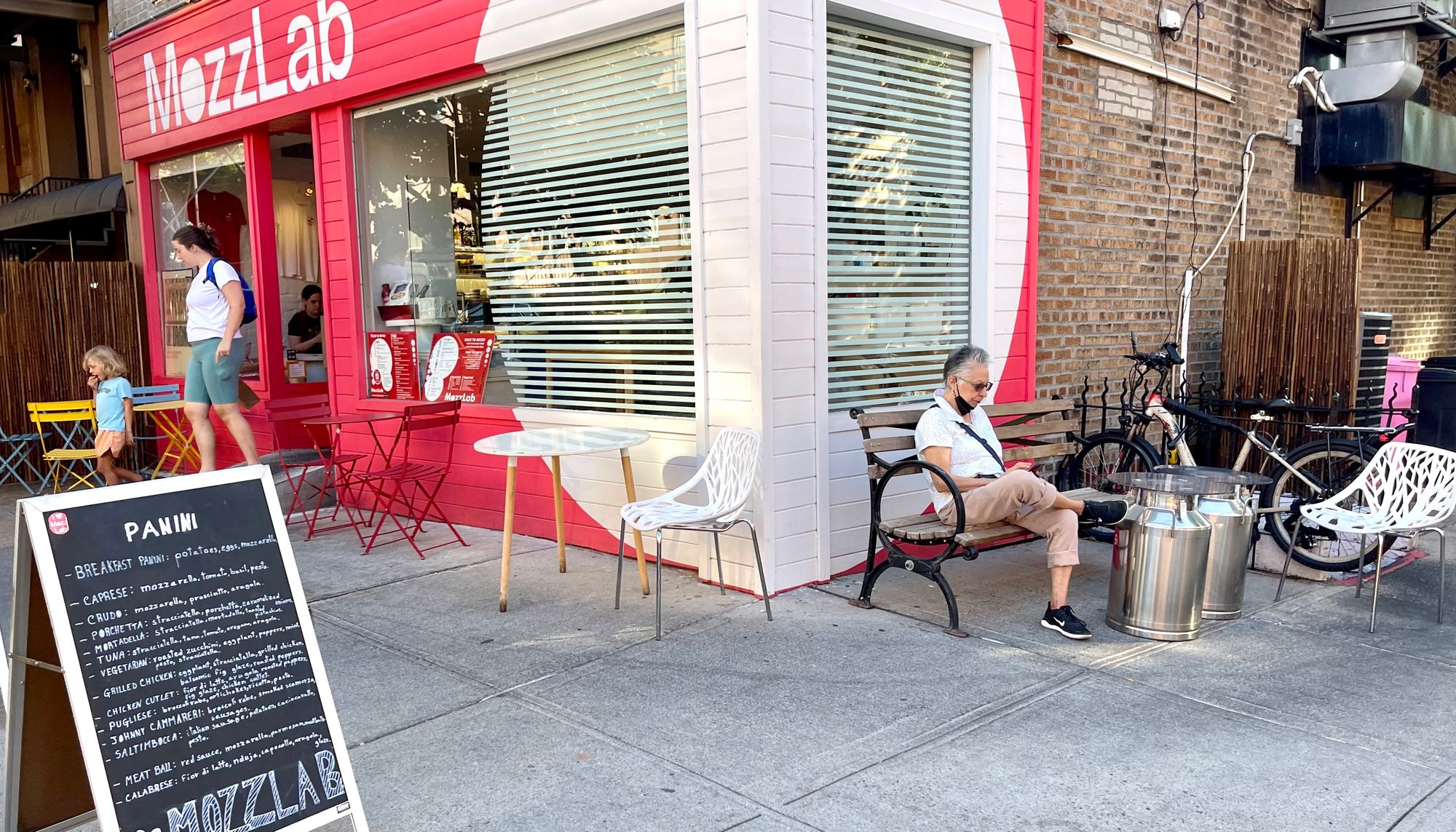
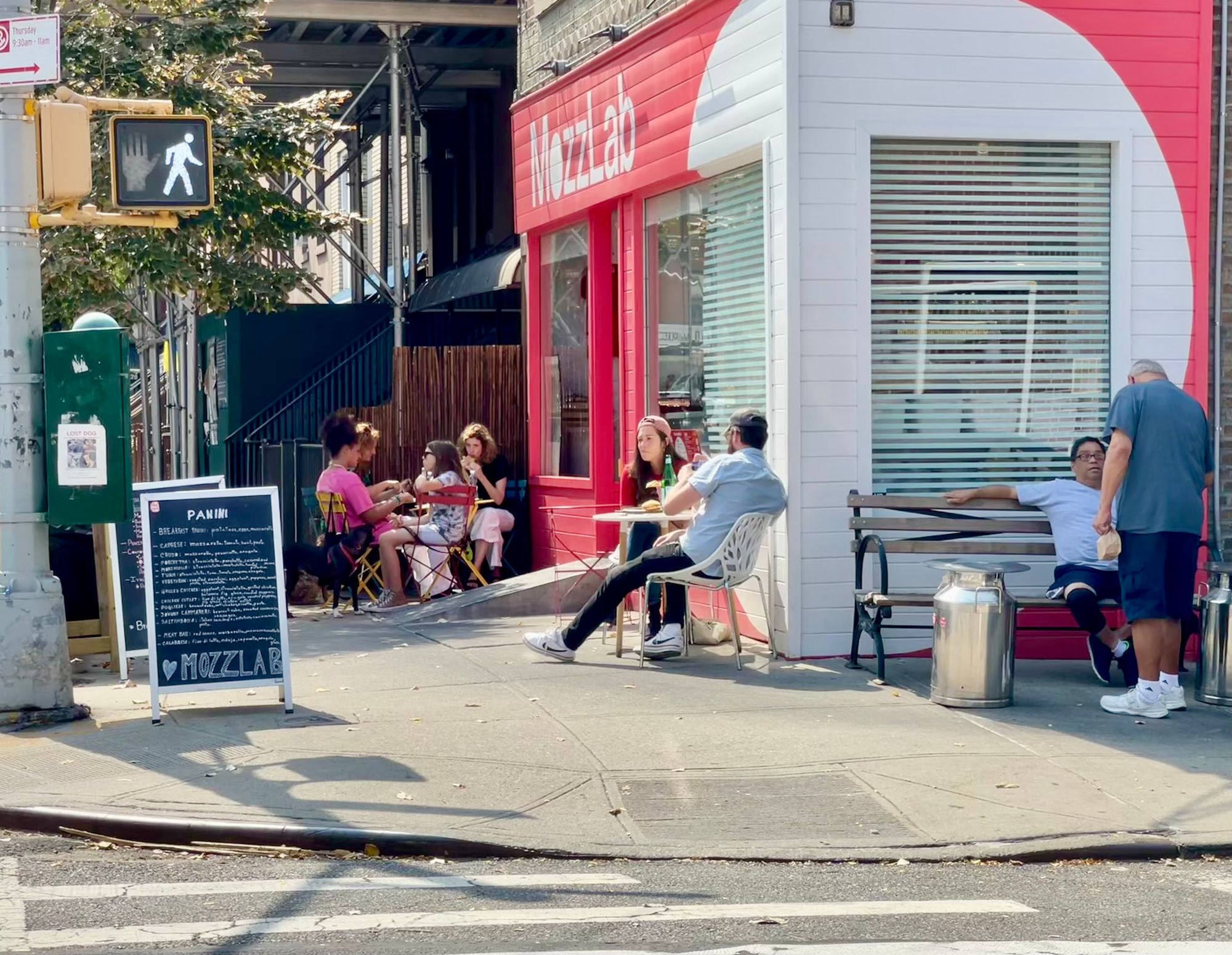
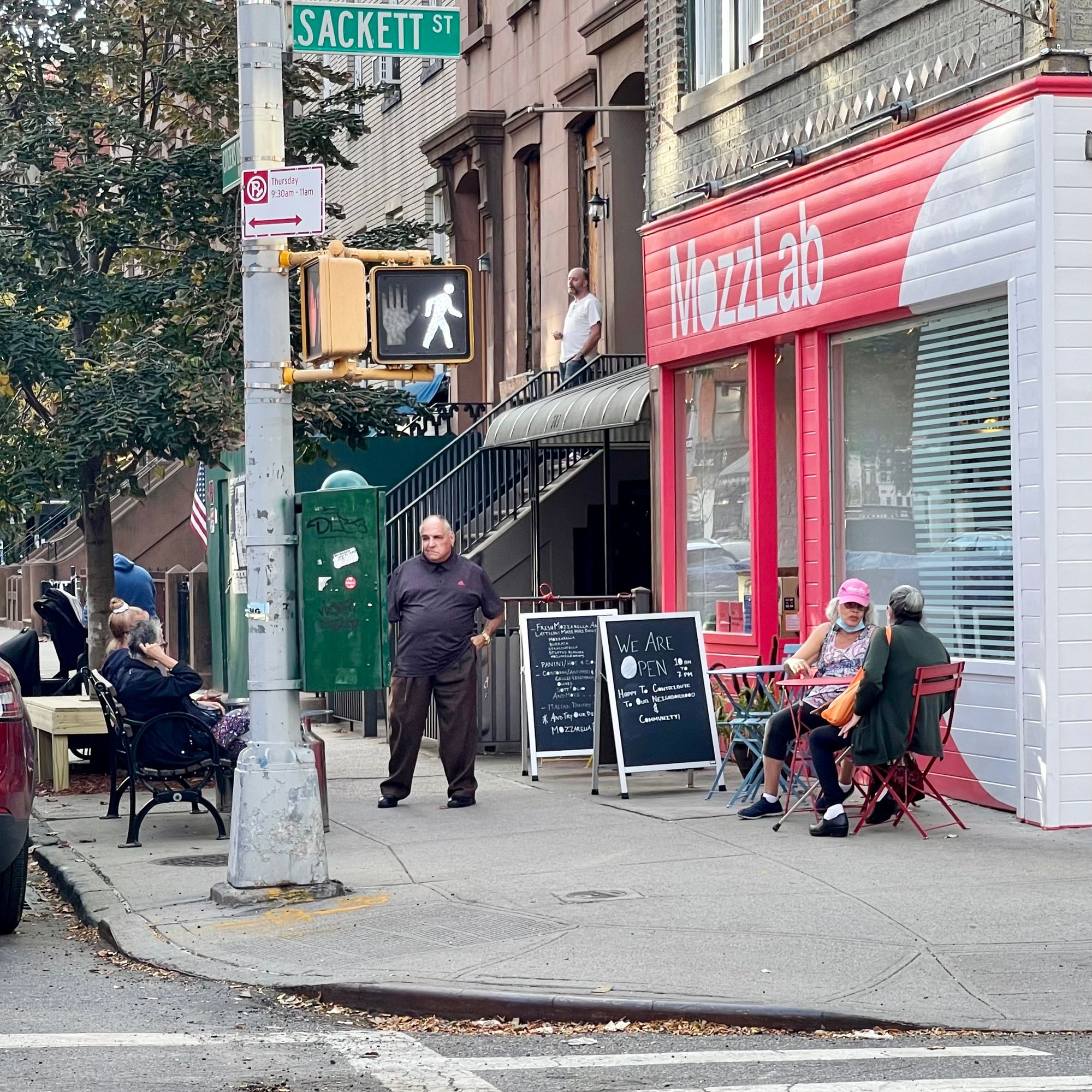
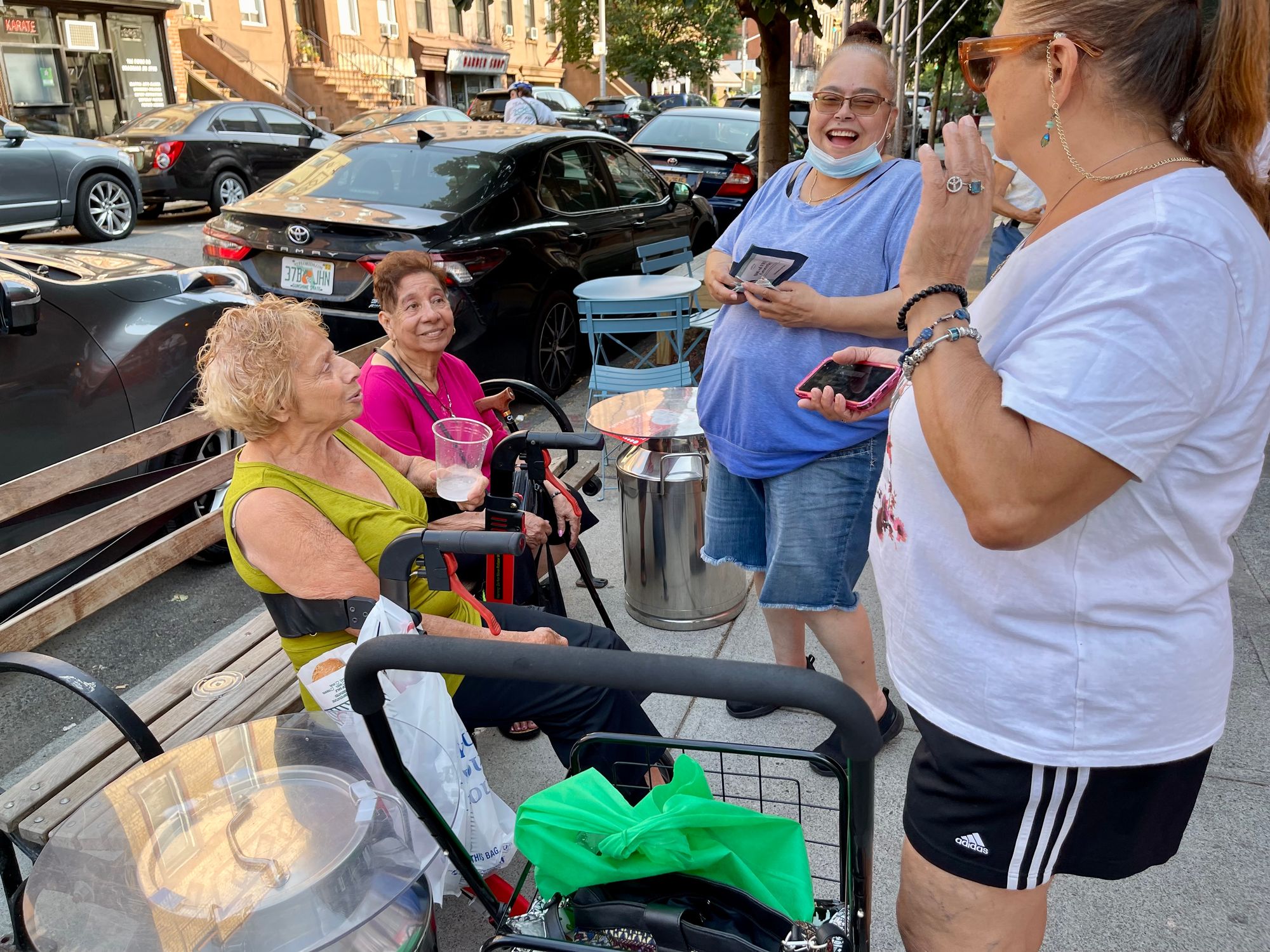
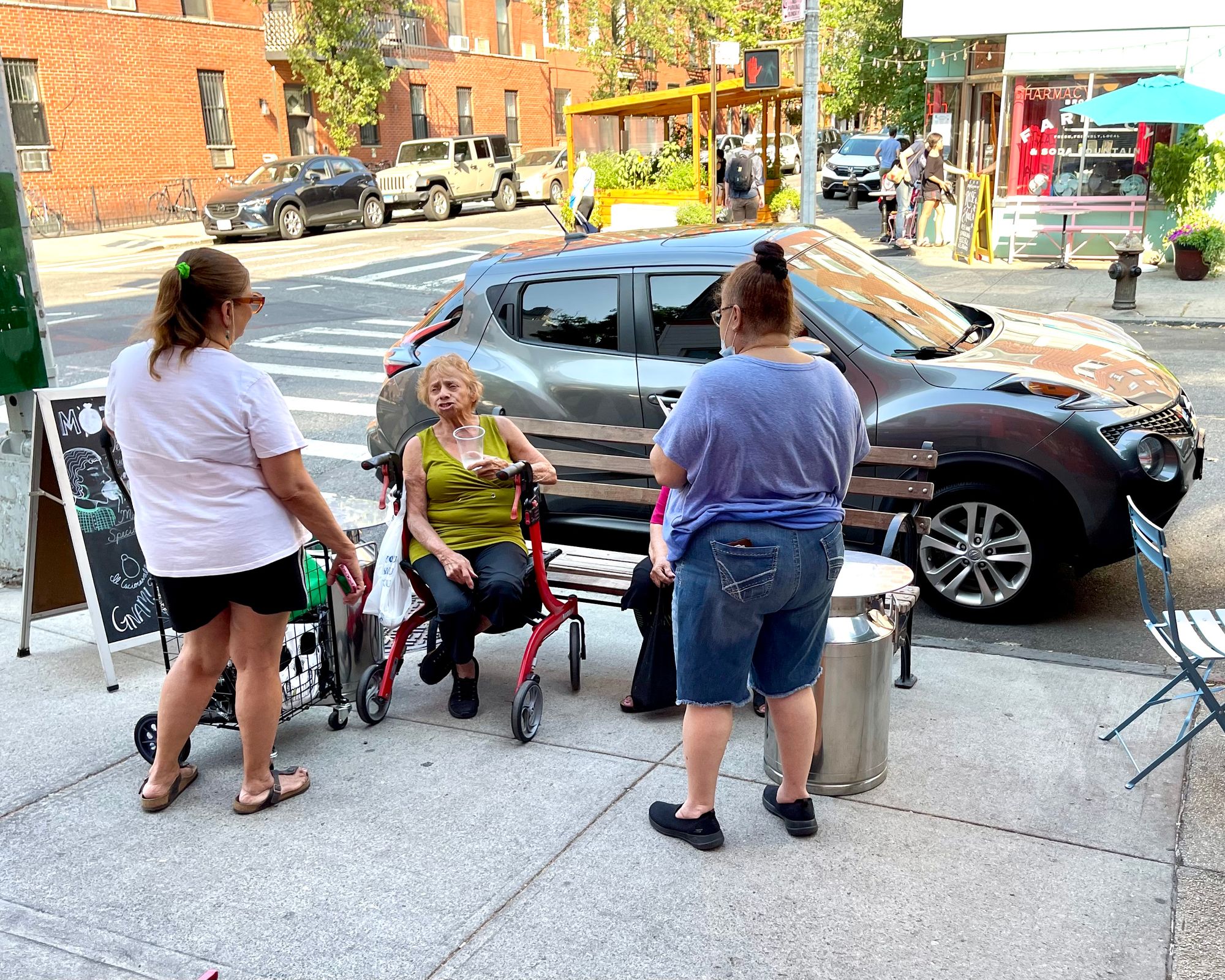
Moonstruck was shot here
Public Seating at a Bus Stop on Court Street
This bench was the only seating at a bus stop in our neighborhood.
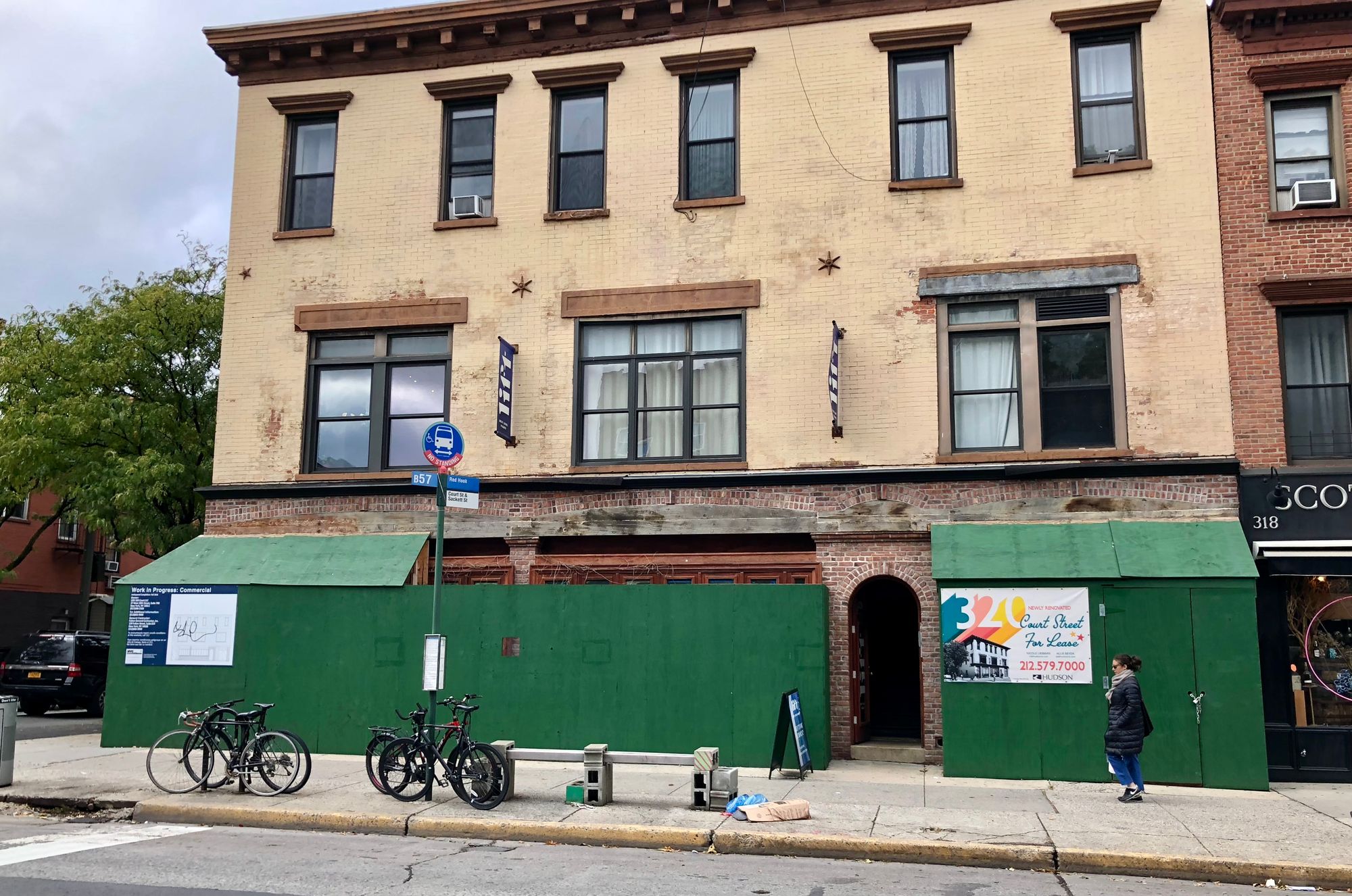
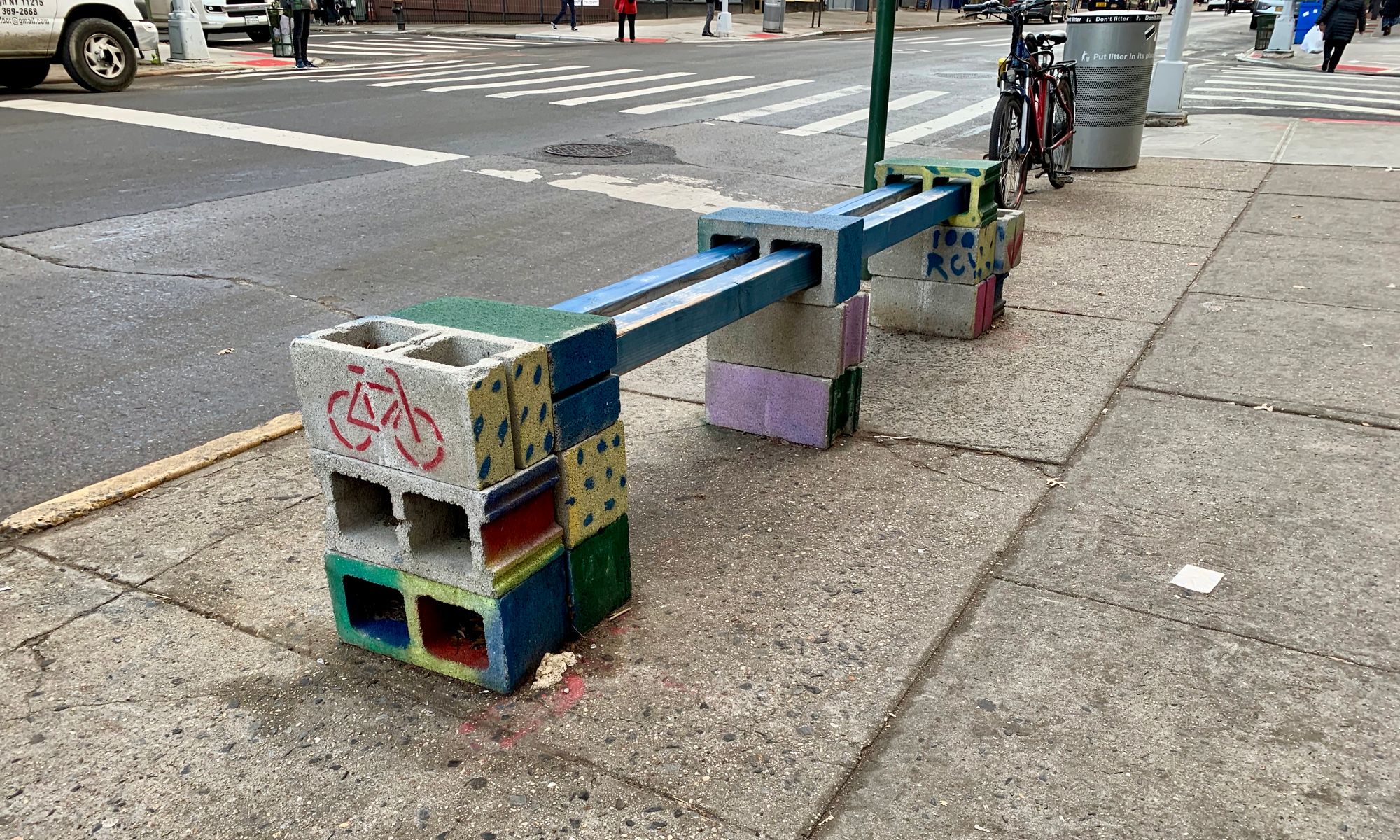
Before the corner was rebuilt
Eventually, this bench was removed and new seating was added next to the handicapped ramp in front of what became a very popular neighborhood restaurant. This new bench is not on the curb, but now serves both for bus waiting and just sitting.
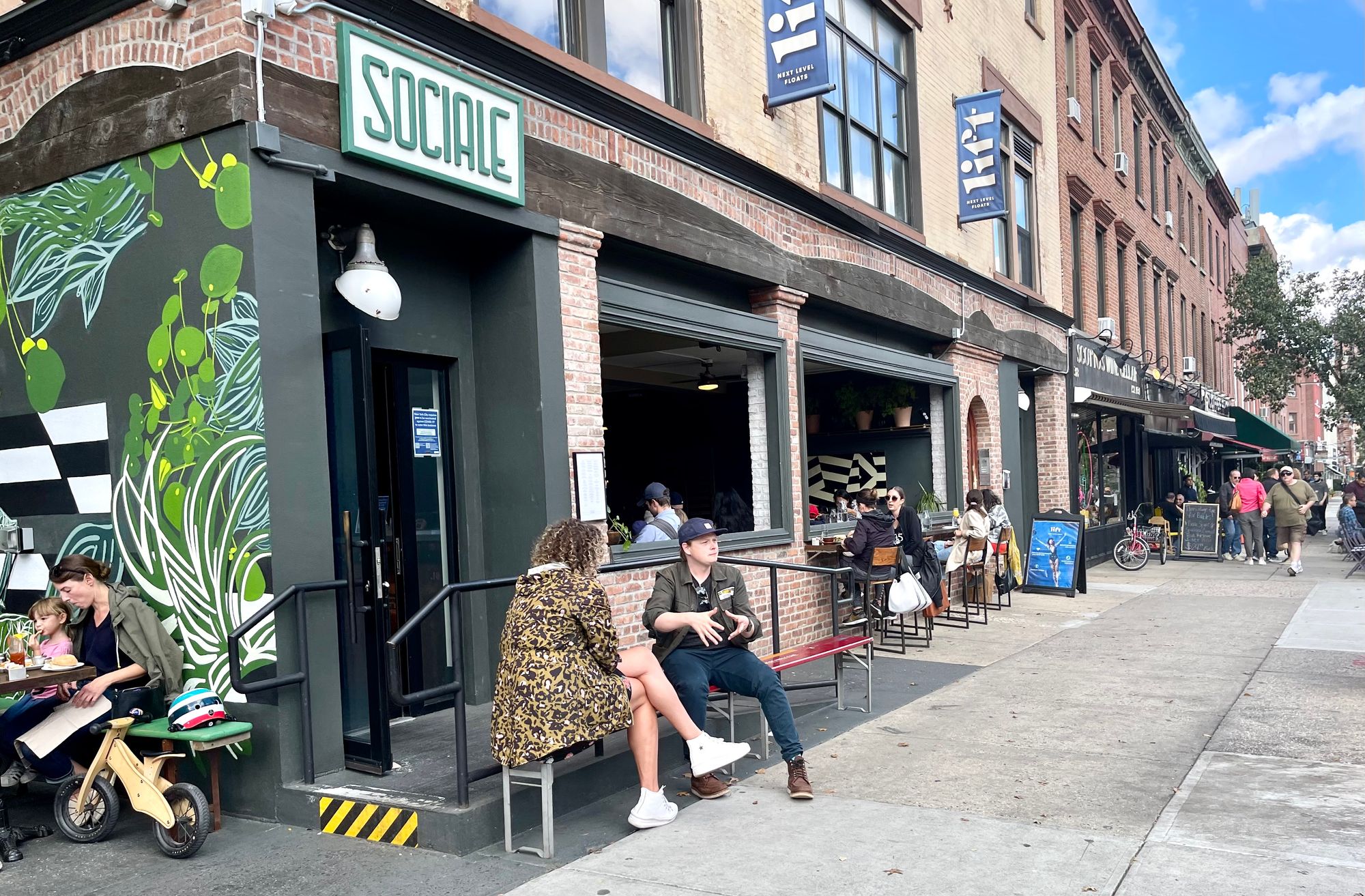
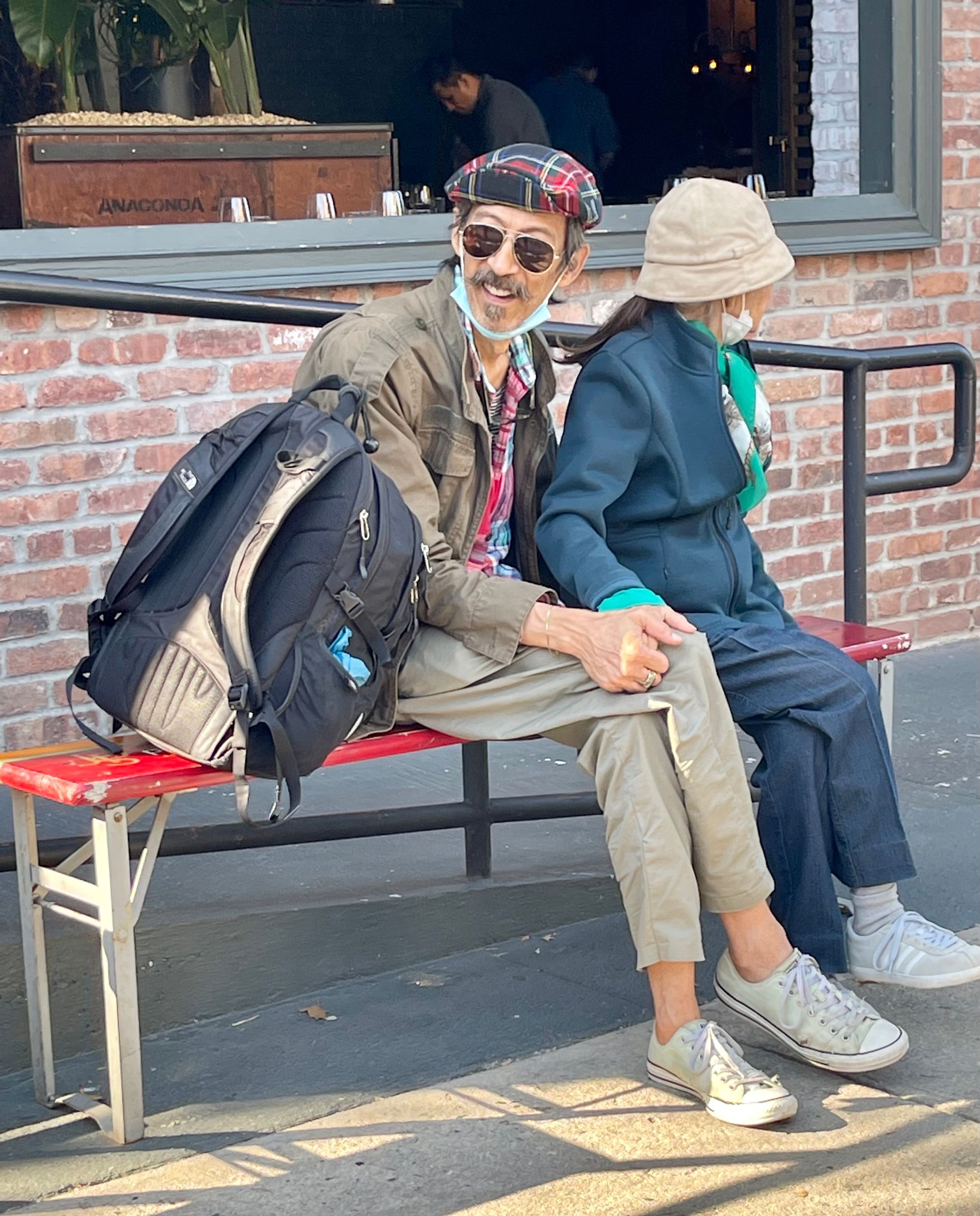
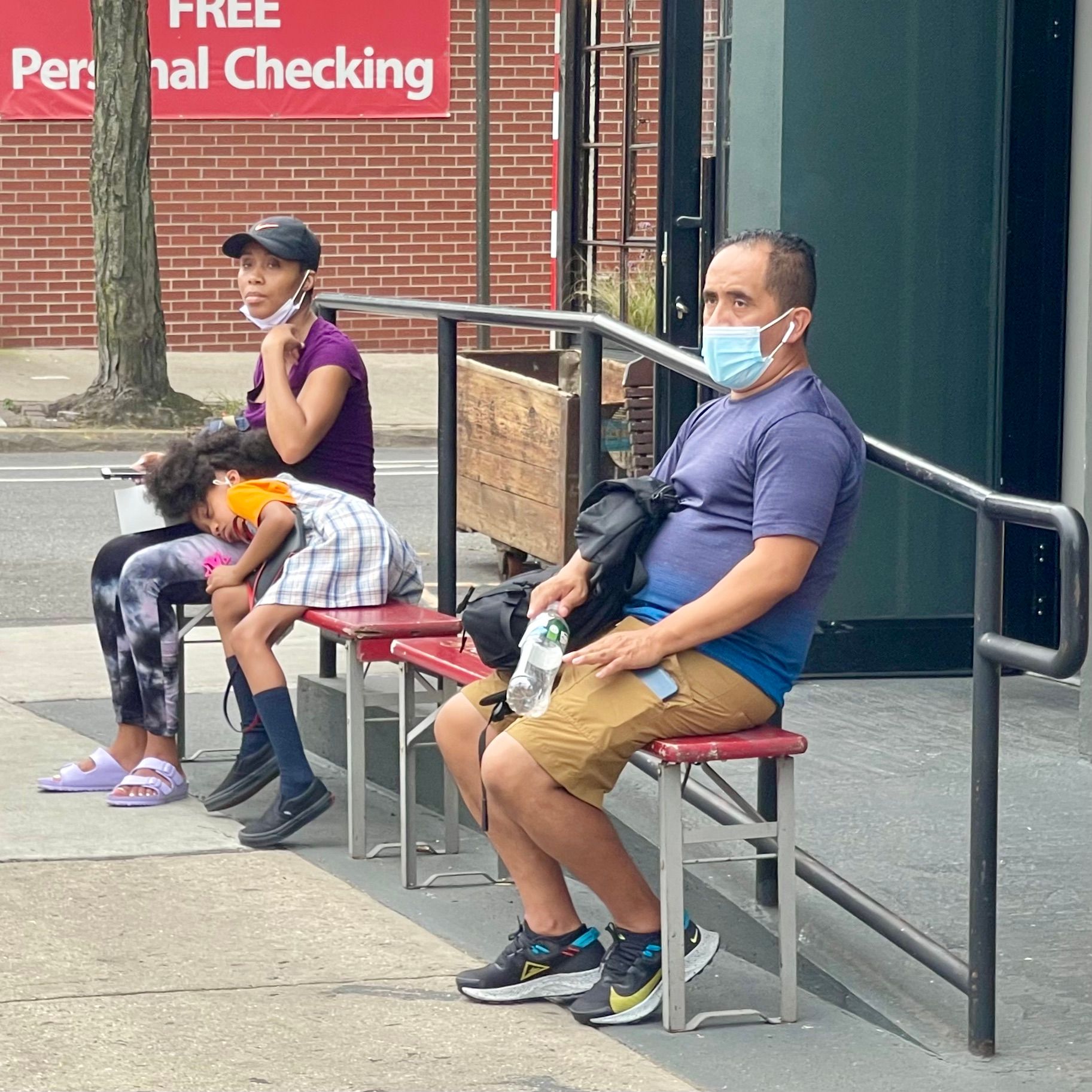
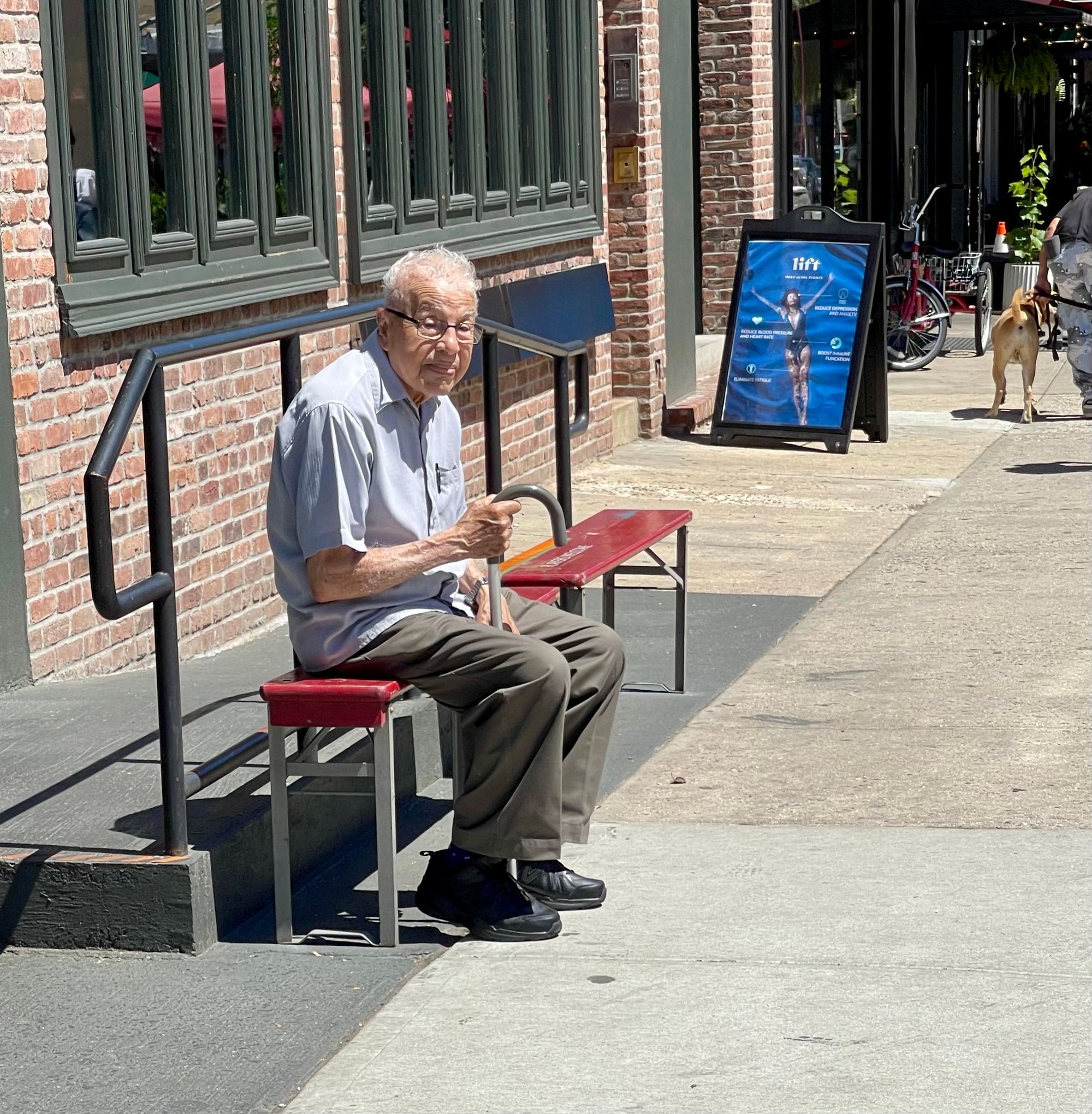
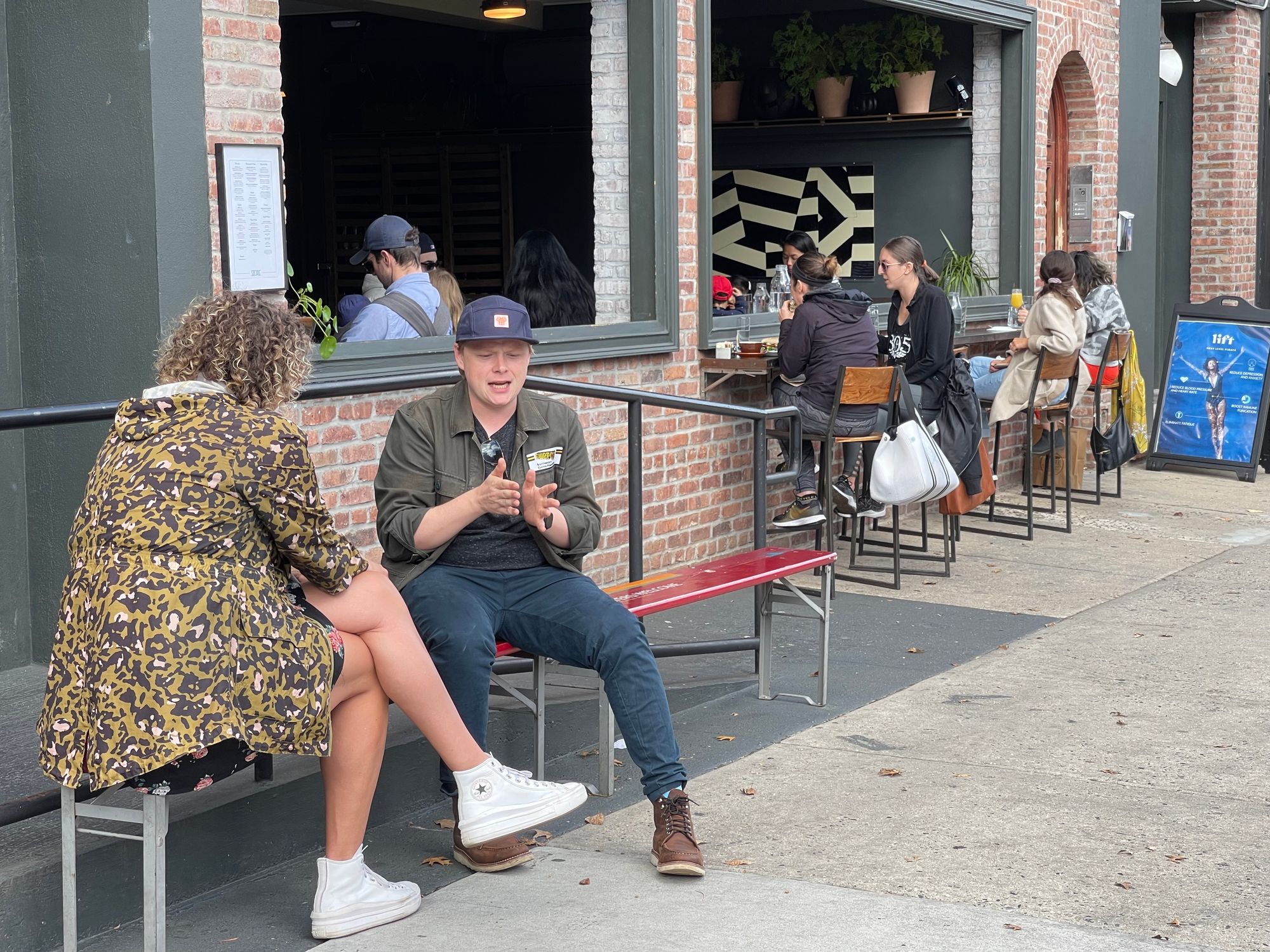
A bench to wait for the bus or just sit and watch the show
It has become a third example in our neighborhood of a corner that integrates public and private seating smoothly, bringing passers-by and travelers into the same social space.
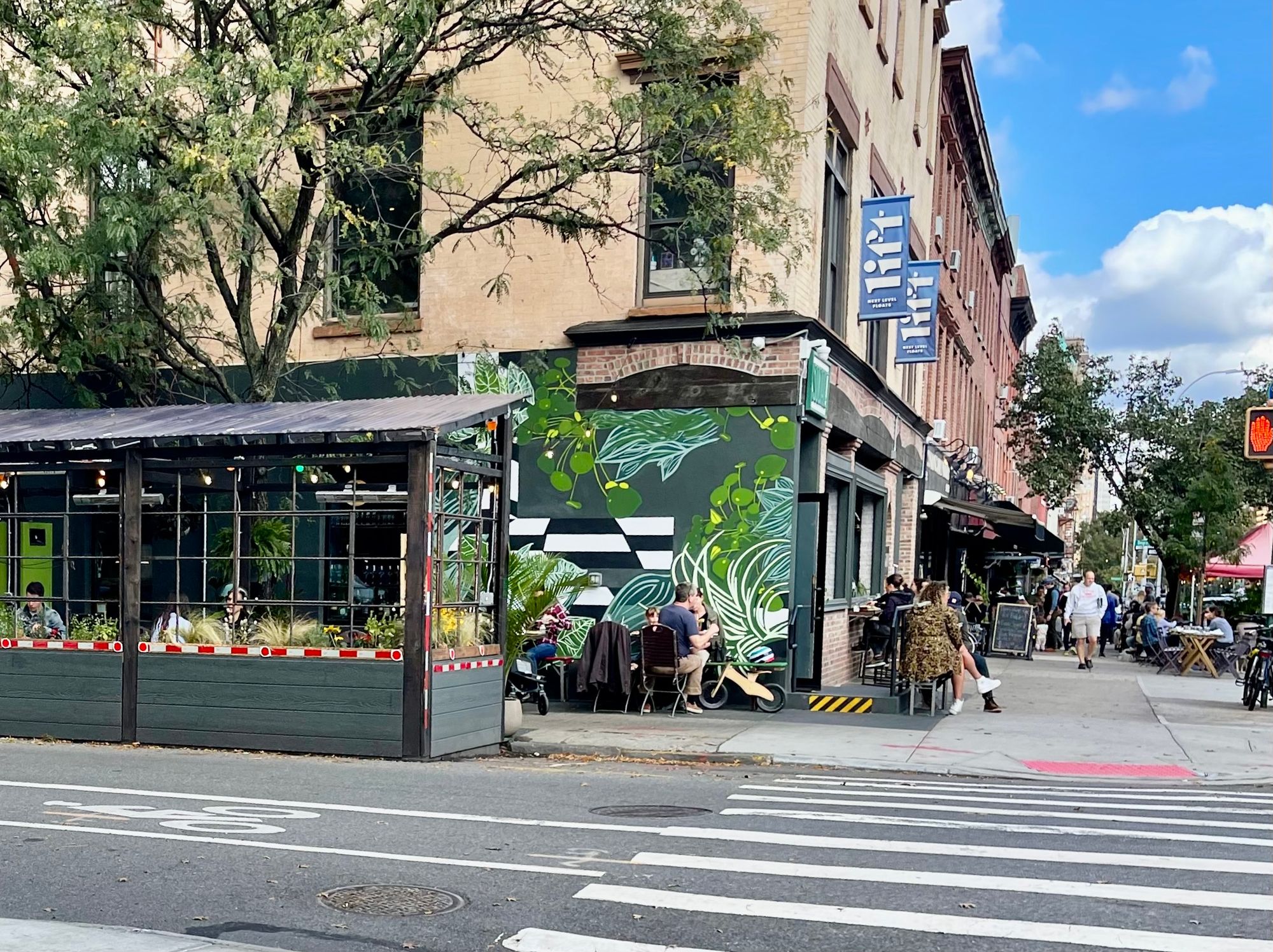
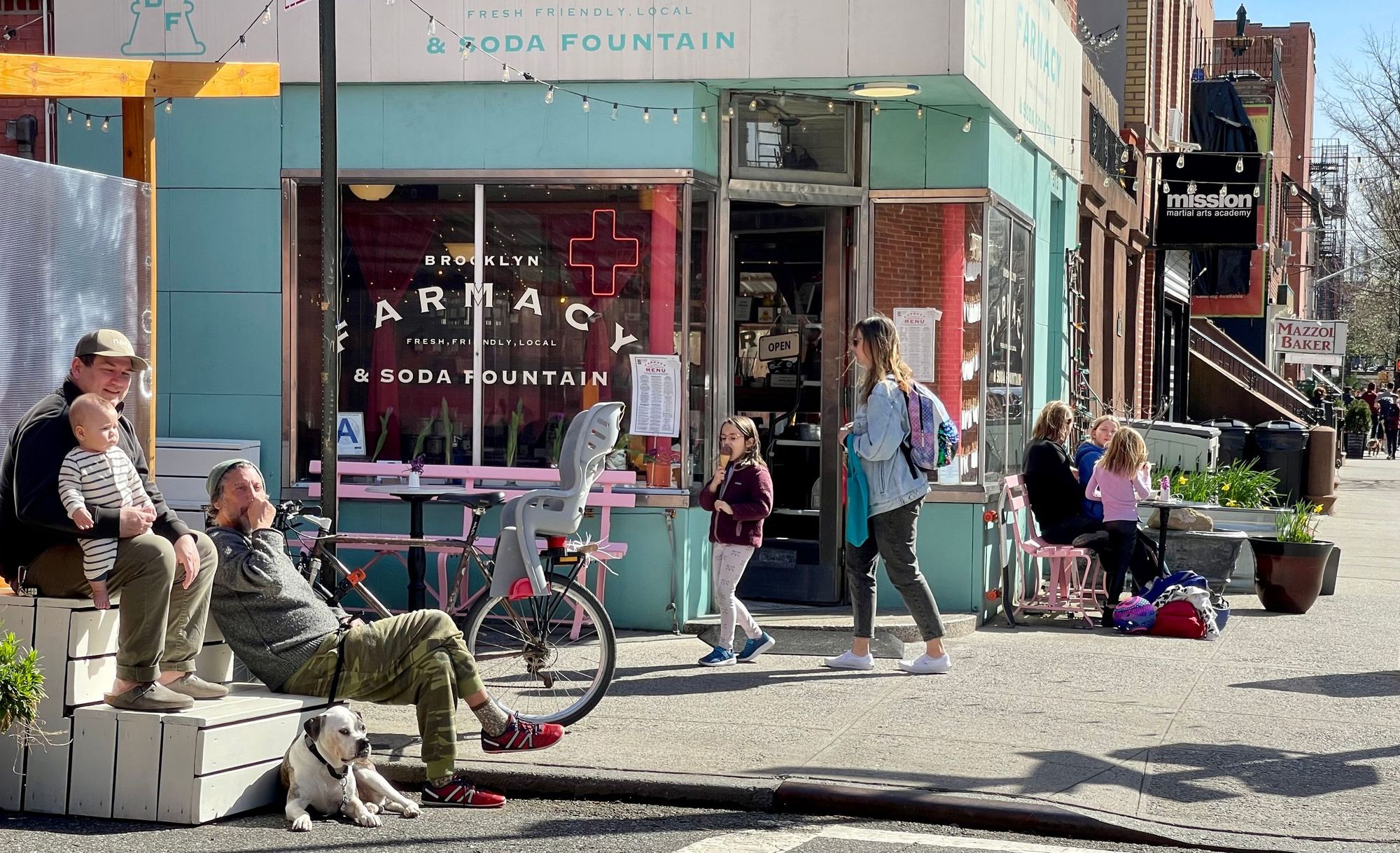
Barcelona
Barcelona's corner seating, designed by Catalán architect, Antoni Gaudí, has become a recognizable emblem and key symbol of Barcelona. Barcelona's Passeig de Gracia takes the grand prize for multiple canted corners combined with seating, which create unique gathering plazas.
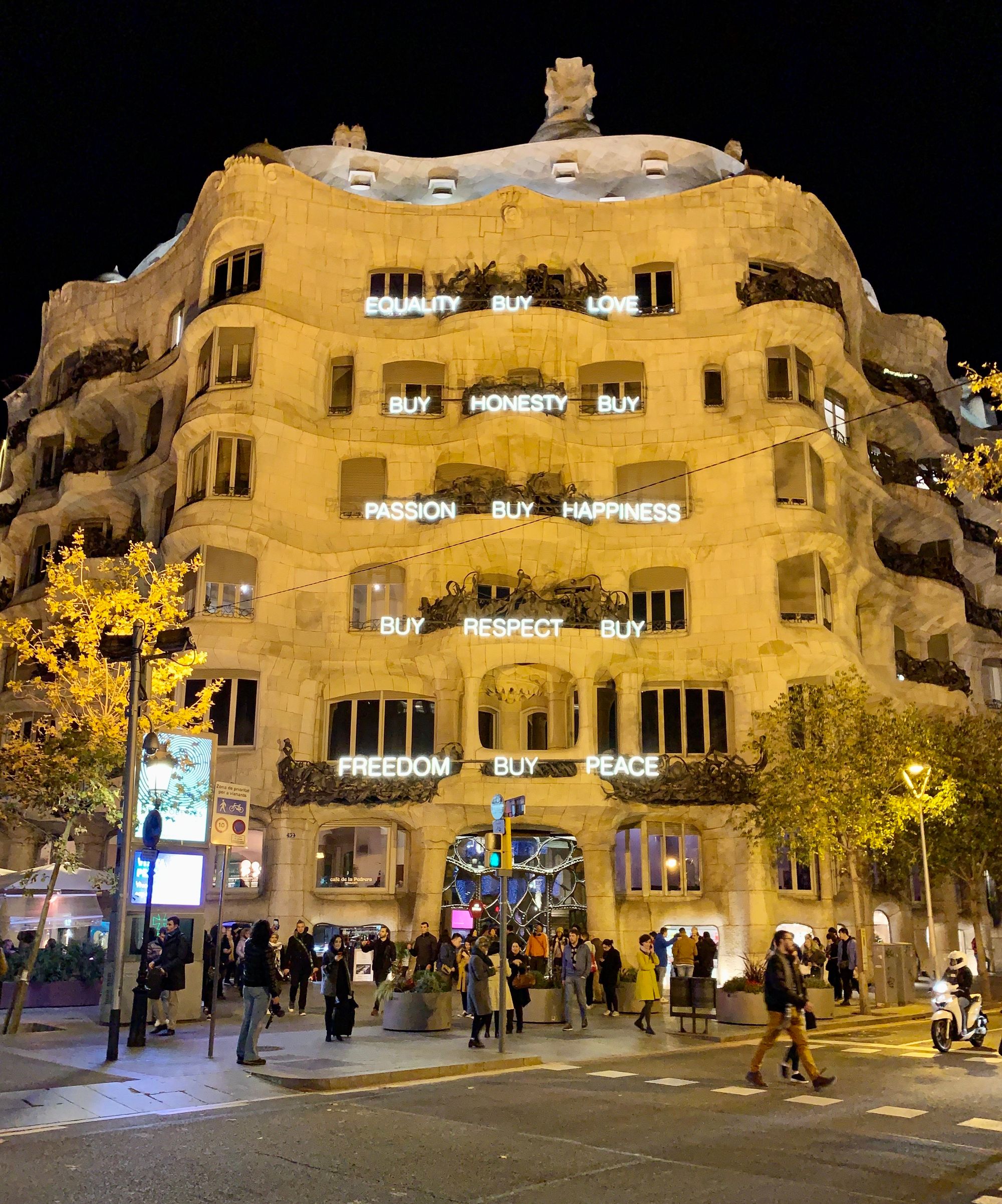
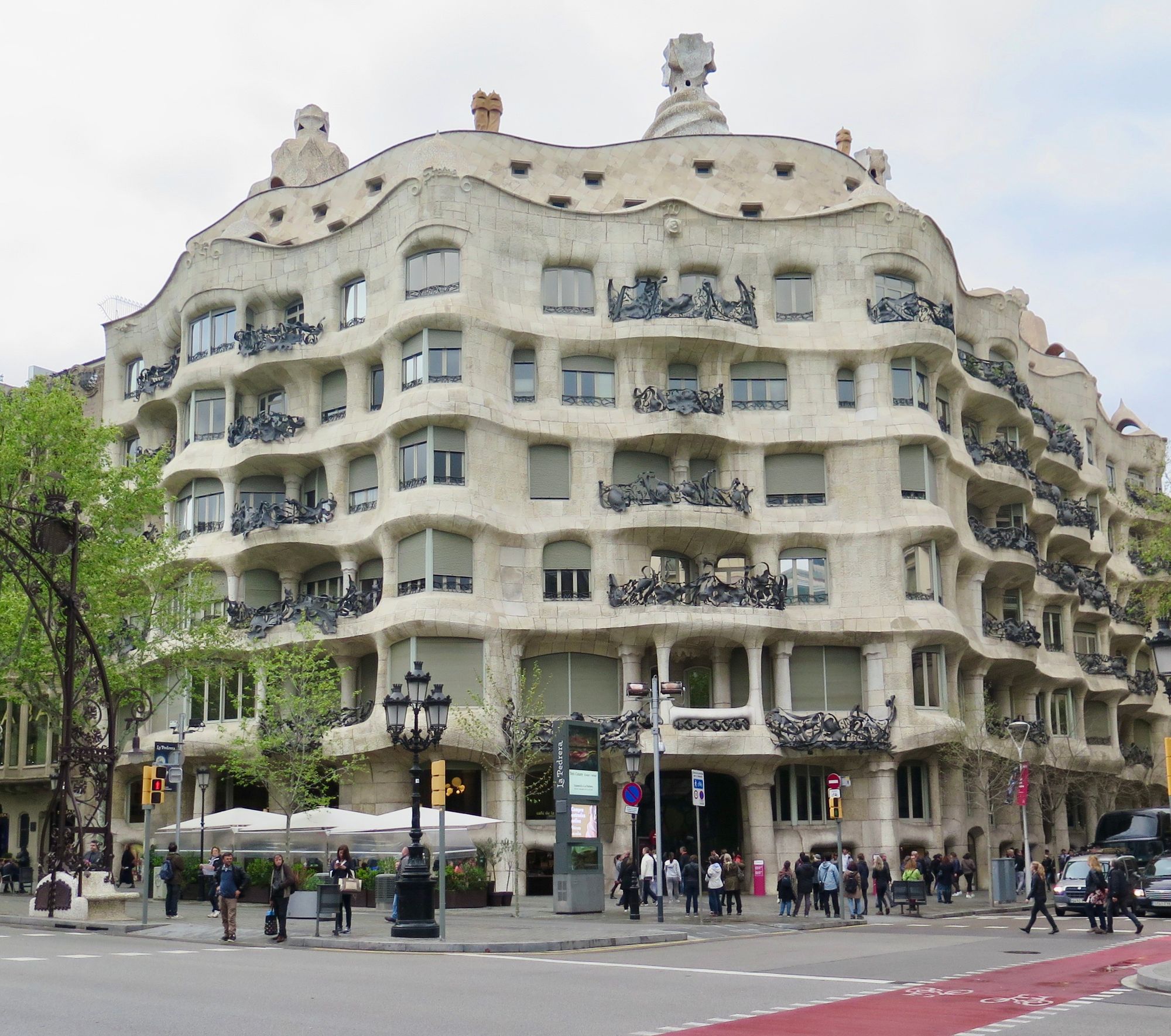
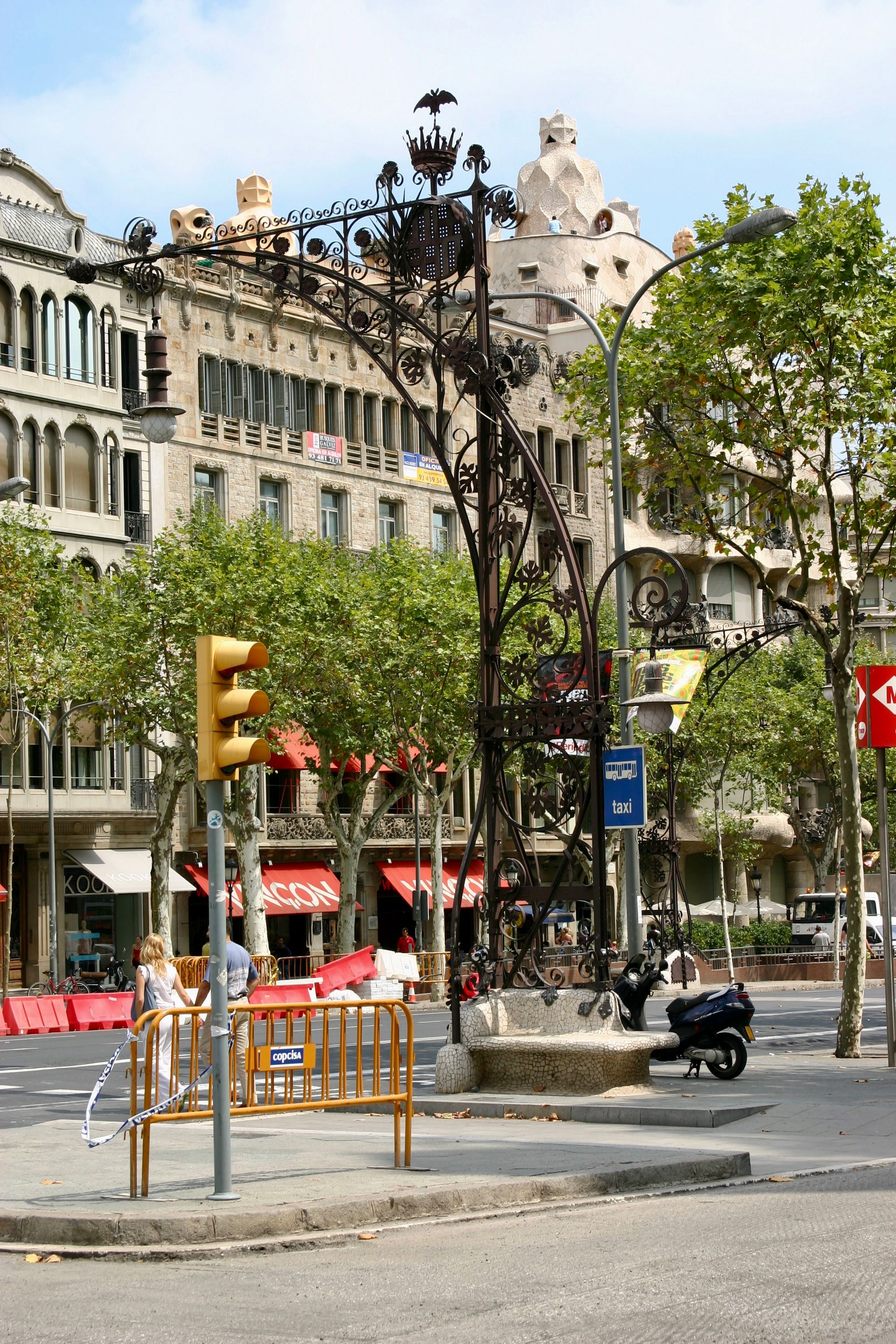
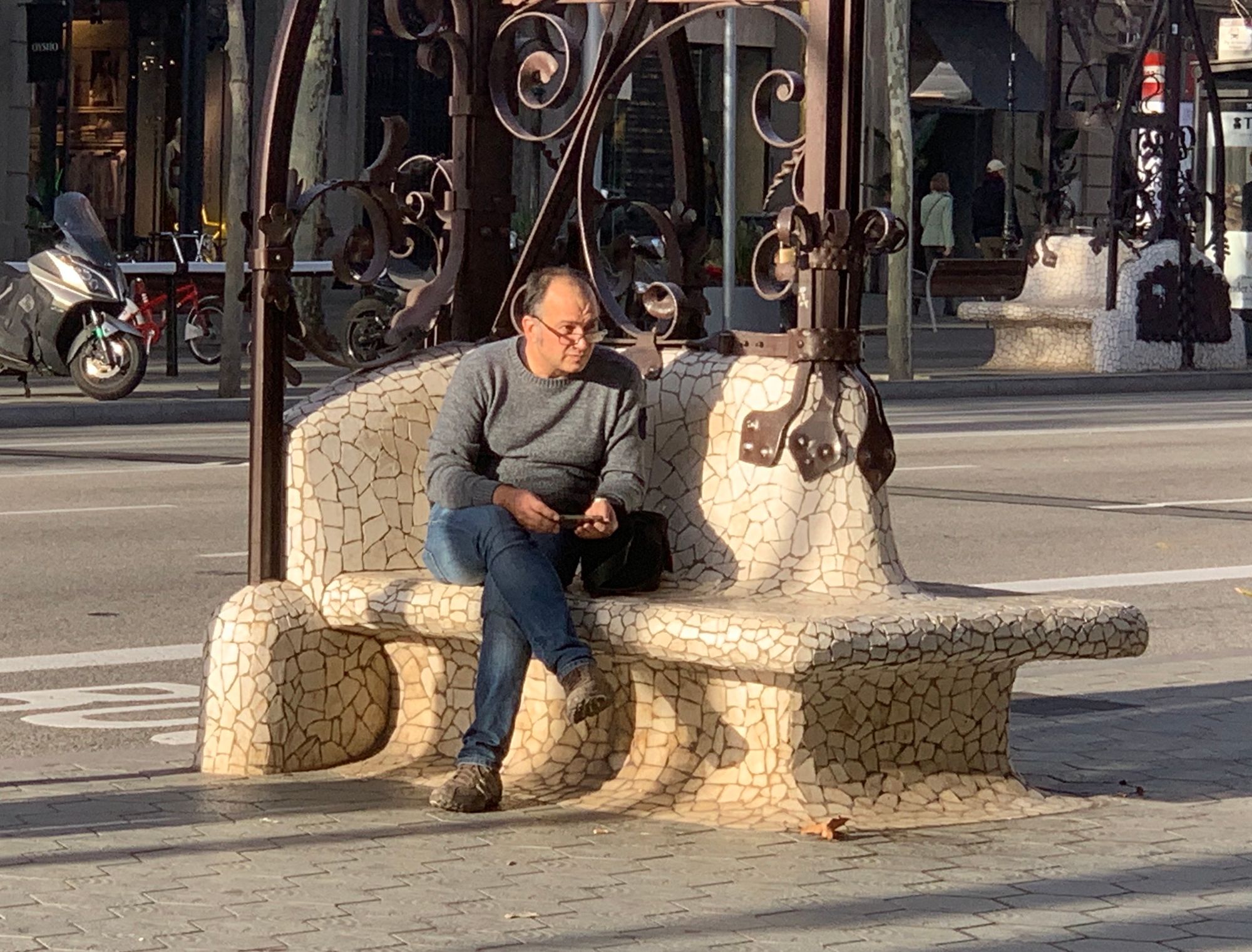

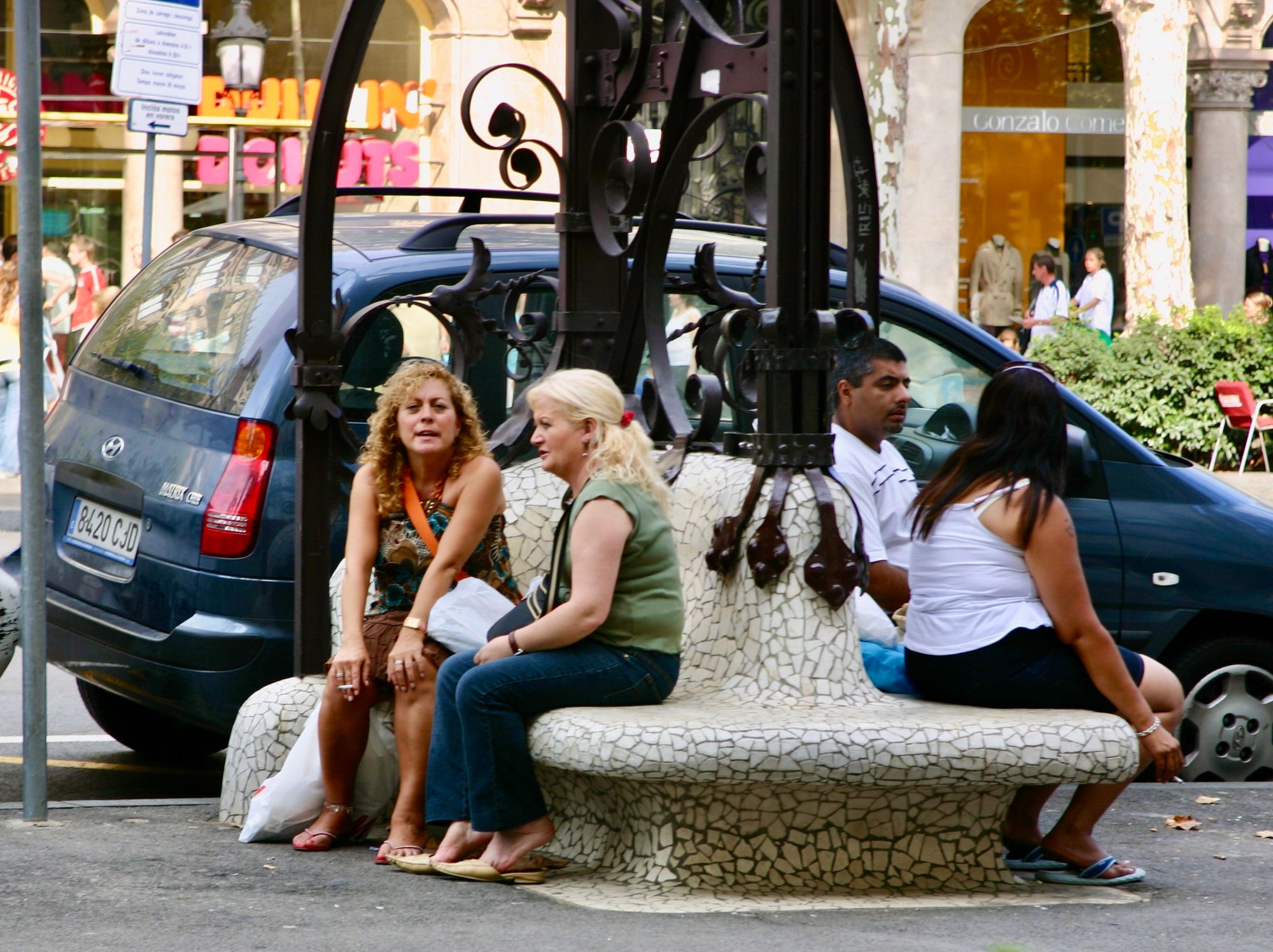
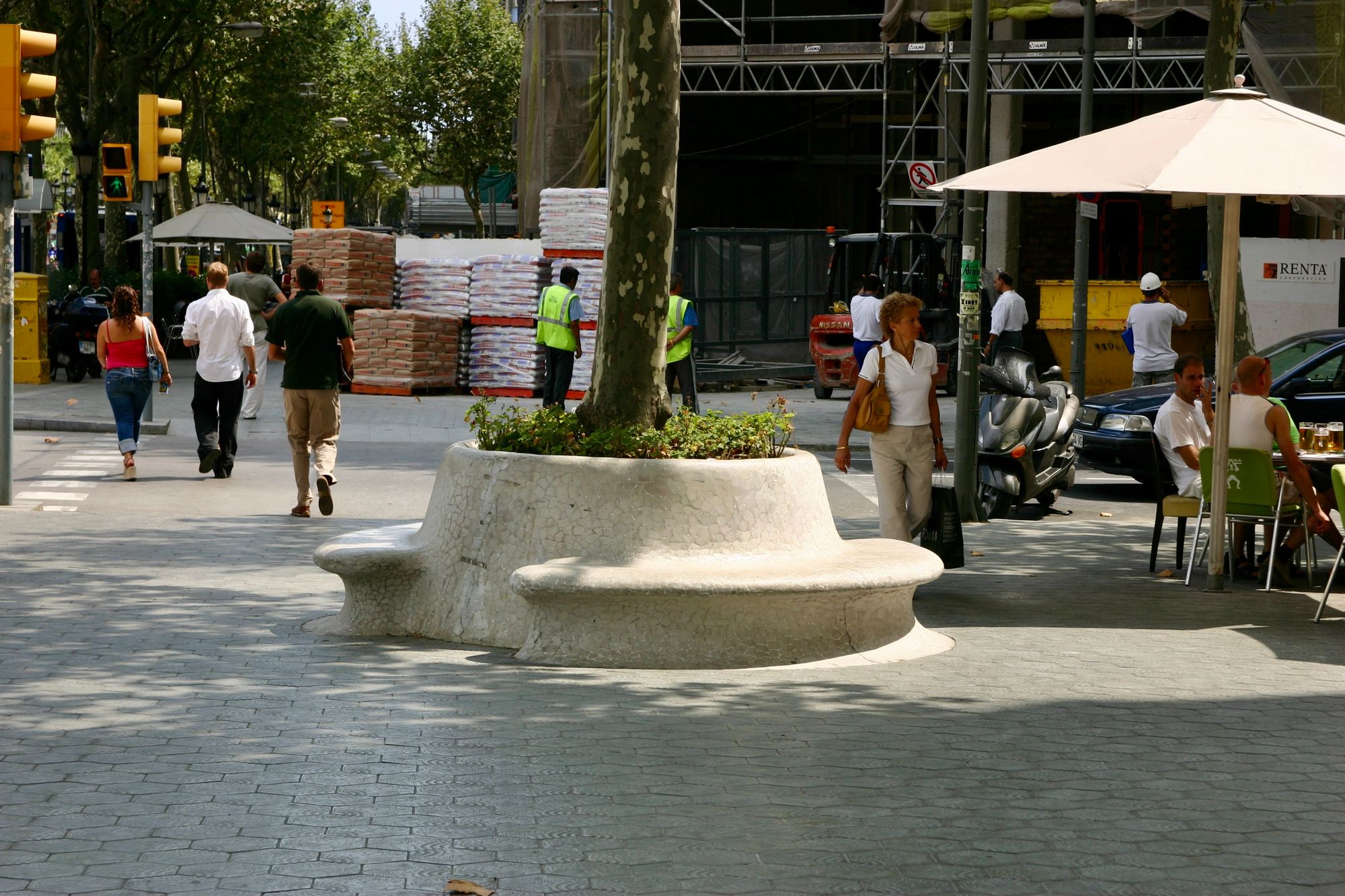
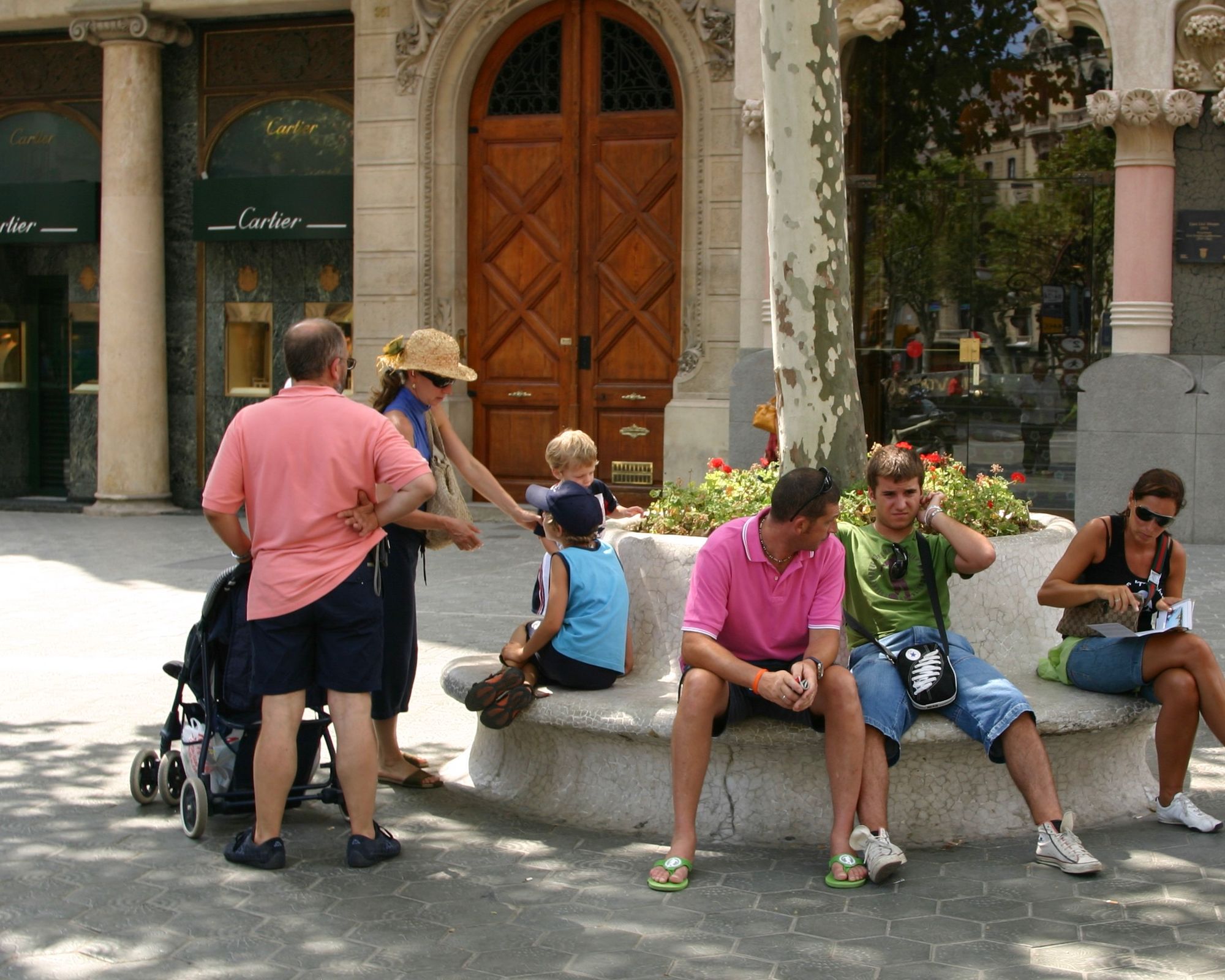
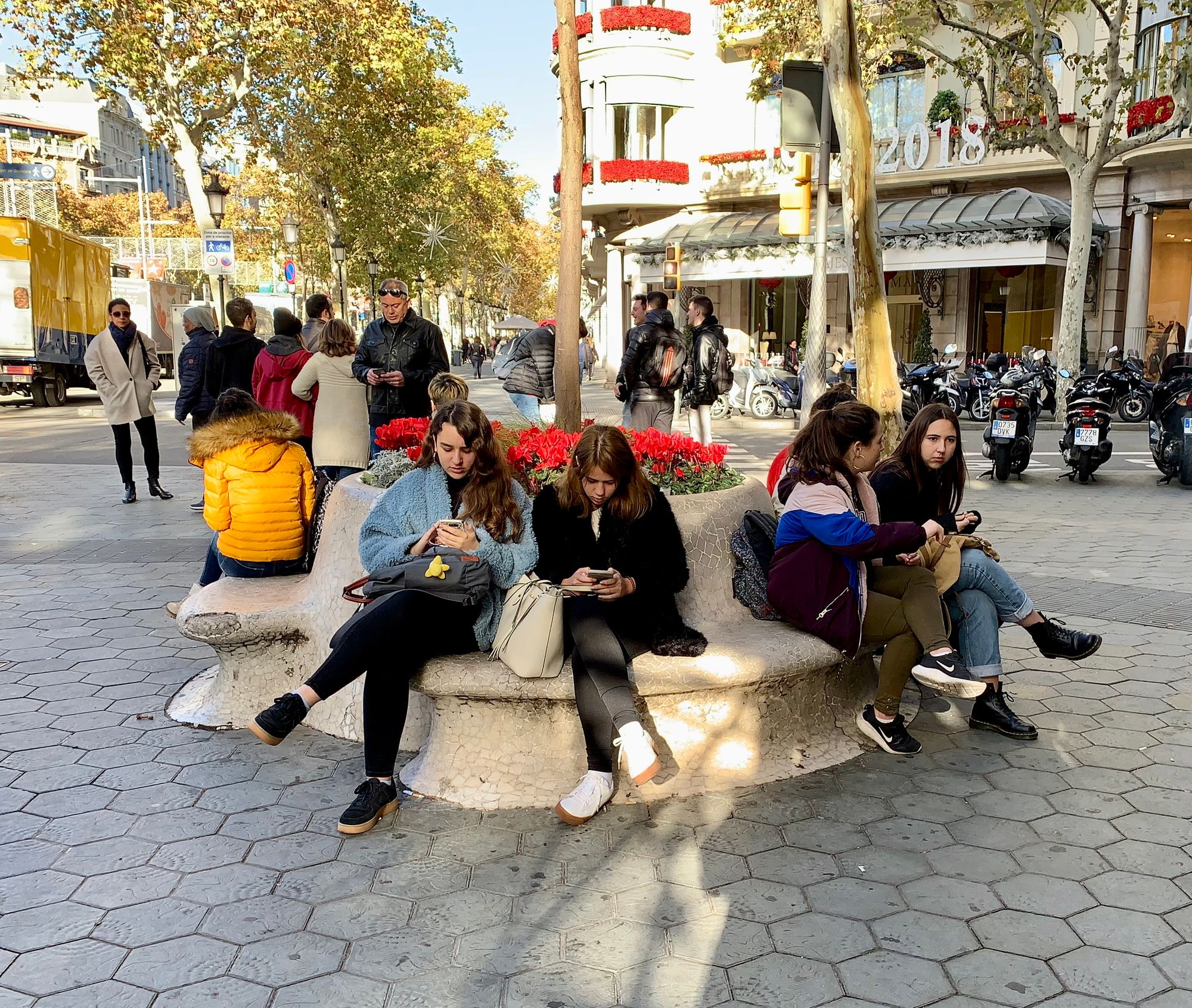
Barcelona is one of our favorite cities. For more of our thinking check out our collection of posts on the wonderful city.
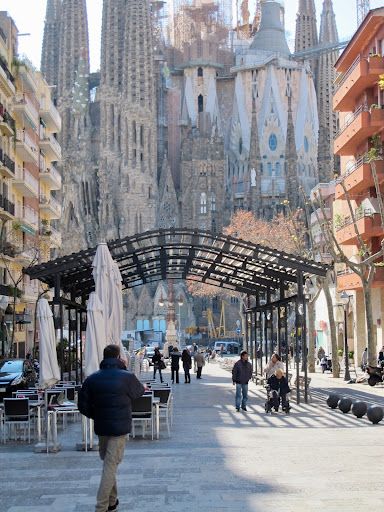
Buenos Aires
Buenos Aires also has a few corners with public seating, but many more have canted corners where there's much more space for gathering. In those, the exposure for individual stores/restaurants at the corners is significantly enhanced.
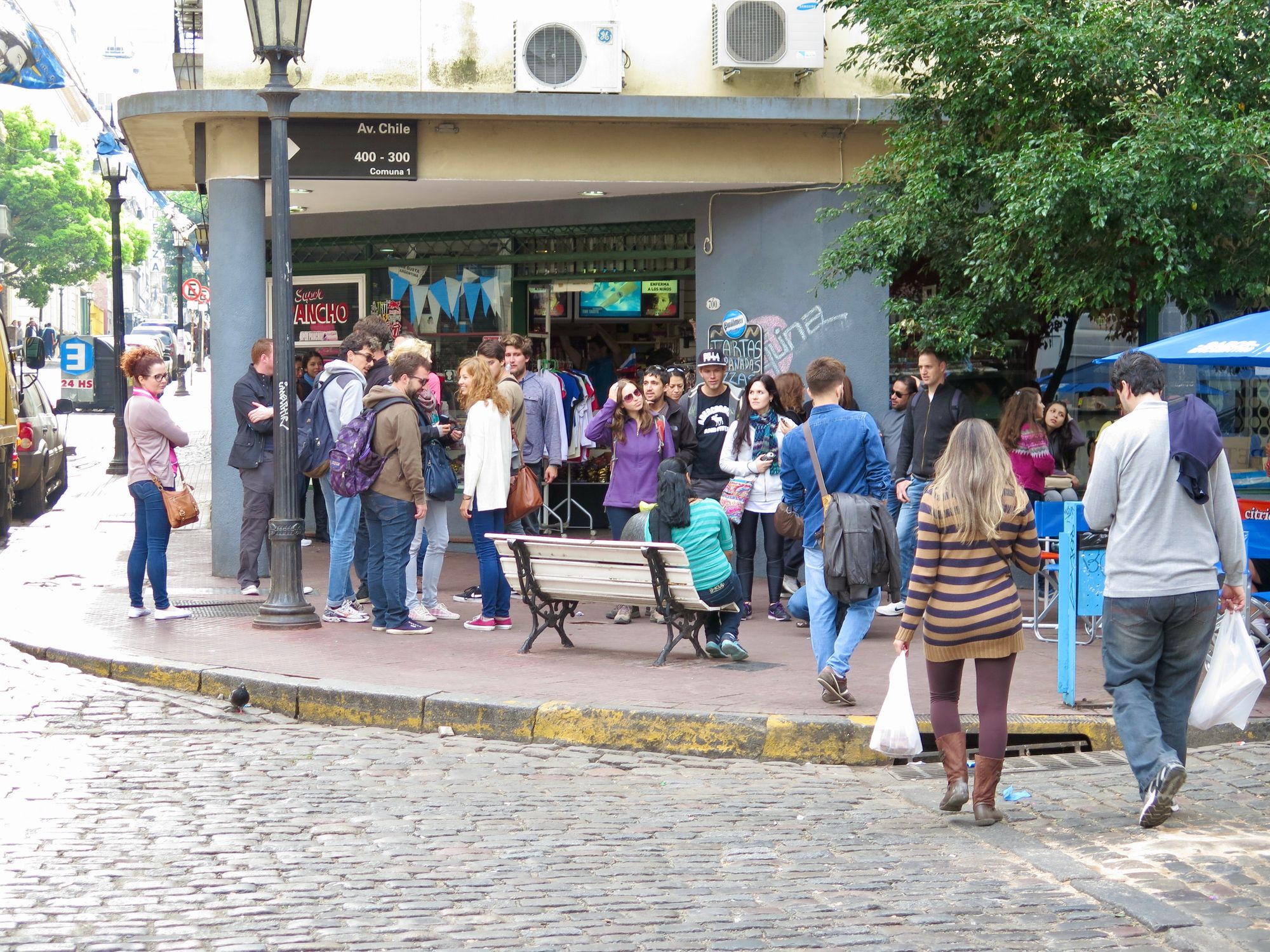
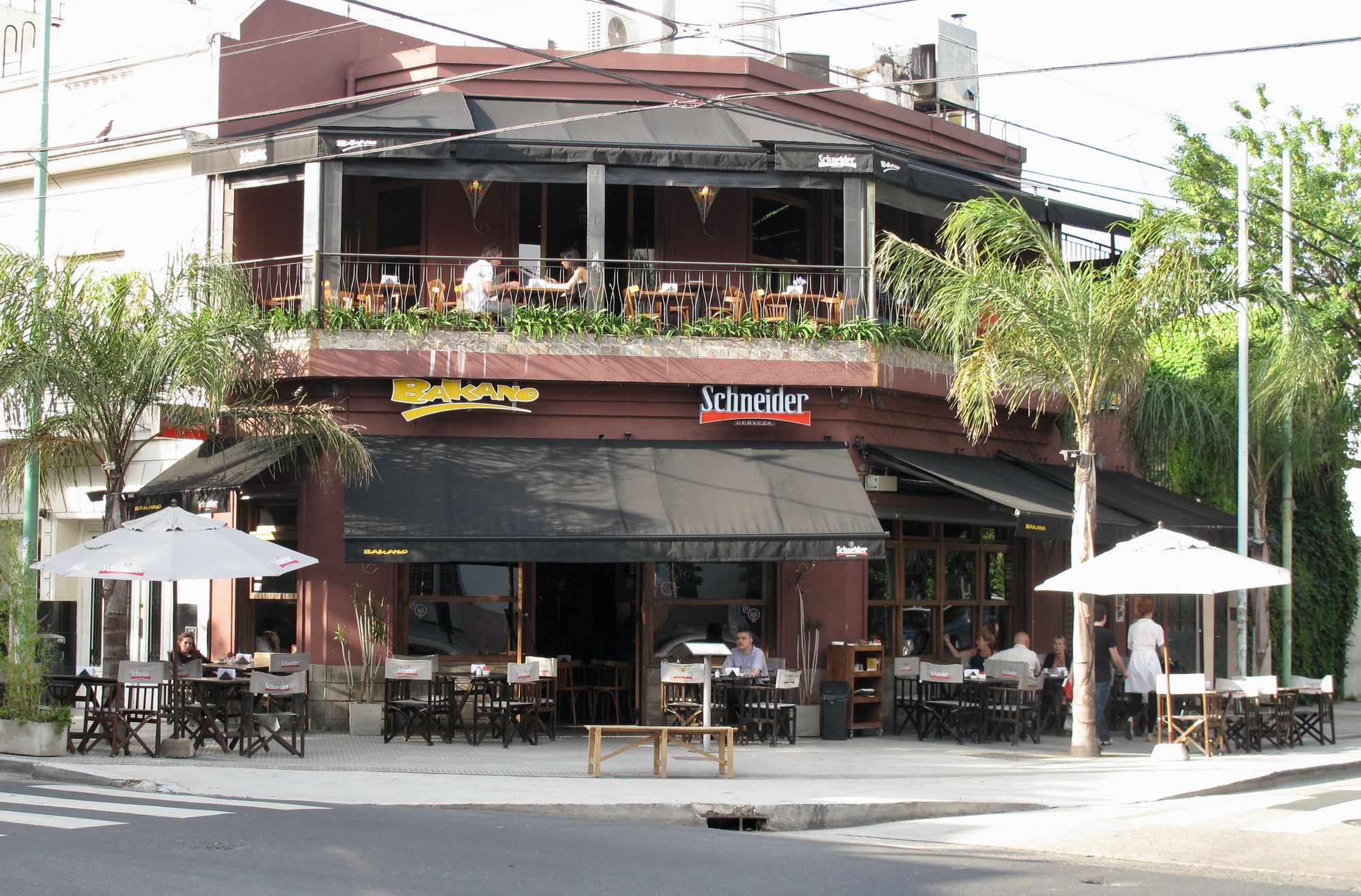
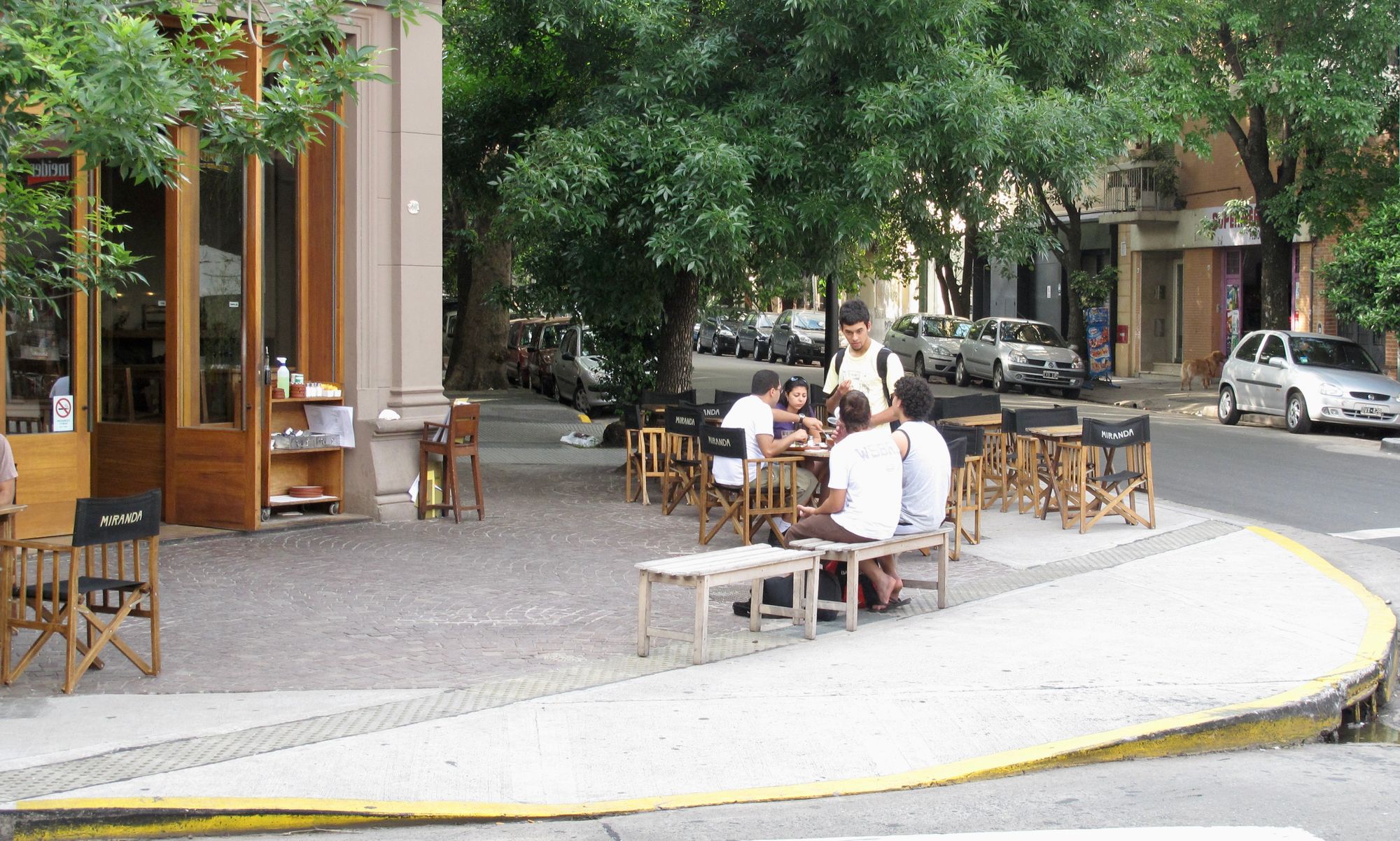
These examples of public seating on the corner and cafe seating on both sides is unusual but certainly welcoming
This one in San Telmo is a favorite for men hanging out. The stone slab and bollard create a focal point where people sit and conversations start.
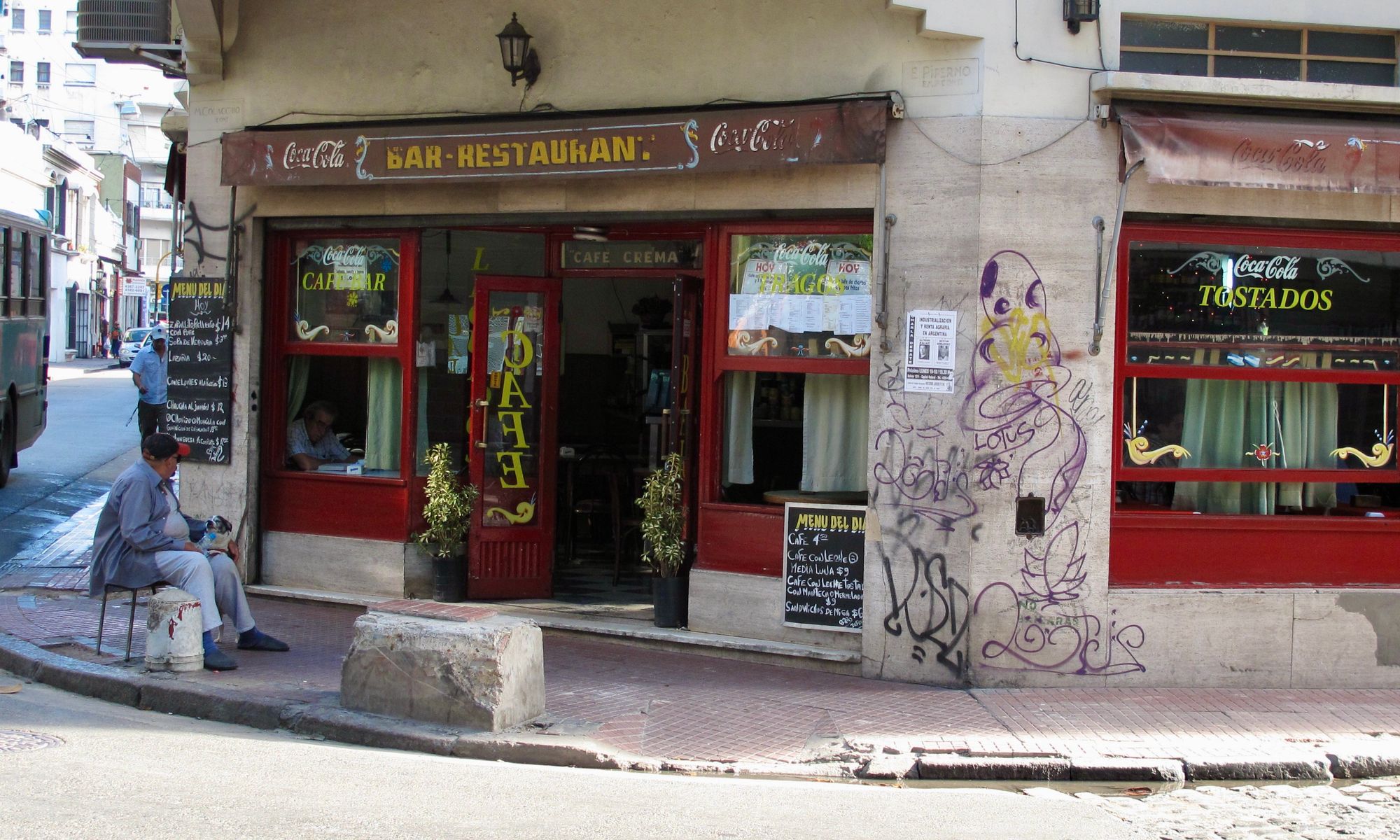
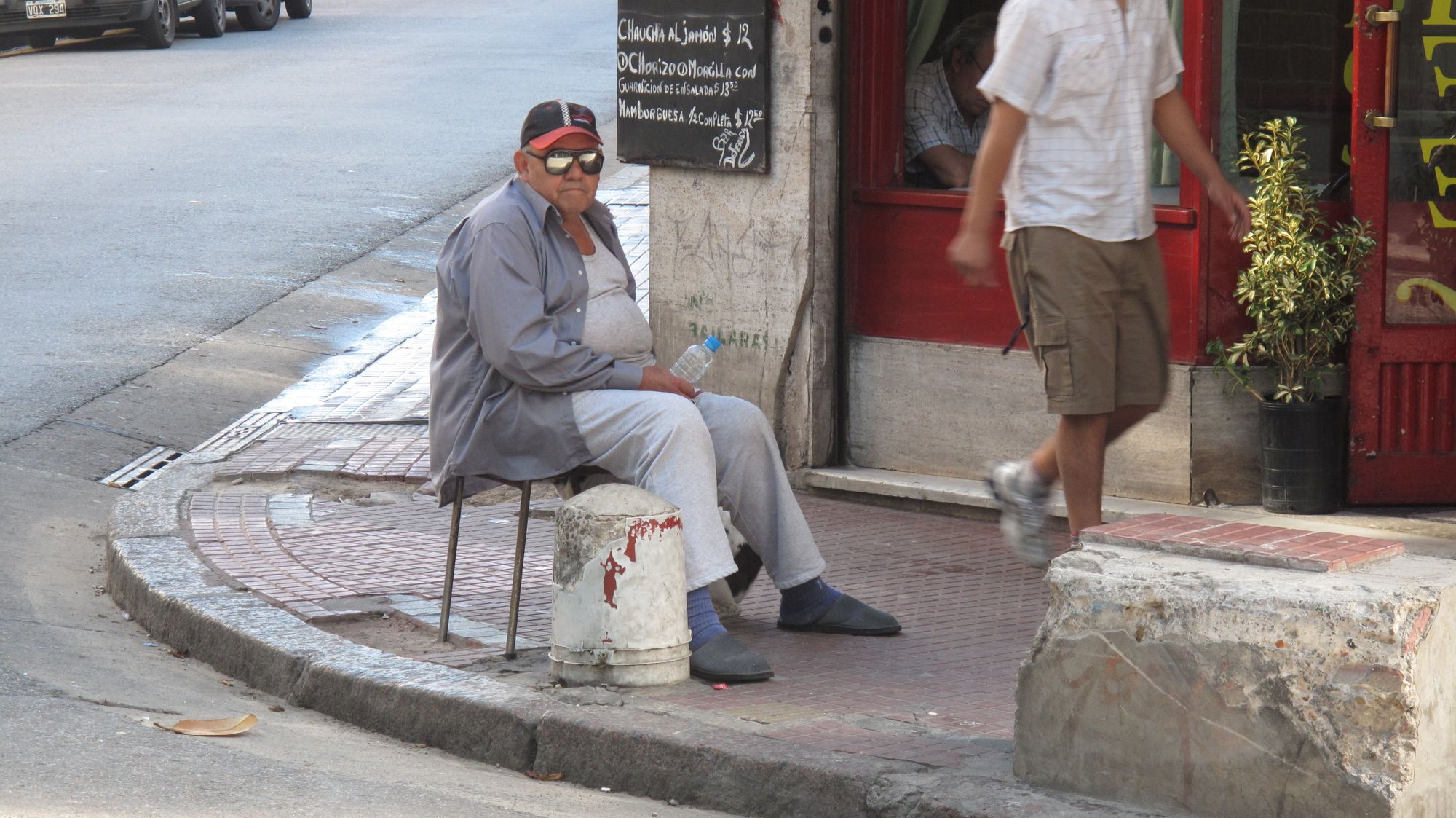
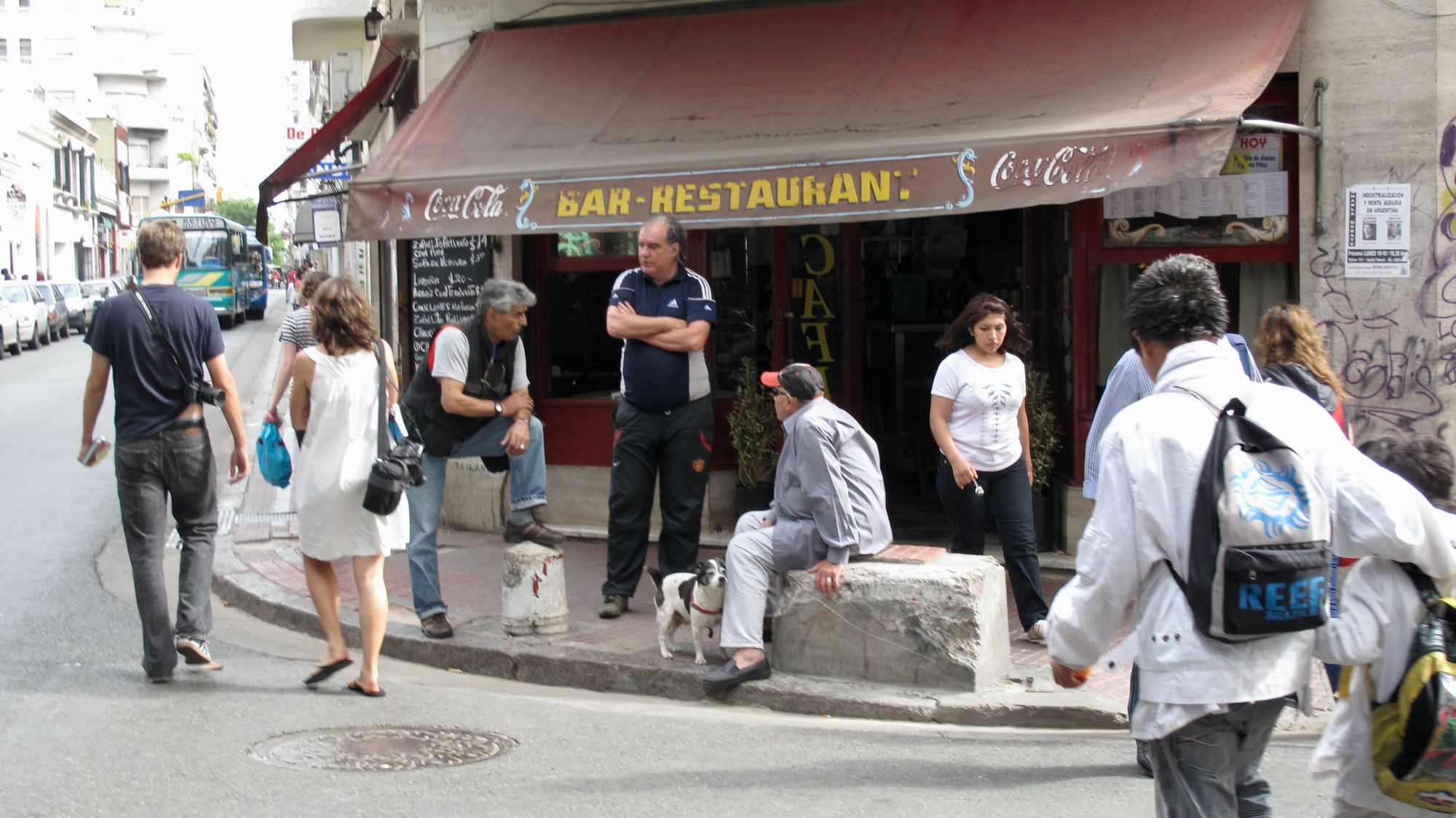
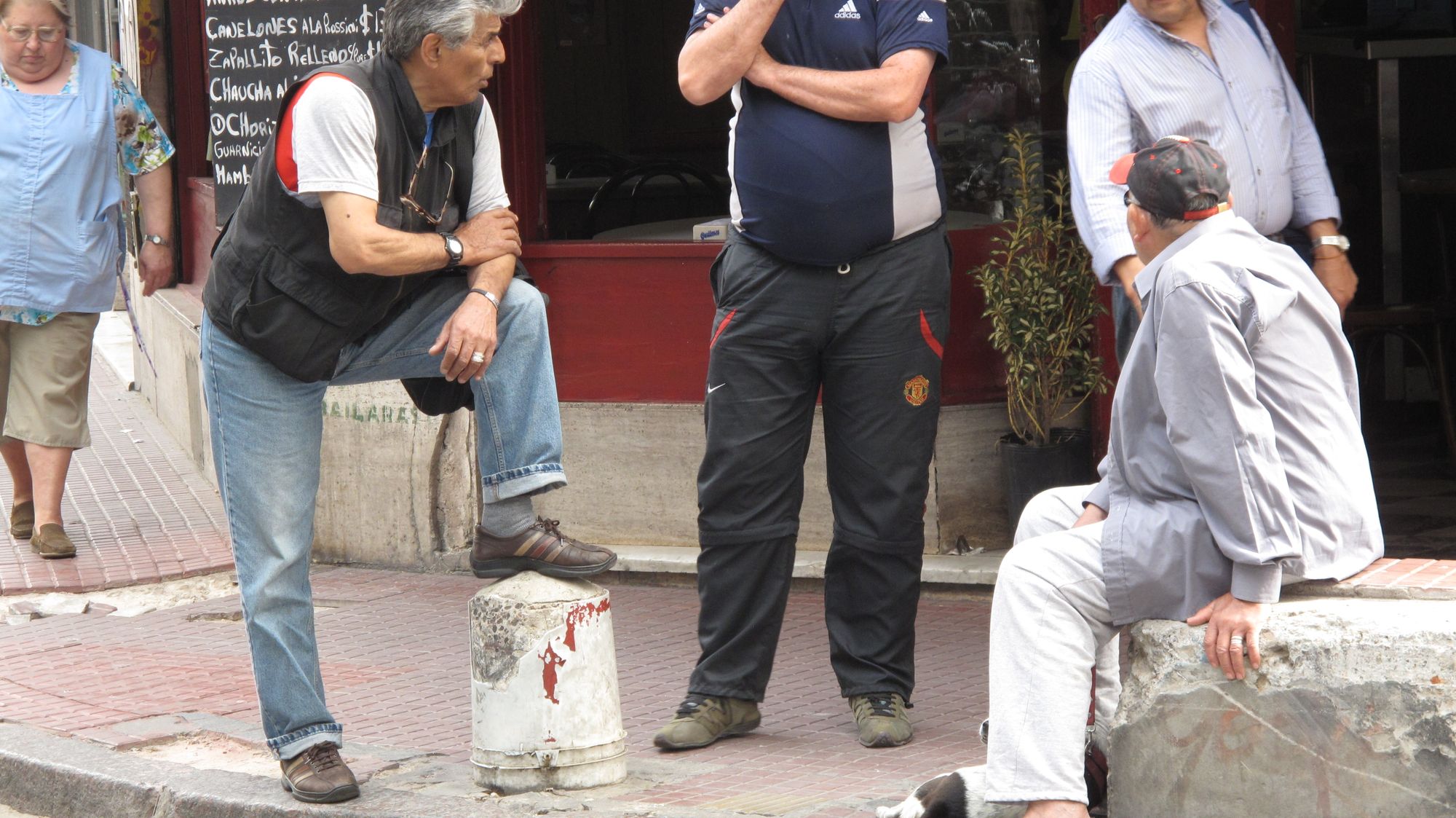
Paris
Paris is one of the best cities we know when it comes to creating café corners — but could use some help with public seating at the corners. The only one we could find is the corner below. One exception is located where the historic Pont Neuf Bridge intersects with the Left Bank along the Seine. Few corners have this large amount of space.
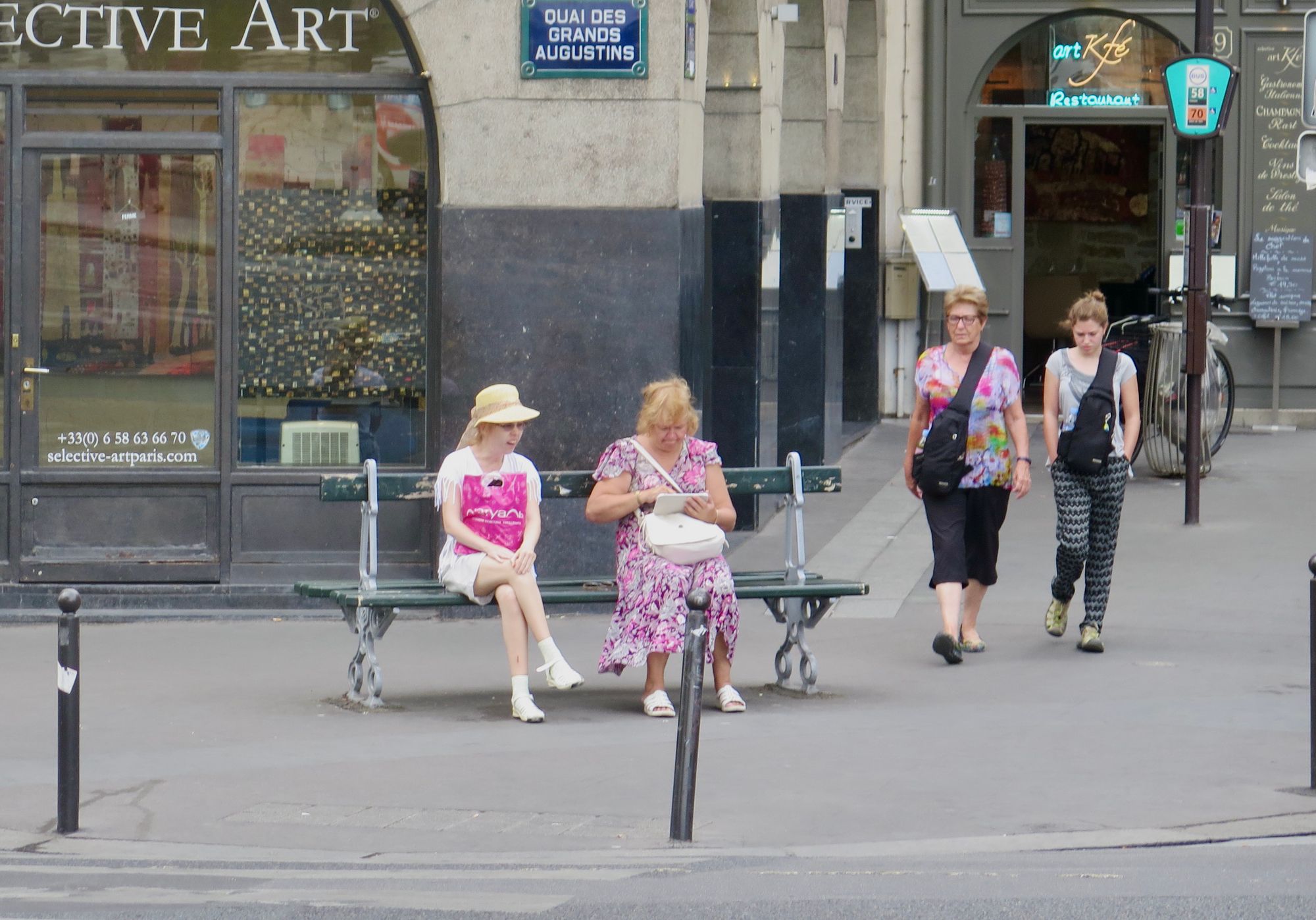
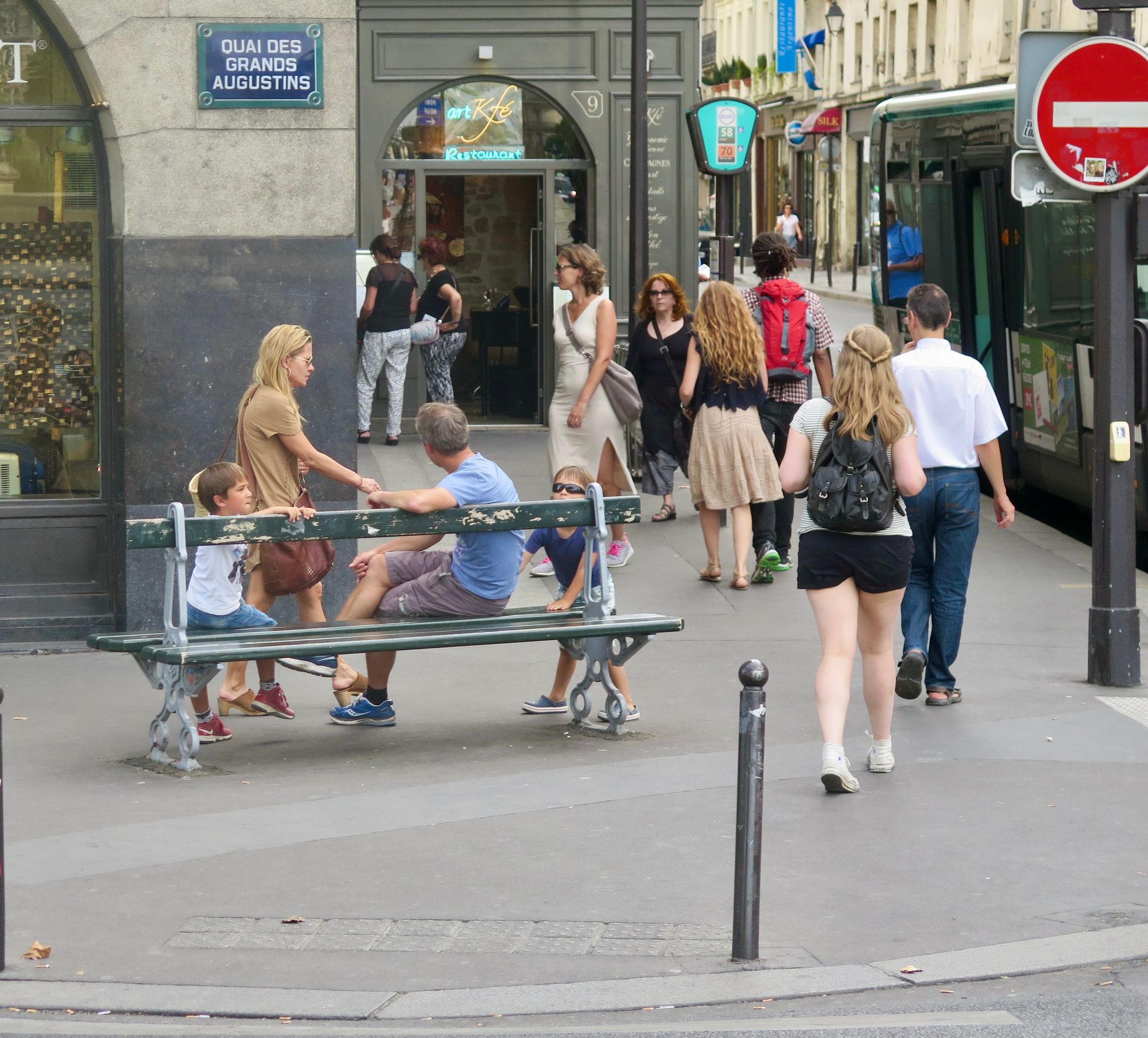

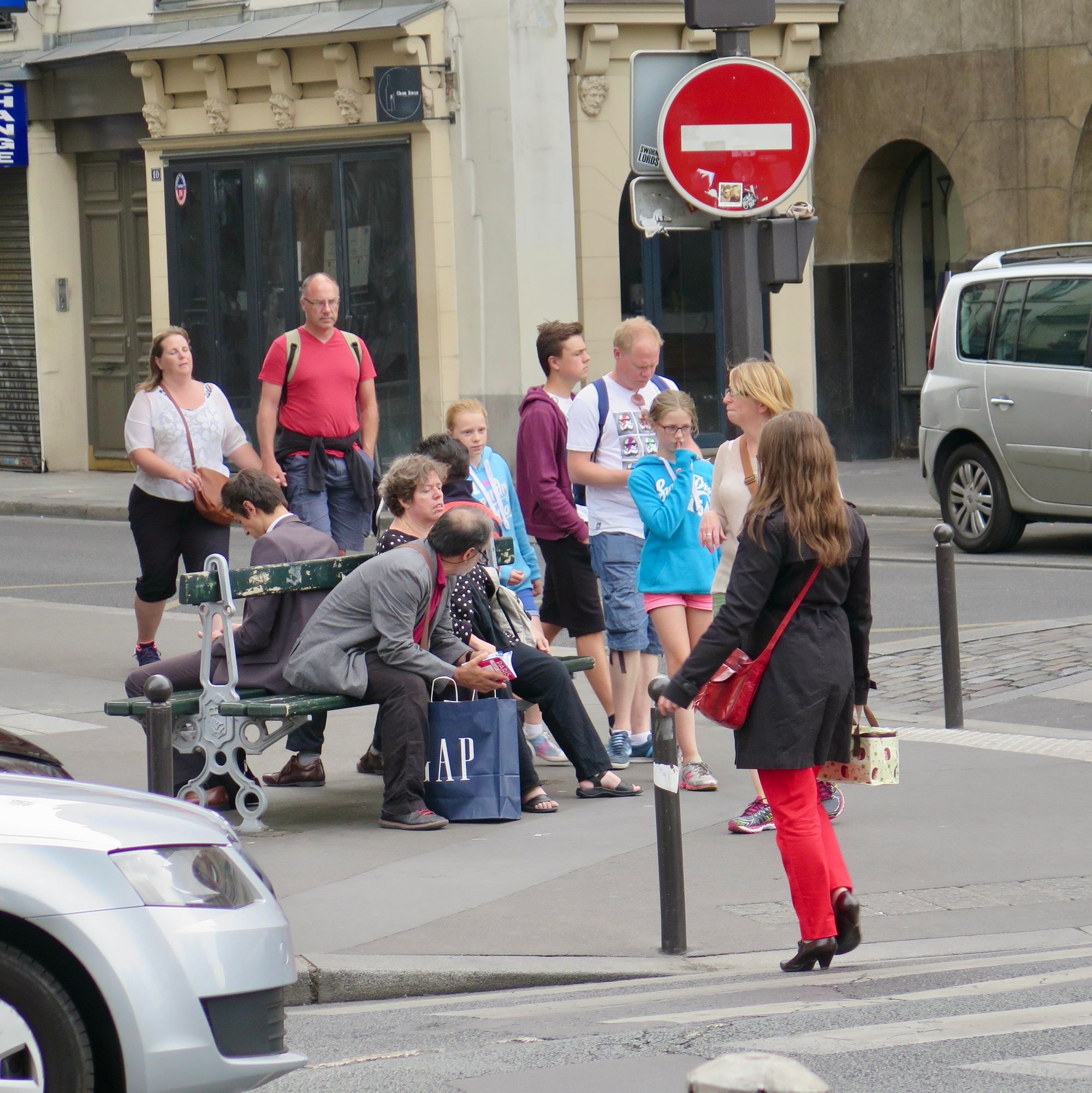
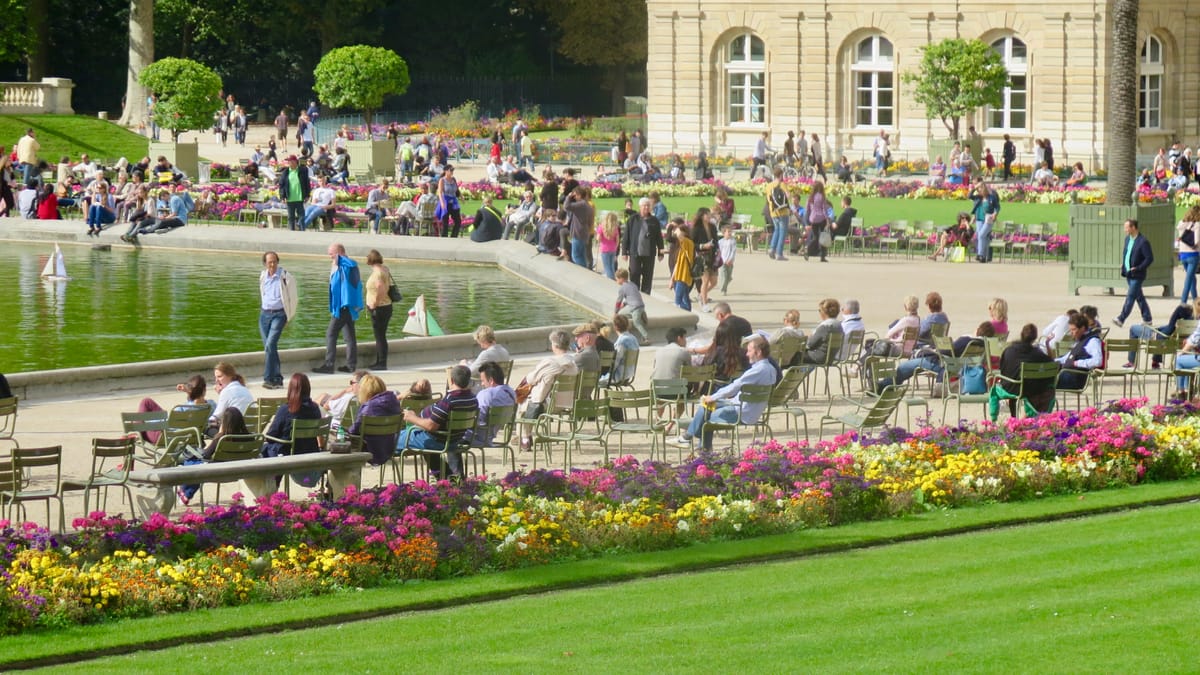
Amsterdam's Corner Public Gathering Place
These two places are across from the Keizersgracht canal from each other. Both are famous gathering spaces with layers of people perched, standing, leaning, or just slowly walking through each space.
Our long time friend who has been stirring things up in Amsterdam, Peter Groenendaal @placemakingplus.org, told us, "it's a sidewalk terrace that the café pays a tax for per m2 to the City, always allowing a pedestrian passage way of around 1.5 meters wide." During Covid, more square meters were allowed. Now, the city is trying to roll back those allowances. A large number of café and restaurant owners are suing the City in response. They claim they are still trying to catch up financially from the two years of unfair shutdowns that led to incredible losses.
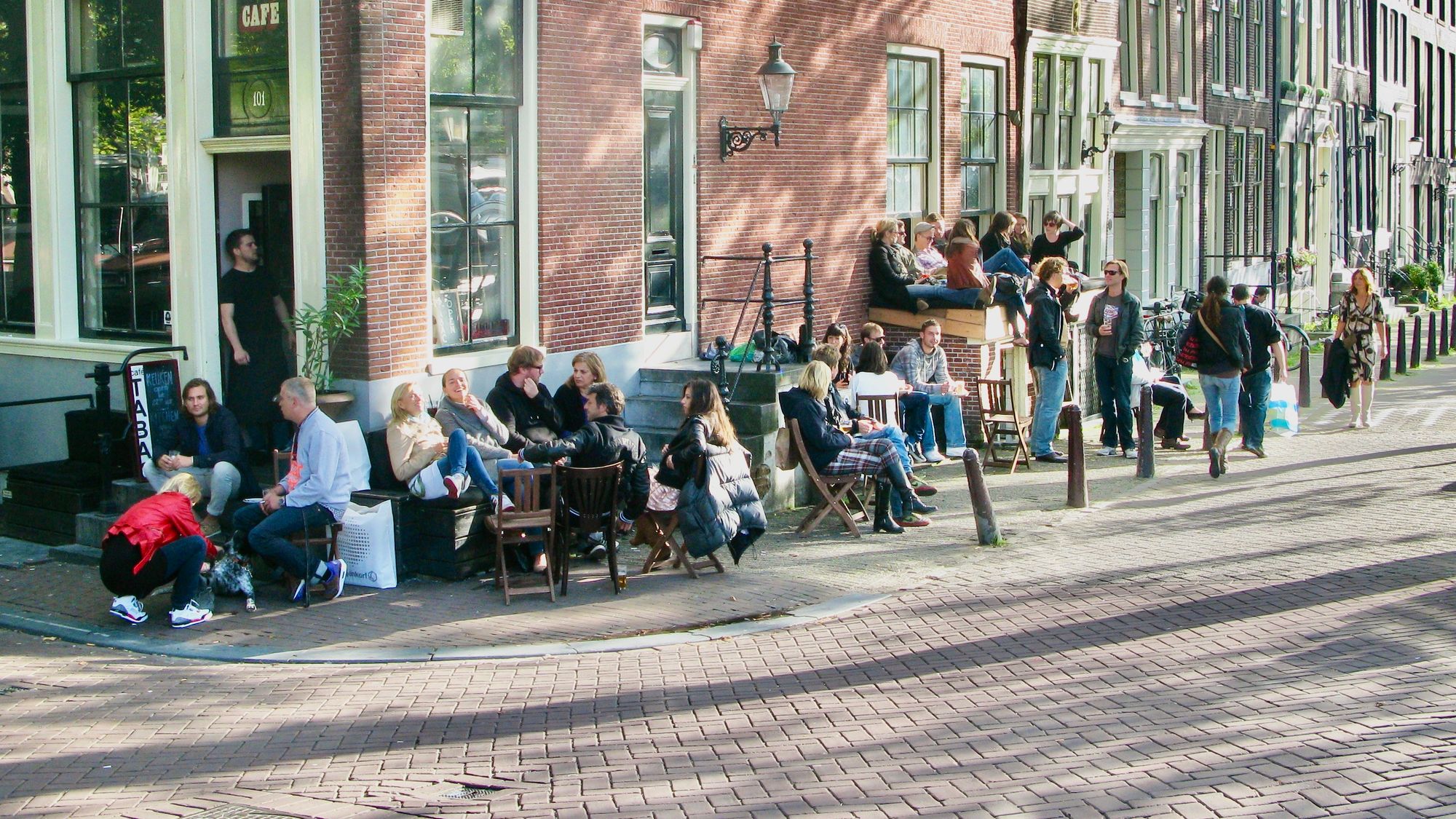
Amsterdam, a city of corner cafés and book stores, has a few corners where the seating is public. In this one, small coffee shop and beer parlor anchor the corners.
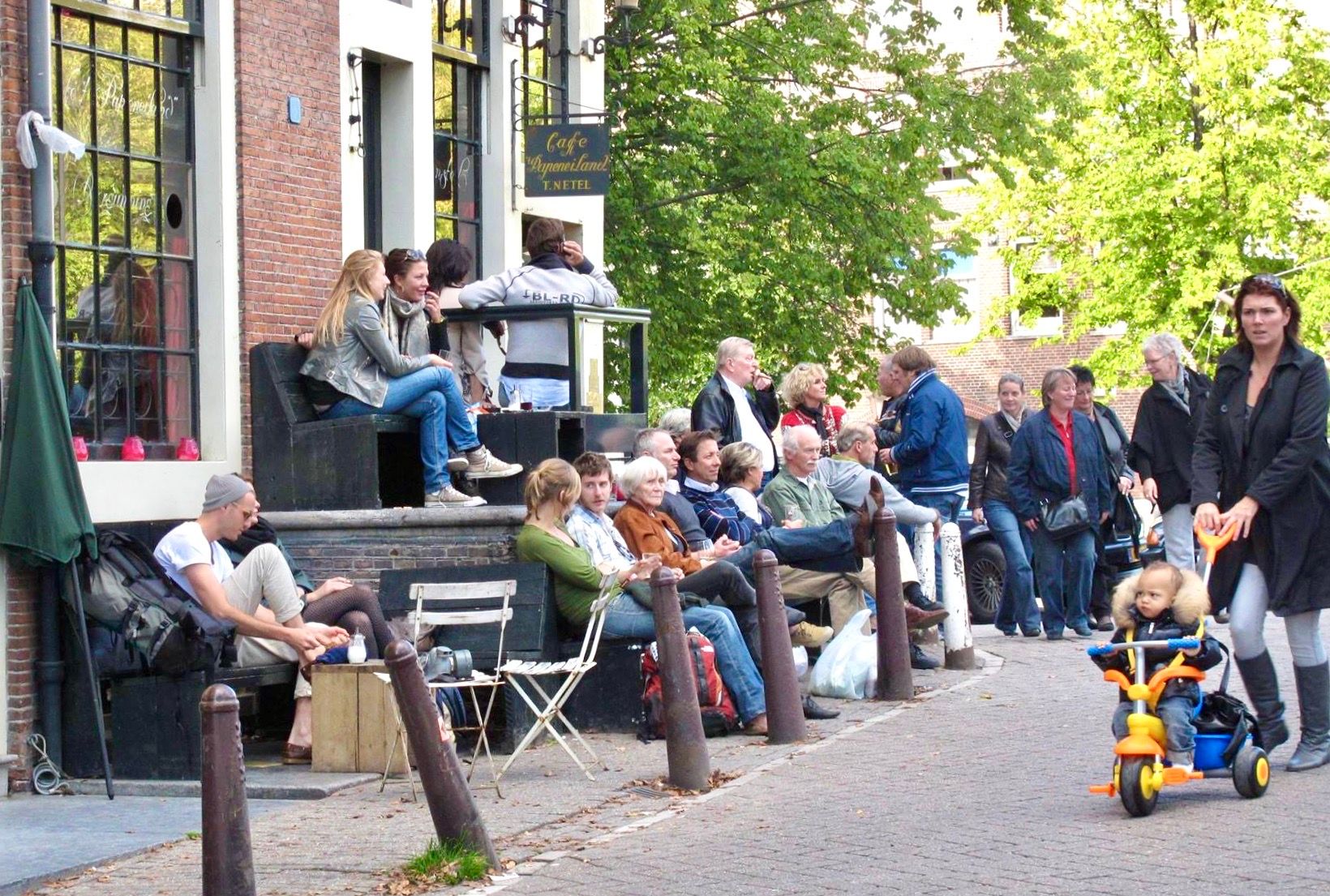
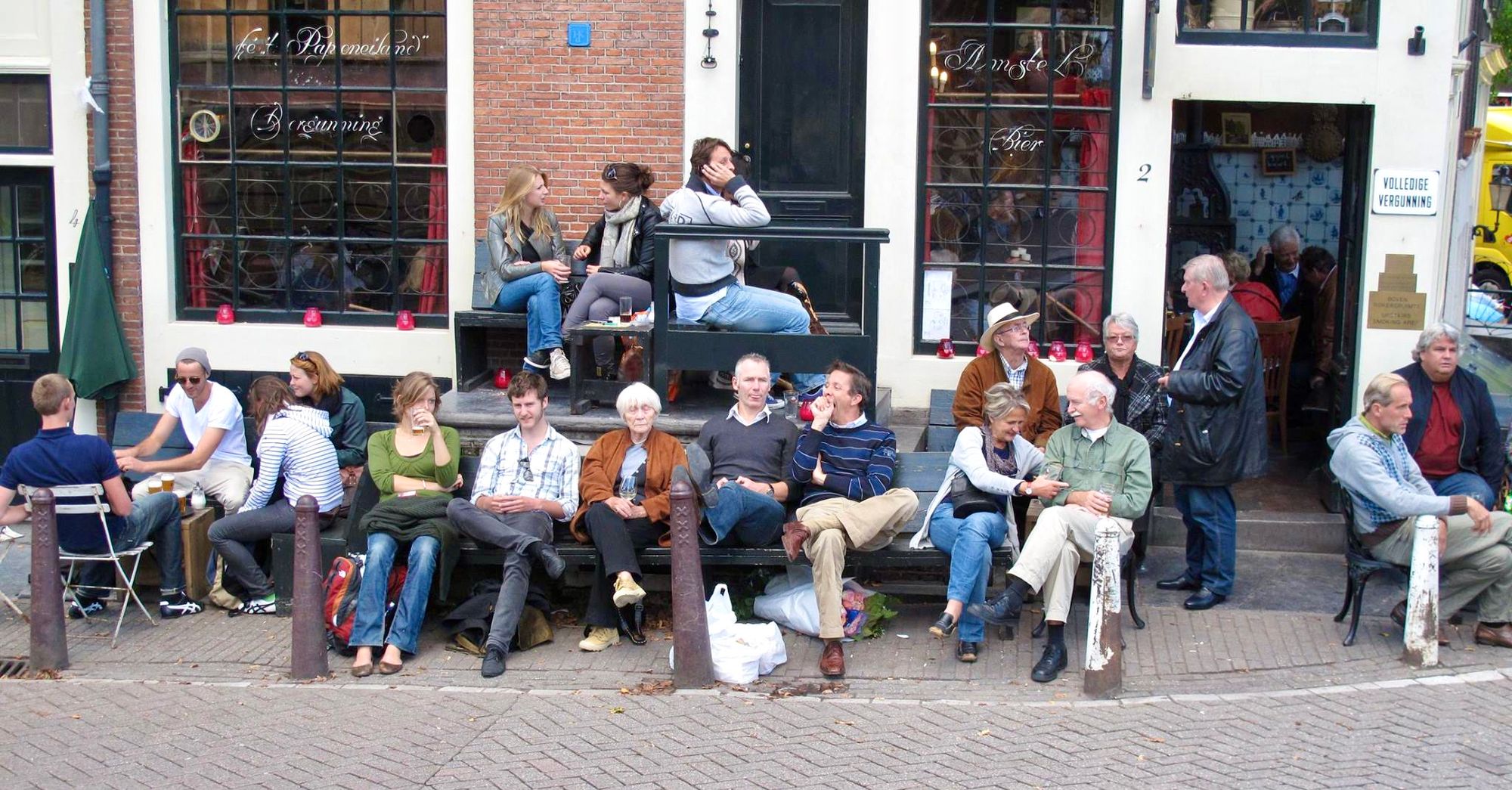
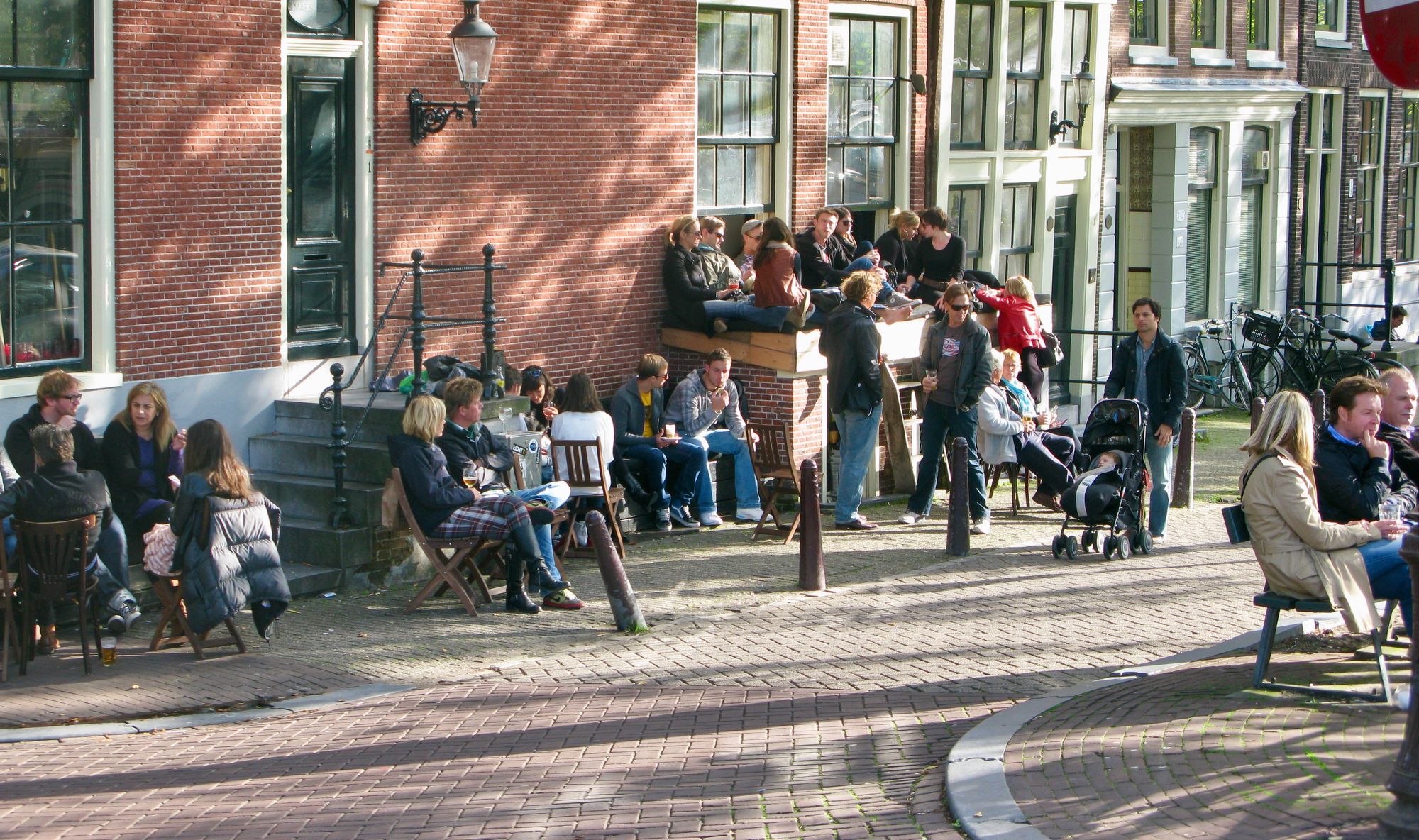
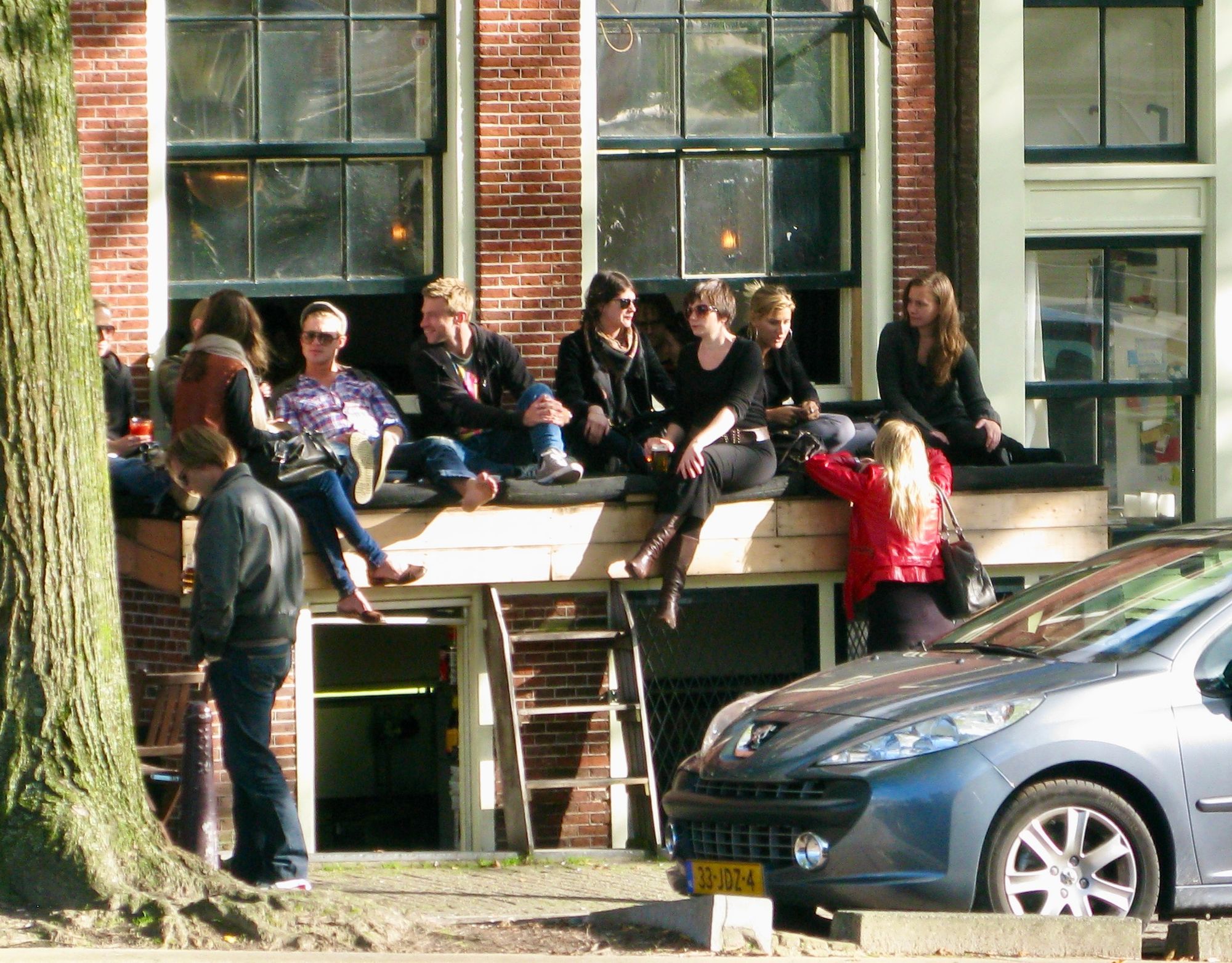
United States
Belfast, Maine and Los Altos, California have good examples of corner seating. Both of these communities are successful at evolving from the traditional car-centric community into one where people and social life thrive. Over time they have reduced automobile parking and even how much people drive within the downtown.
Belfast, Main Street
Belfast is that rare combination of quiet small town with an active social and cultural life that is attractive to residents and visitors alike. It has a history defined by being on the water, but it also a museum of historic buildings.
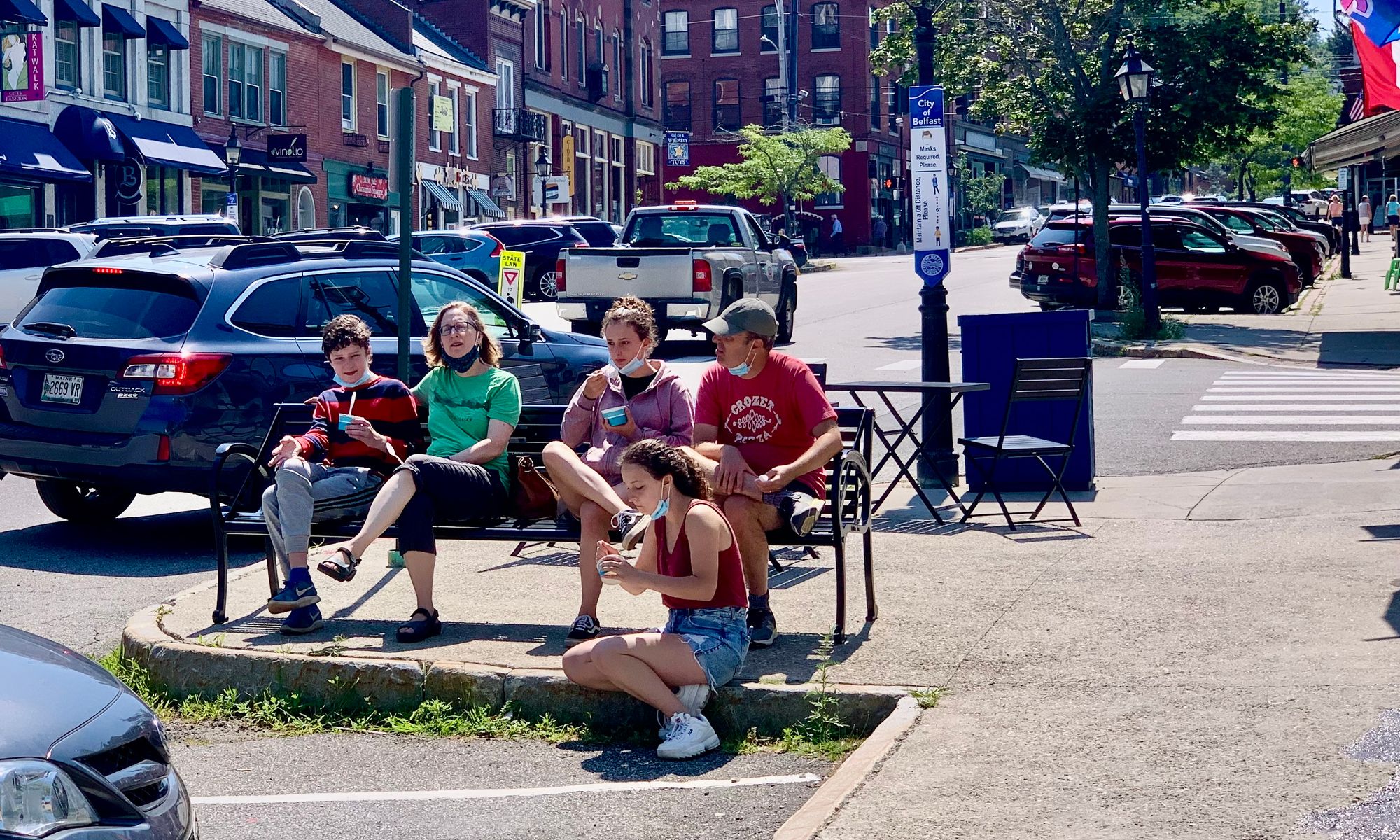
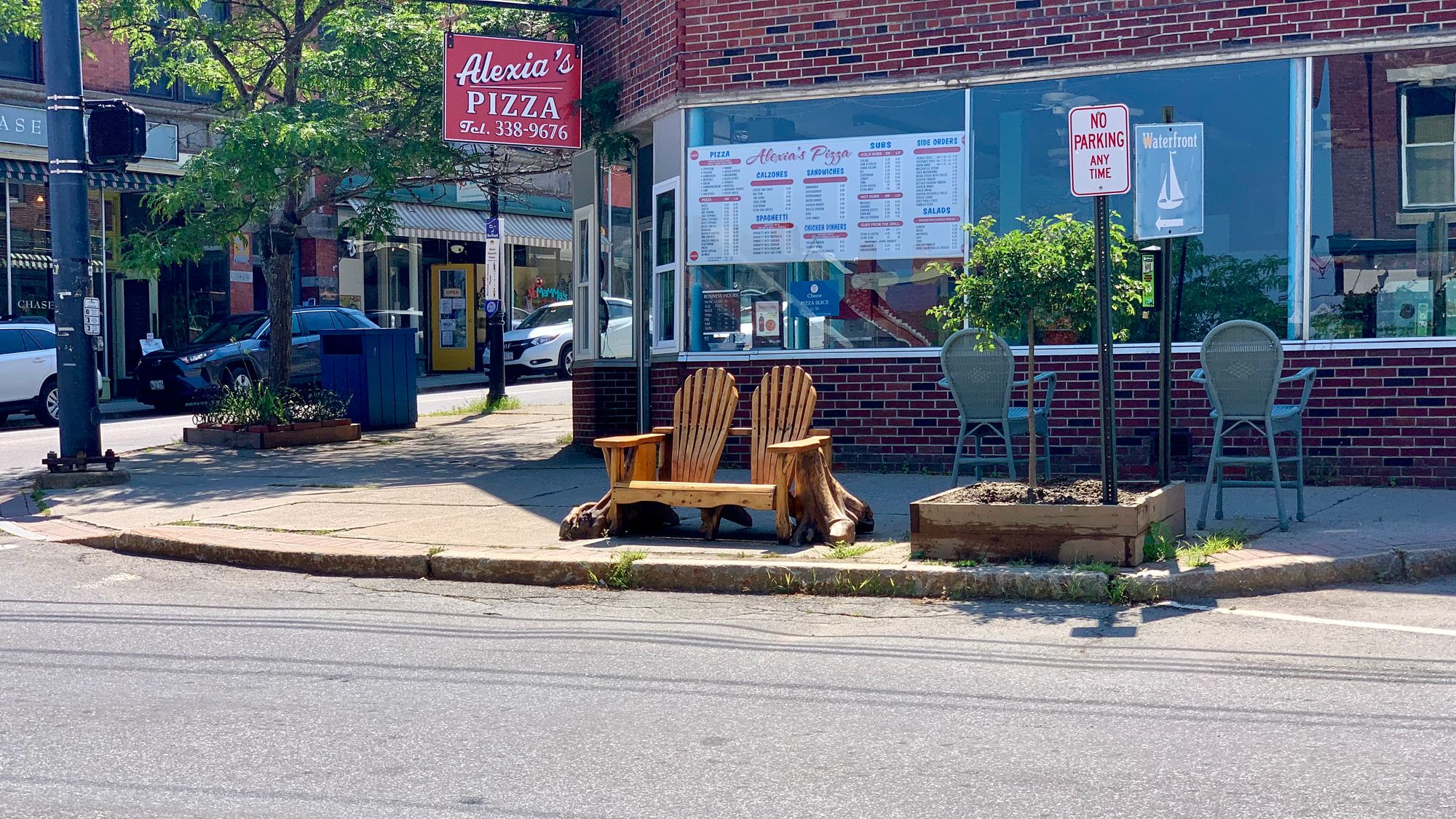
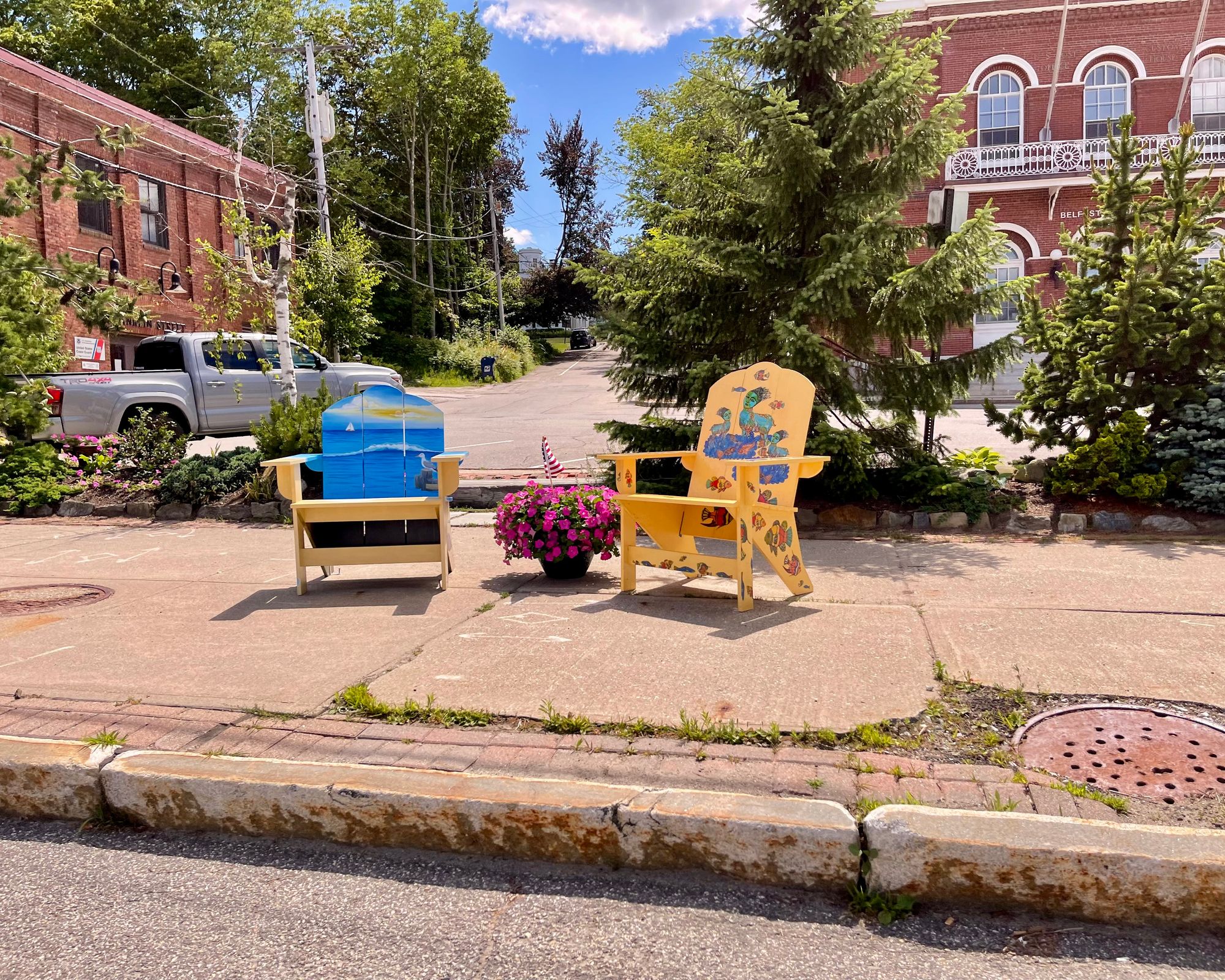
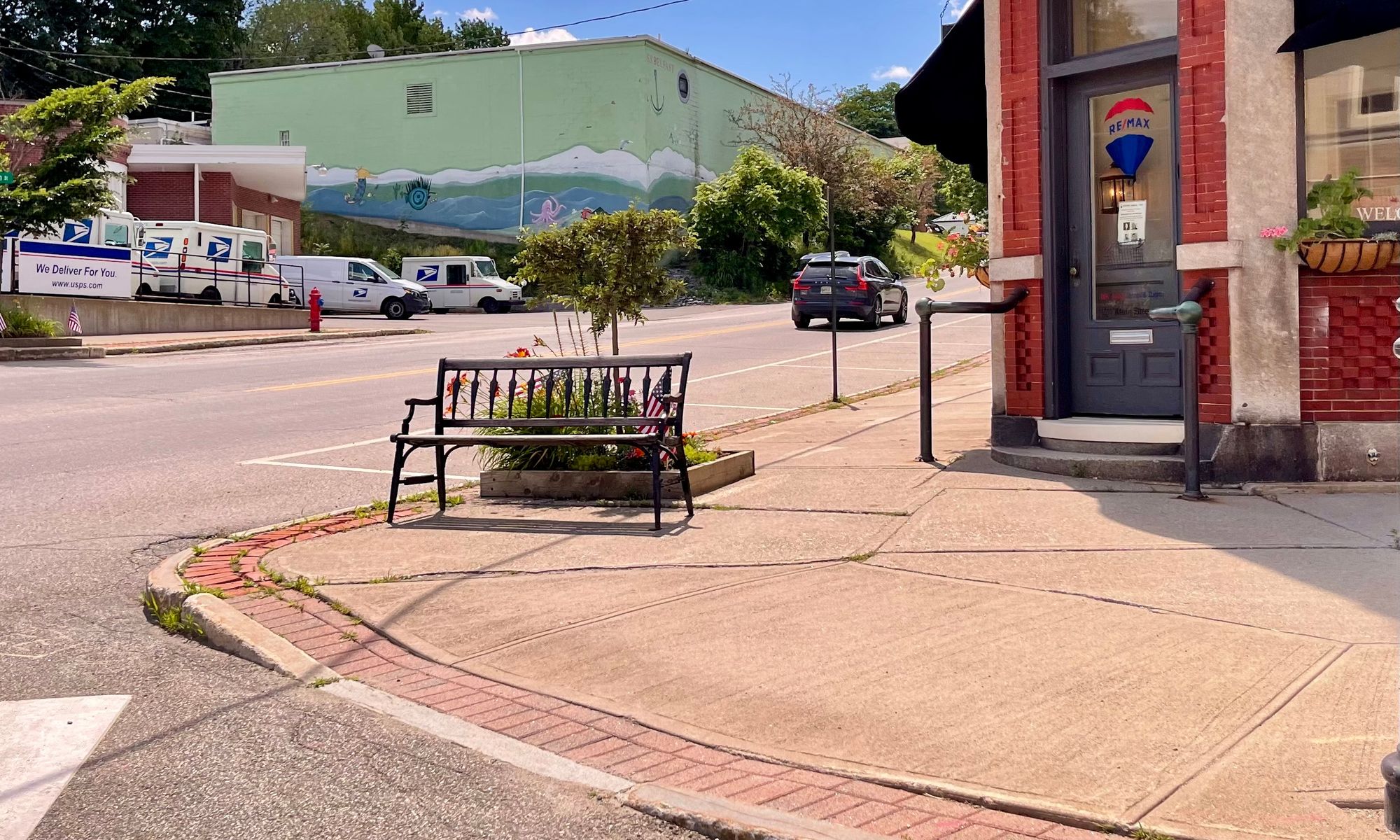
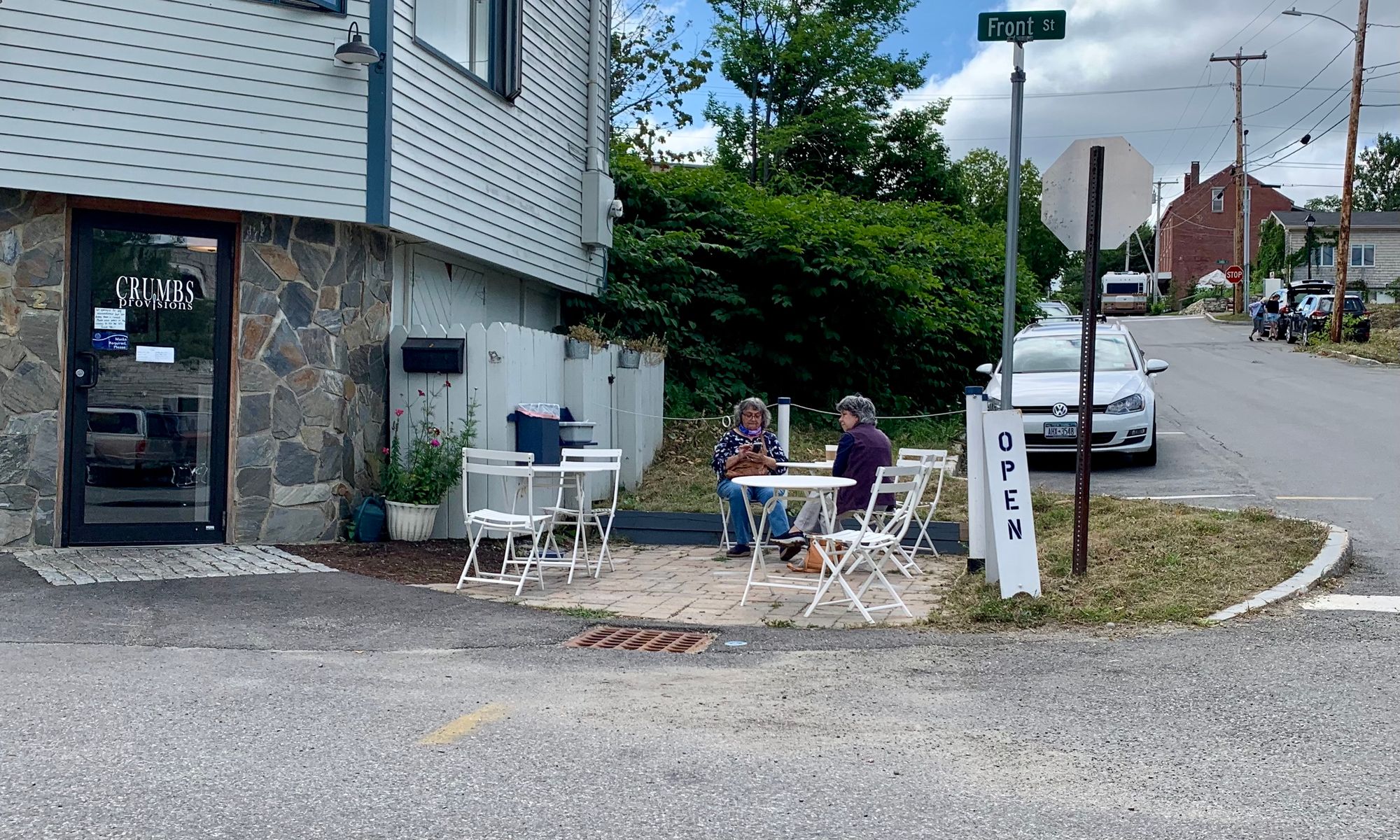
Los Altos, California
Some of the corners create small, almost plaza-like spaces, similar to what we found in more historic communities.
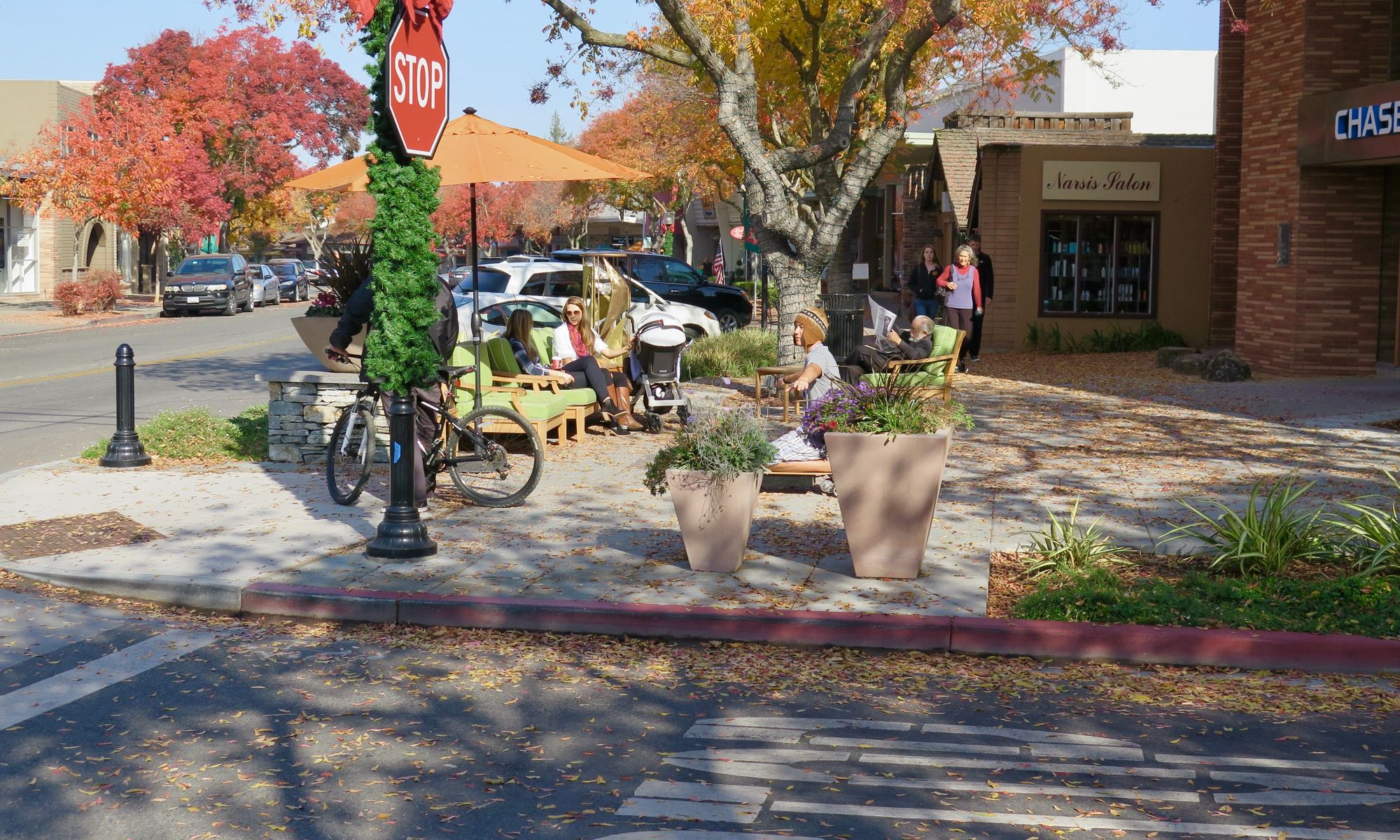
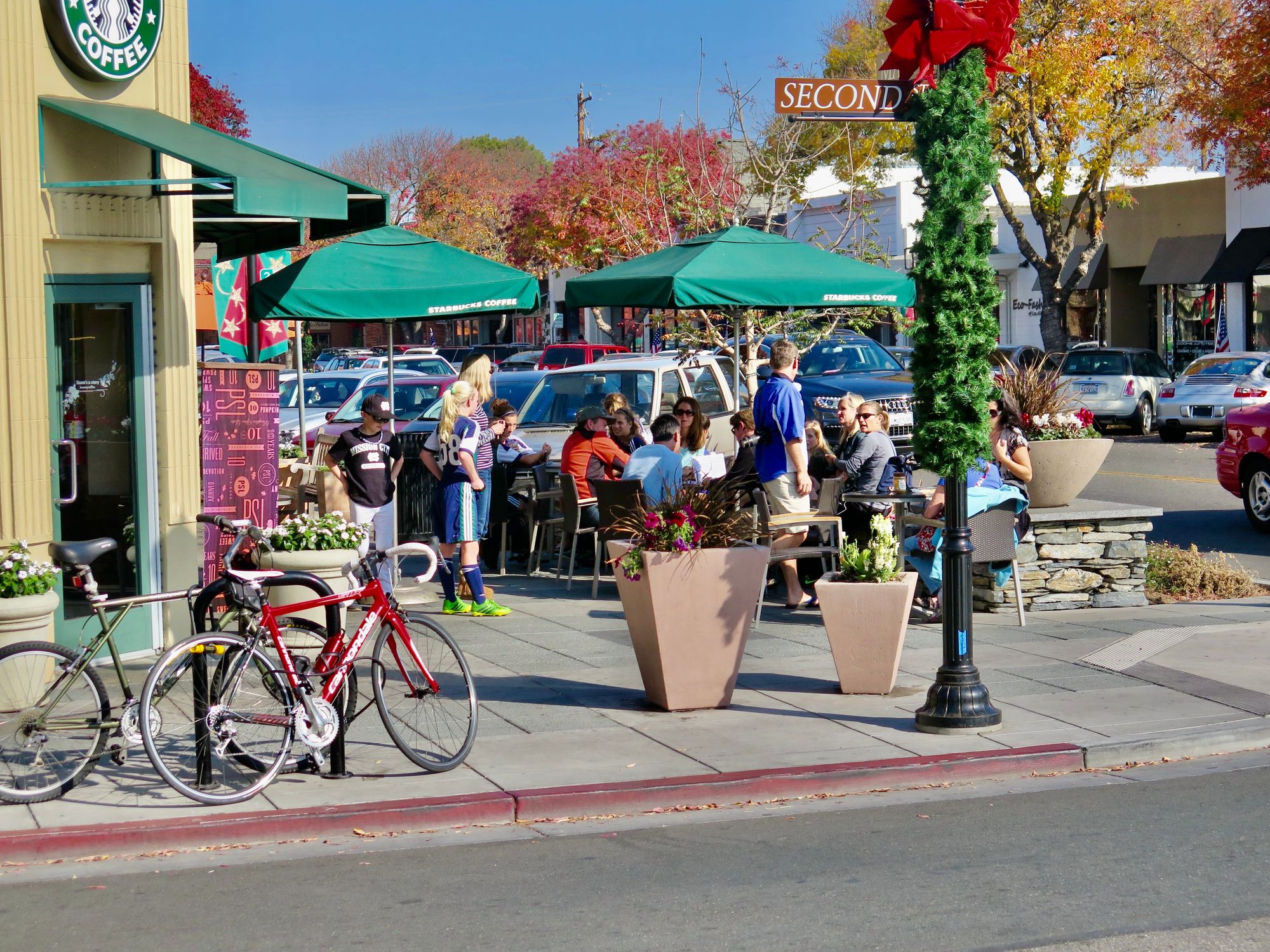
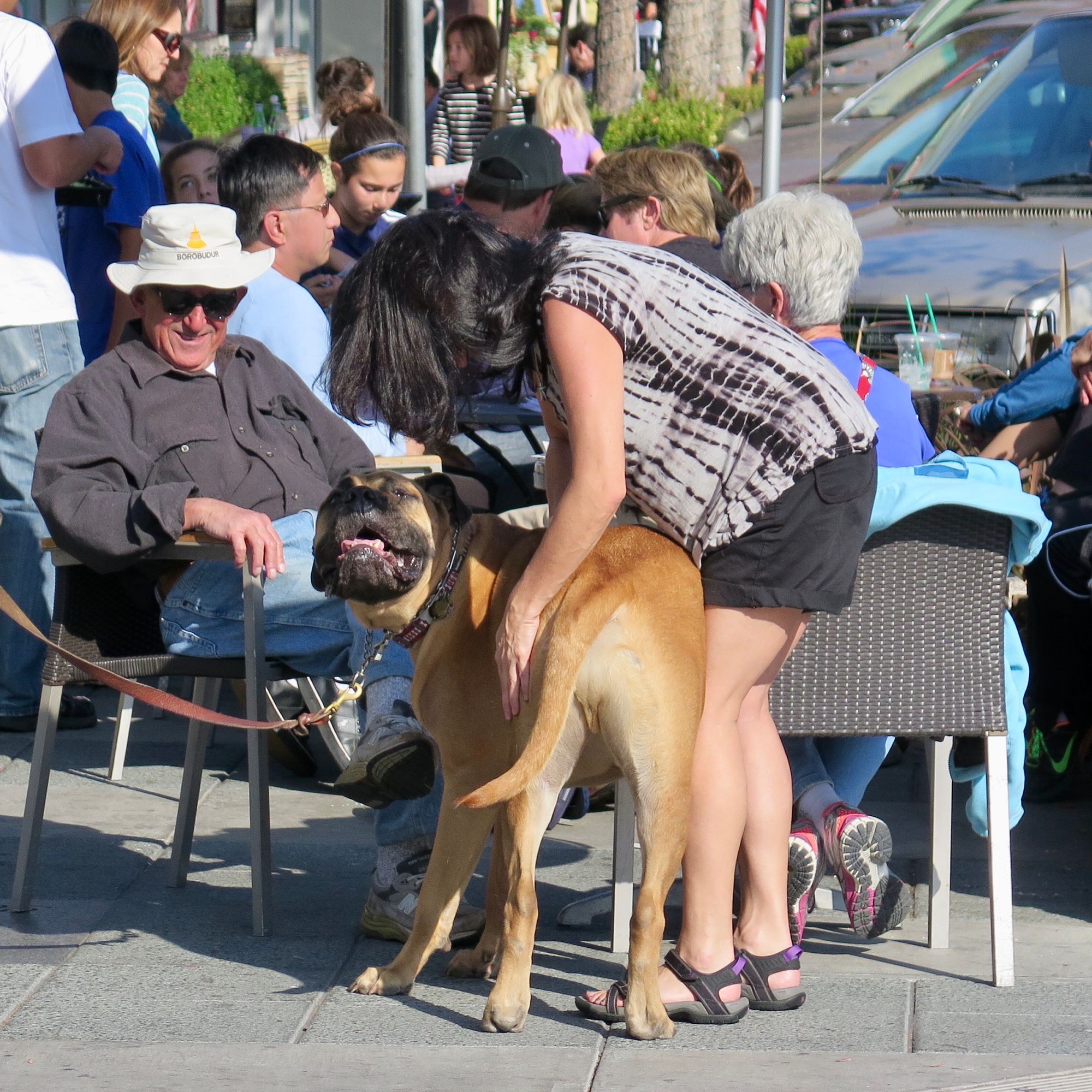
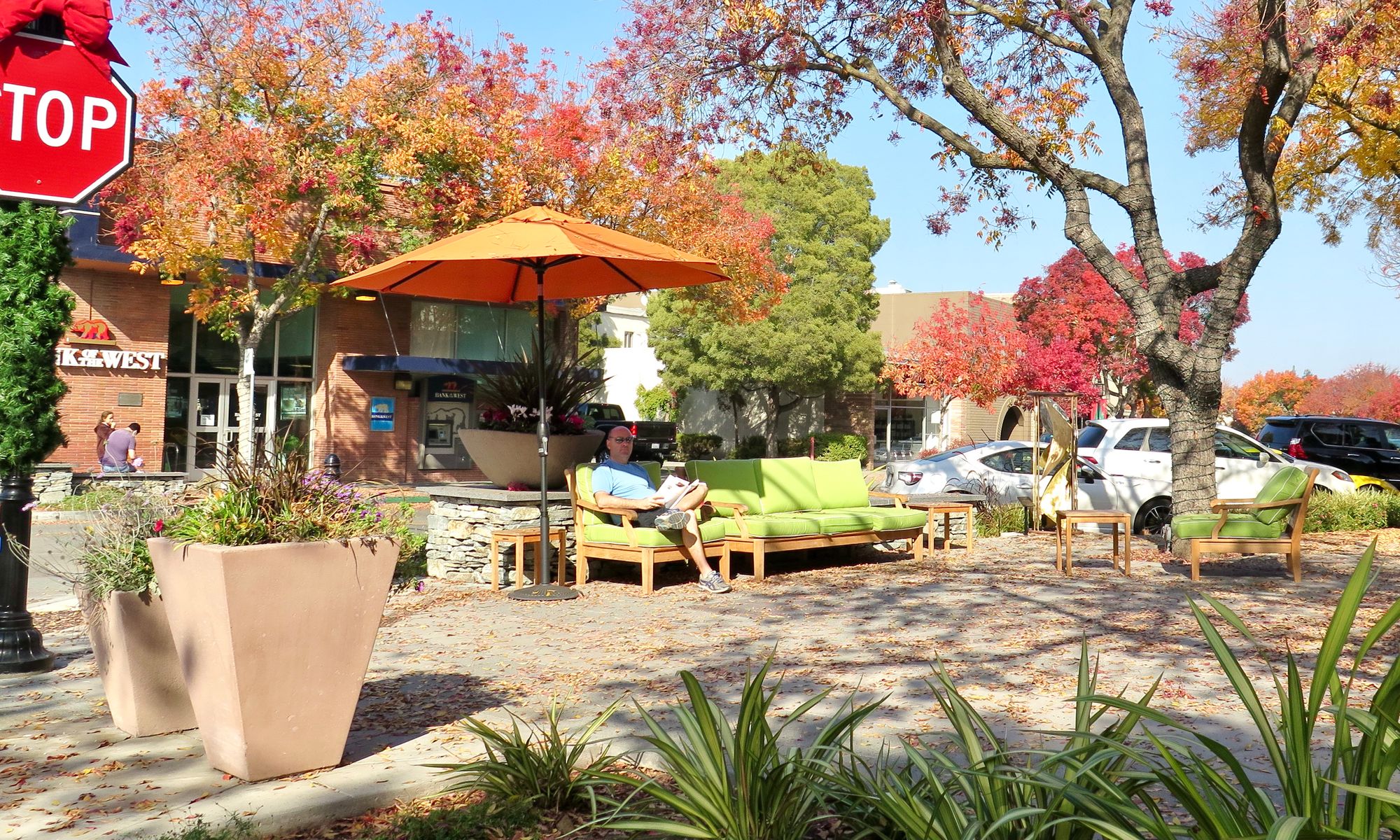
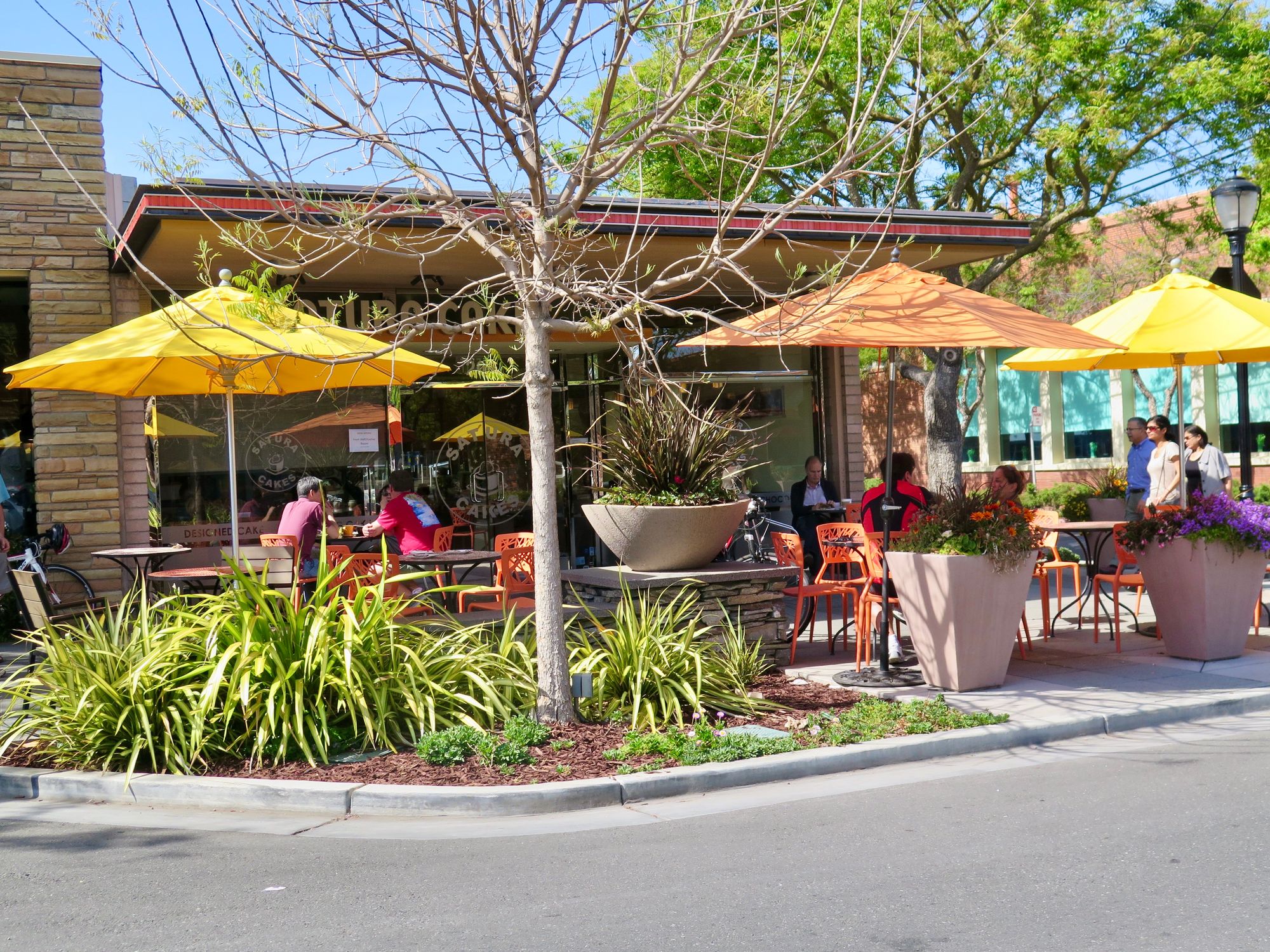
Other Examples From Around the World

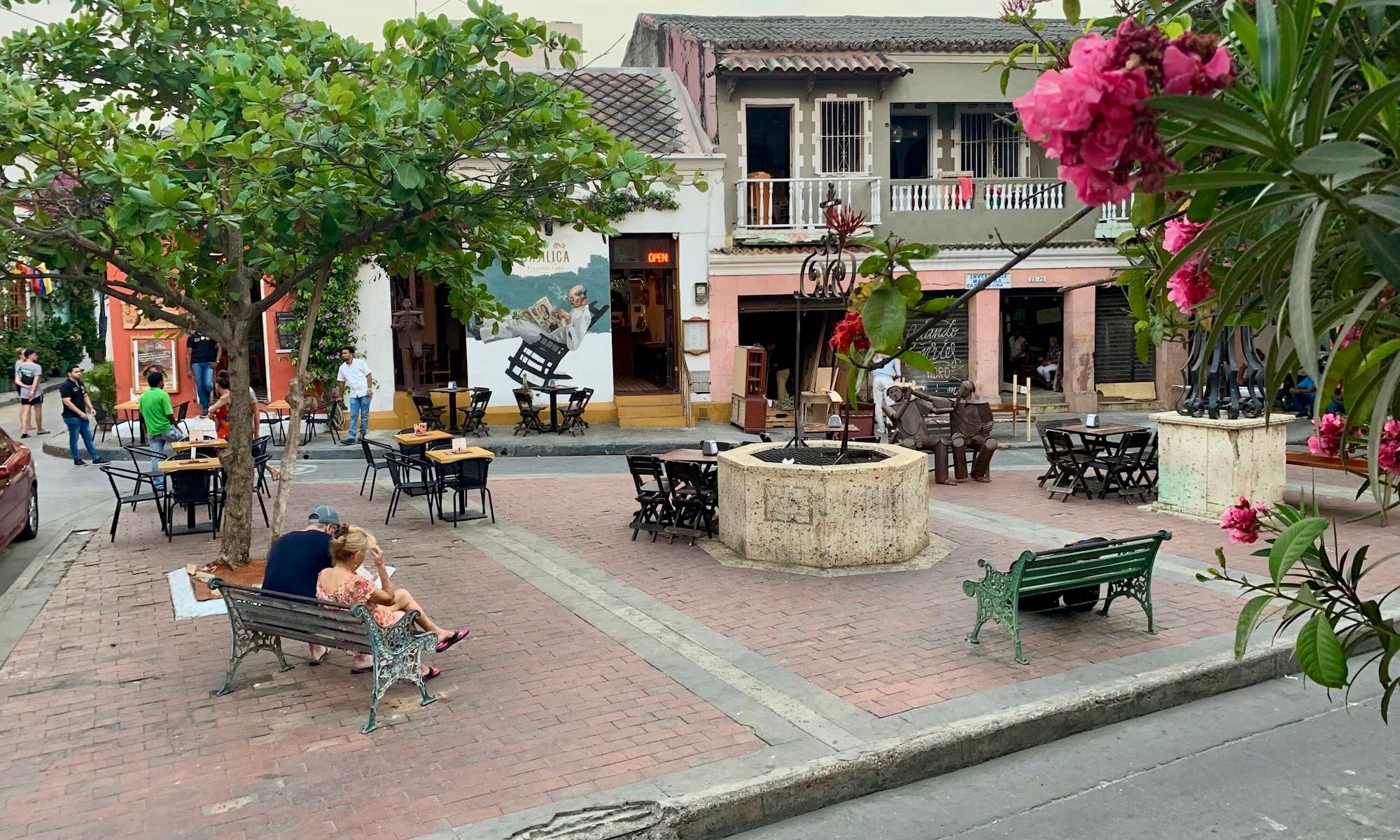
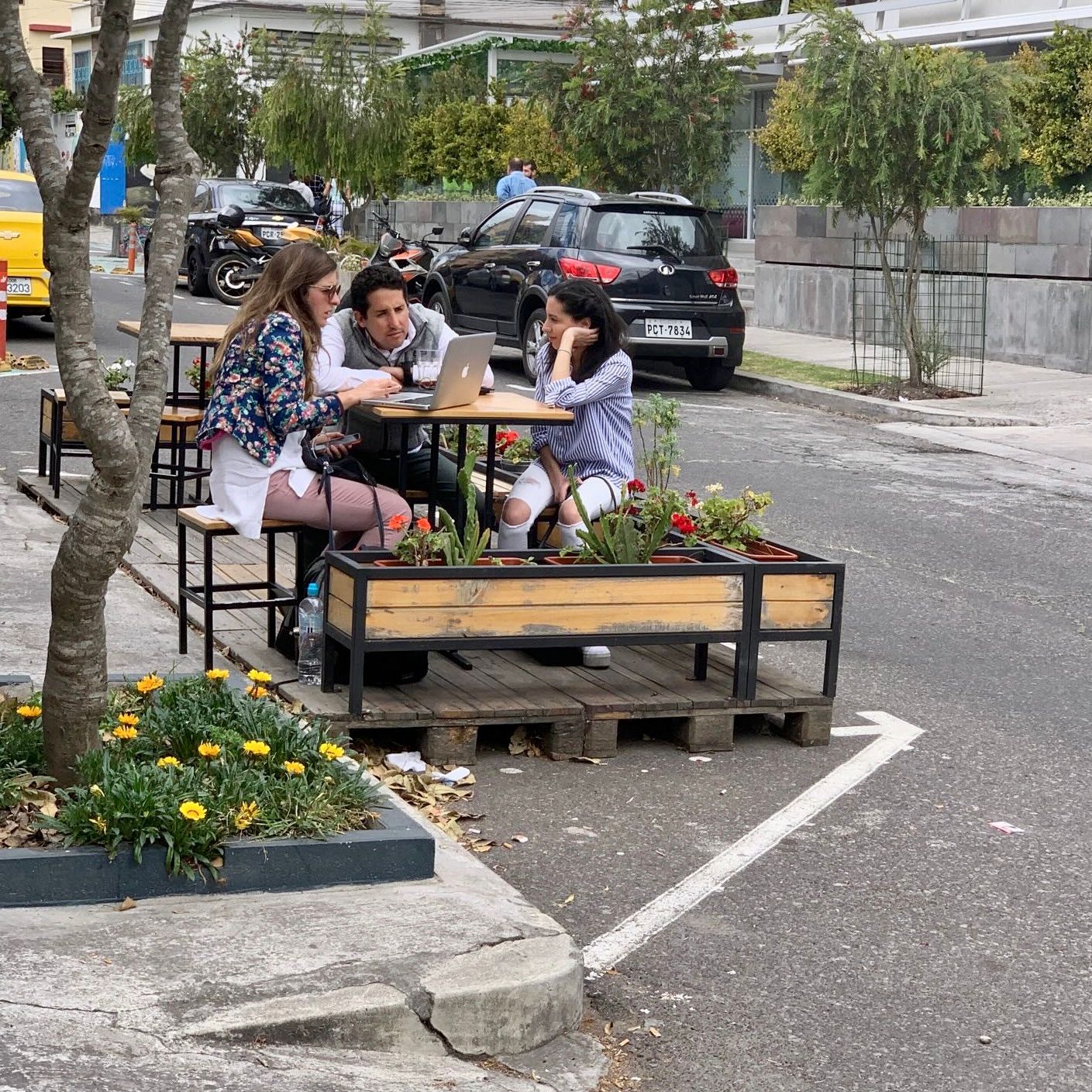
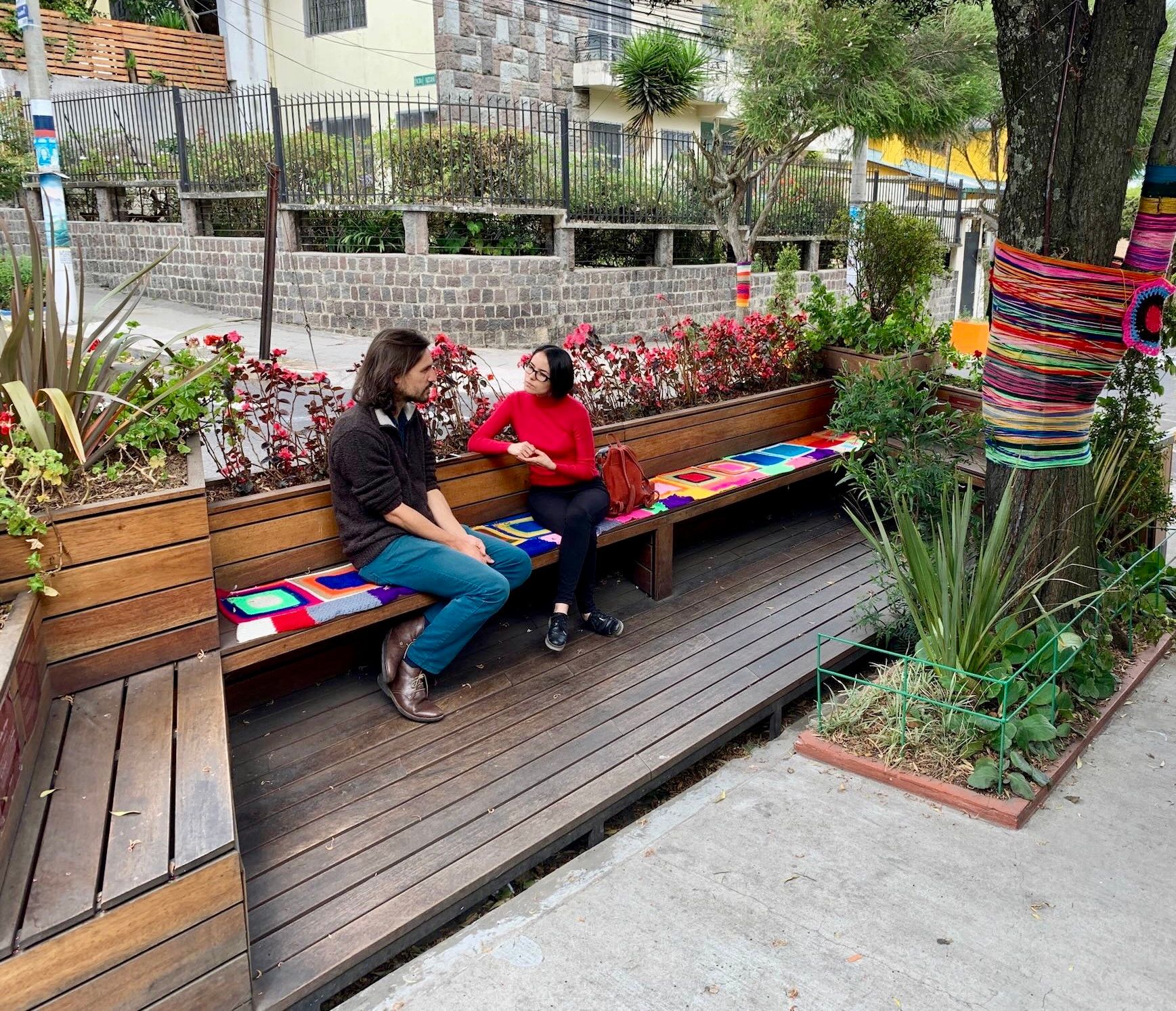
Mexico City - Fundacion Placemaking
Our partner in Mexico City, Fundacion Placemaking Mexico added a bench at the corner in front of our long time friend, Cecilia Martinez's house in Mexico City. Guillermo Bernal, Cecilia Martinez, Ethan, and Aley Kent can be seen here spending time on that corner.
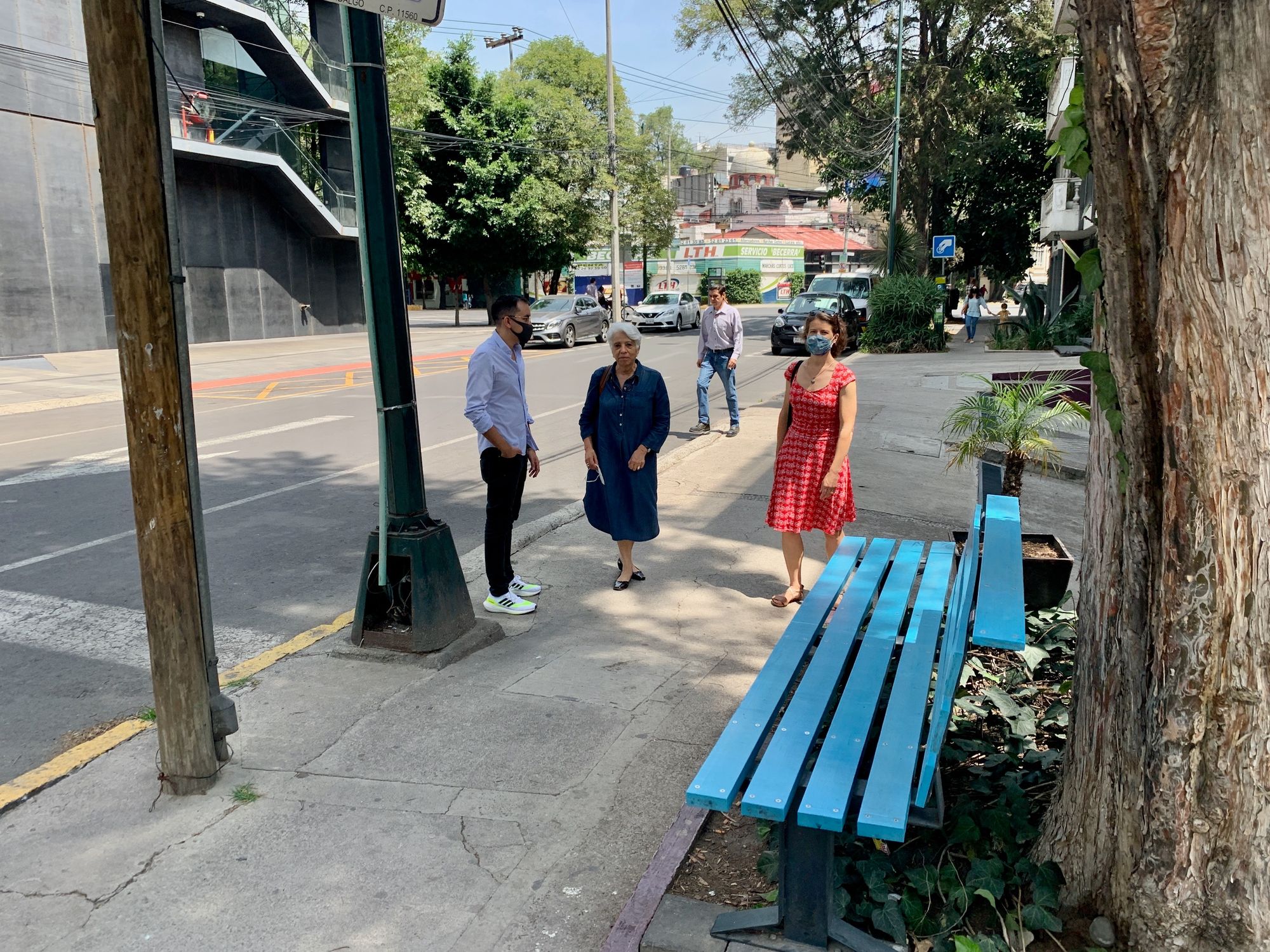
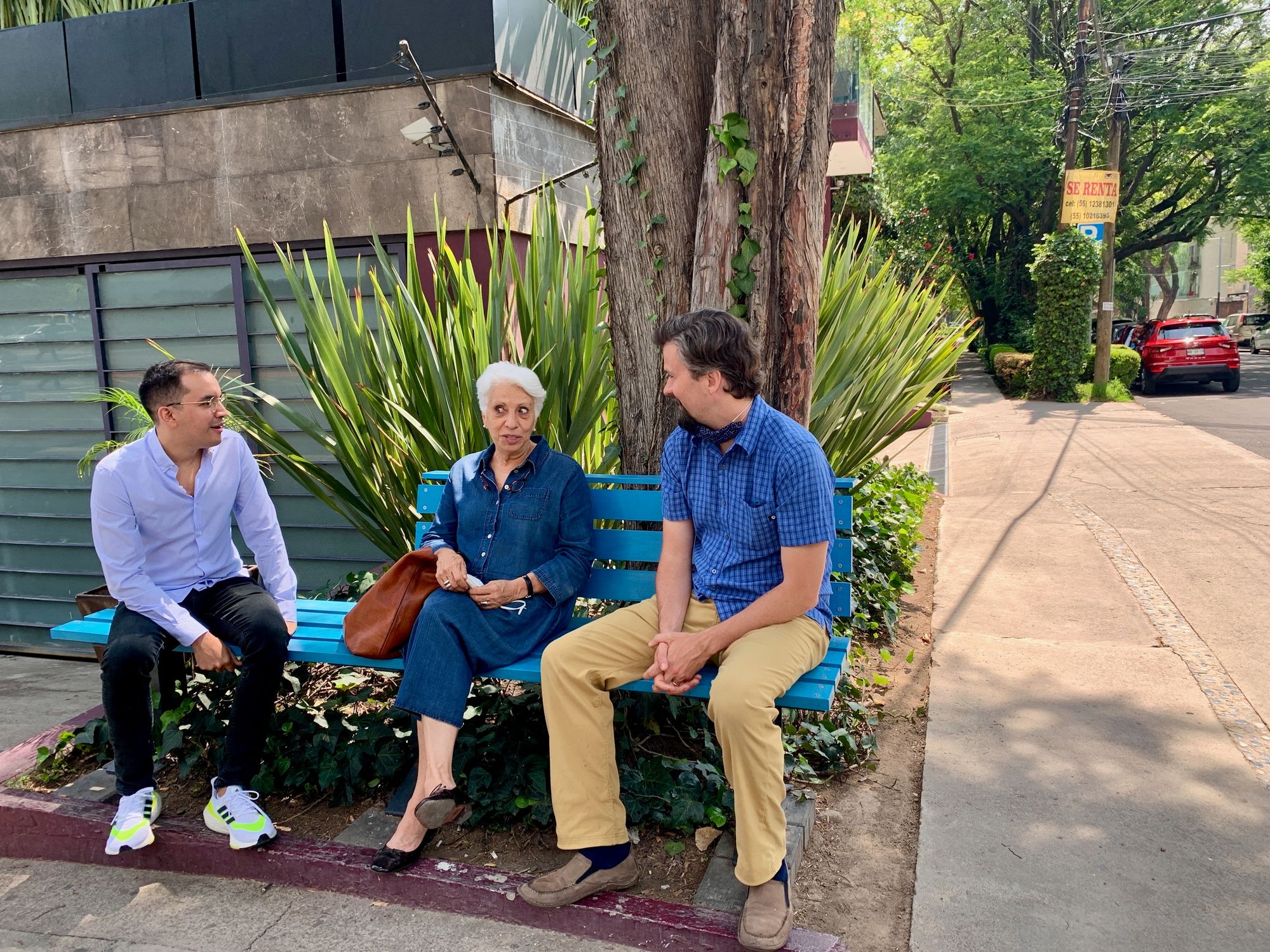
Guillermo Bernal, Cecilia Martinez and Ethan Kent
A Corner Bench Can Shift Us Away From Car Culture
Changing the emphasis from the car culture we have embraced for the last 75 plus years to where communities and their social life and community cohesiveness are the priority is a game changer. We have been diving deeper into the basic ideas that support and restore social life in communities. Doing and achieving that flies in the face of the transportation and mobility mafia that controls land use and development in most communities.
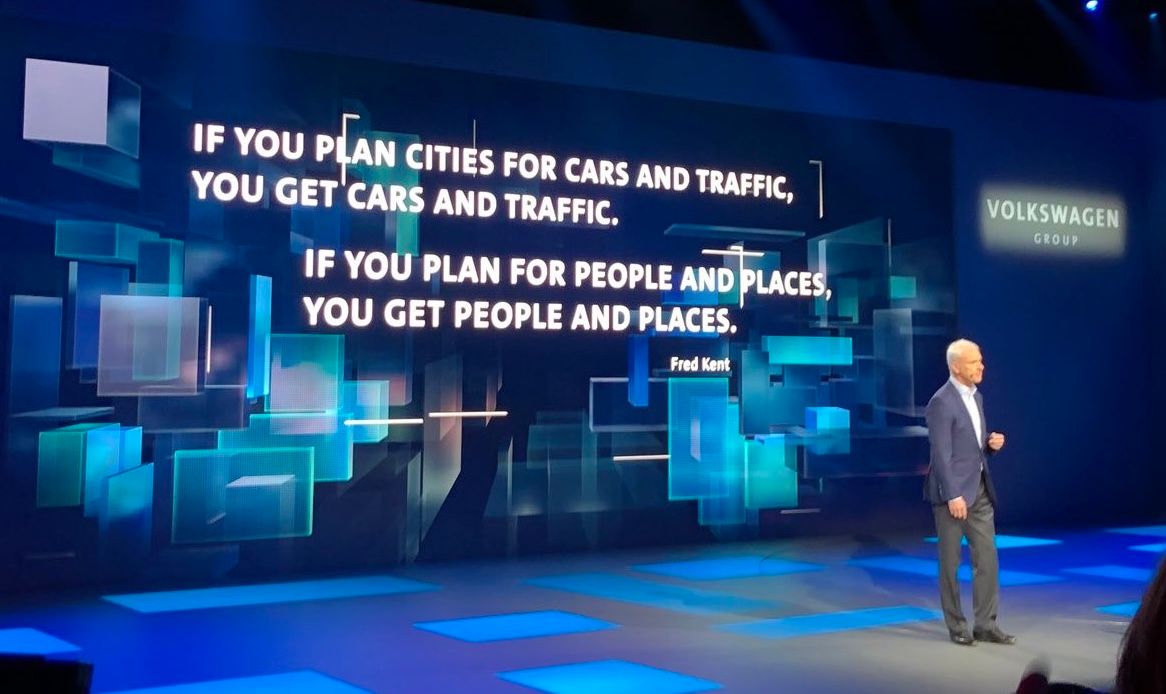
Takeaways
In communities where corners are gathering points, the neighborhood is safer for everyone, because people in cars realize they are guests on the street, and act accordingly. Families are more secure about their children being out alone or with friends and there are many more eyes on the street. The phrase, "It takes a village to raise a child" becomes a reality, not just a wish.
If we make street corners more comfortable, starting with something like a bench, we can make our streets safer, more sociable, and more inviting places. Chance encounters and long conversations can become the norm.
It doesn't always take a big investment — improvisation is a key way of sharing and showing off new ideas for public seating. It is infectious. When one resident or business does it, others follow suit, trying to do it better. It builds both relationships and creative places that benefit everyone. That is the way forward.
Related Articles
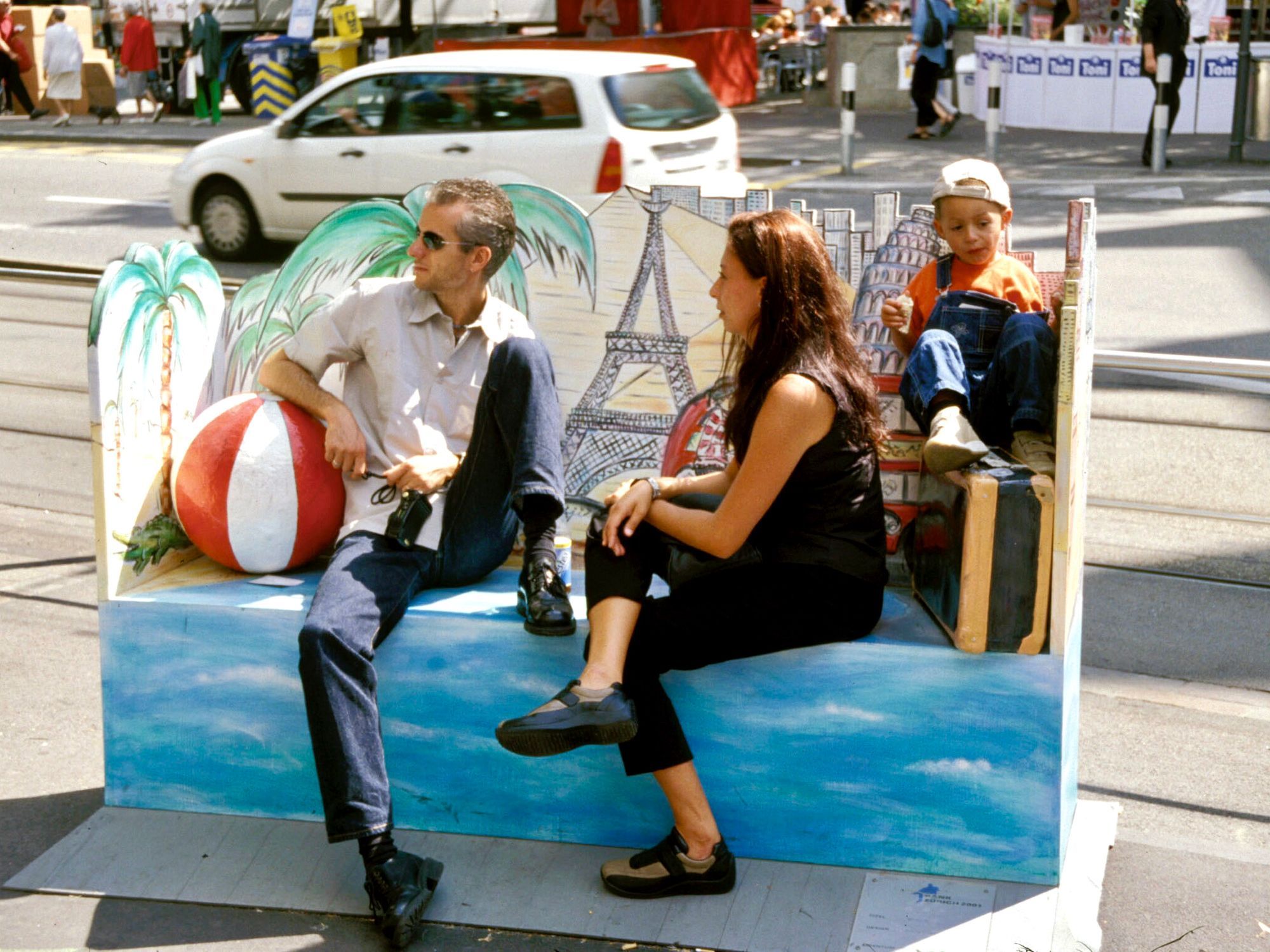
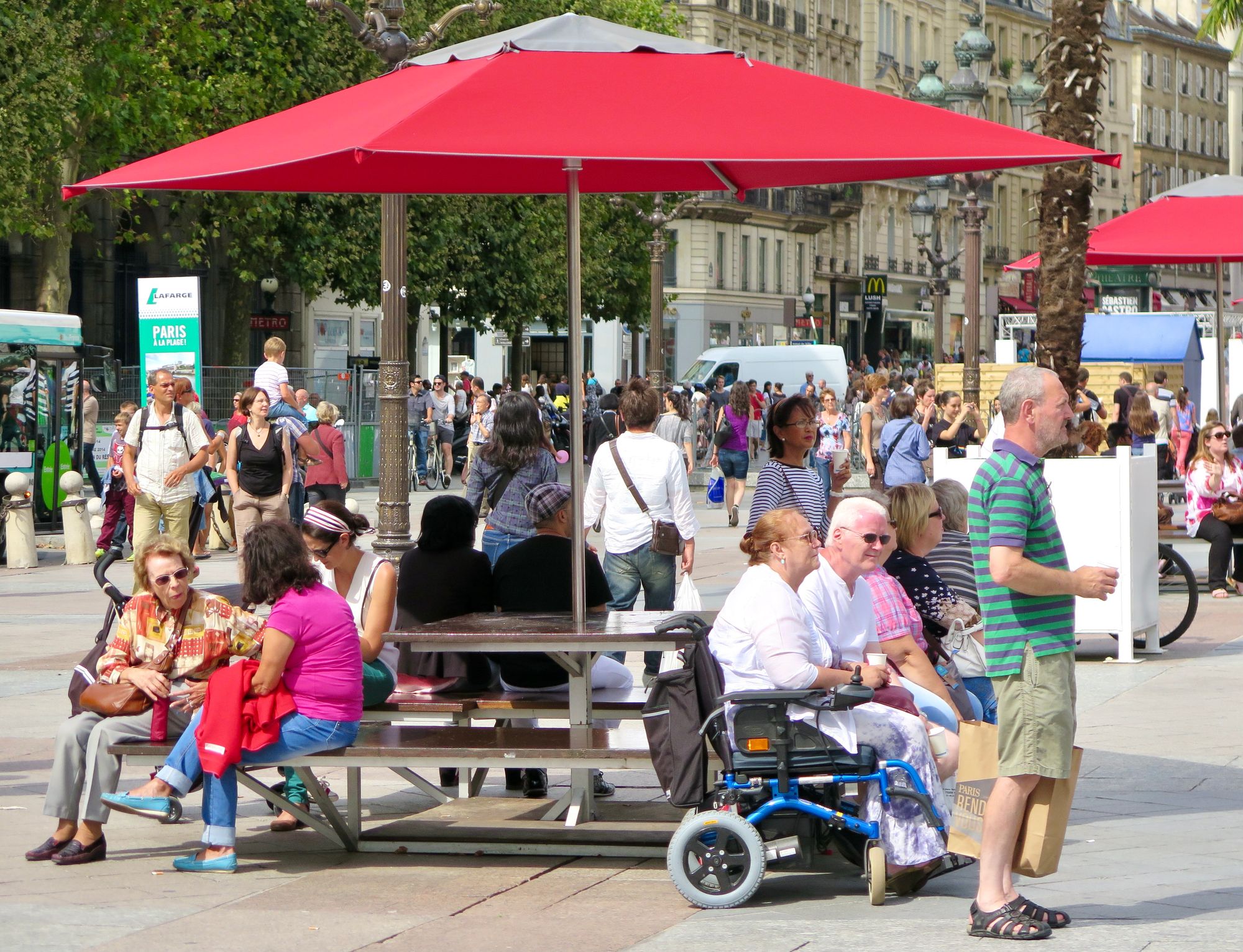
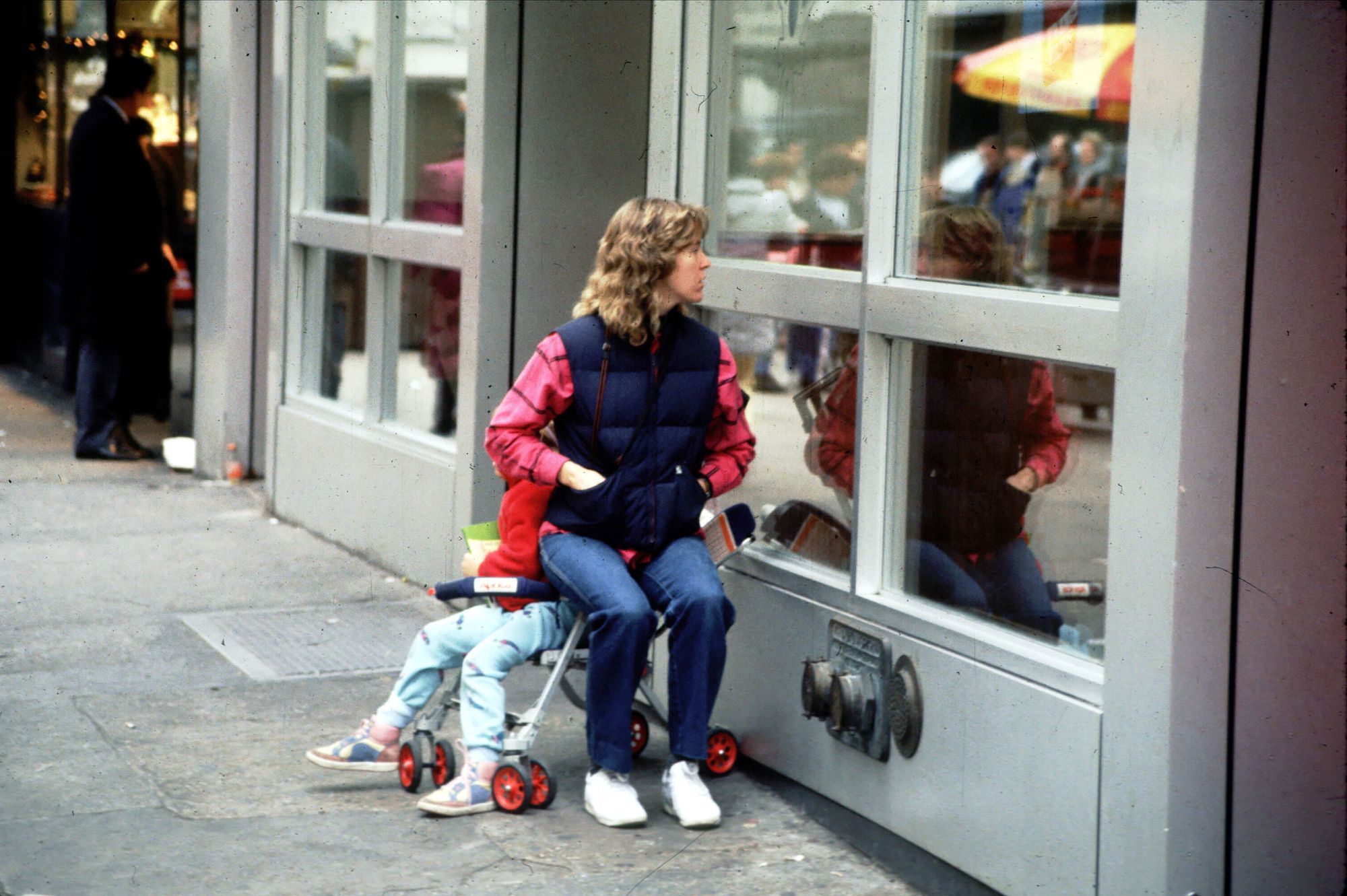
Further Reading

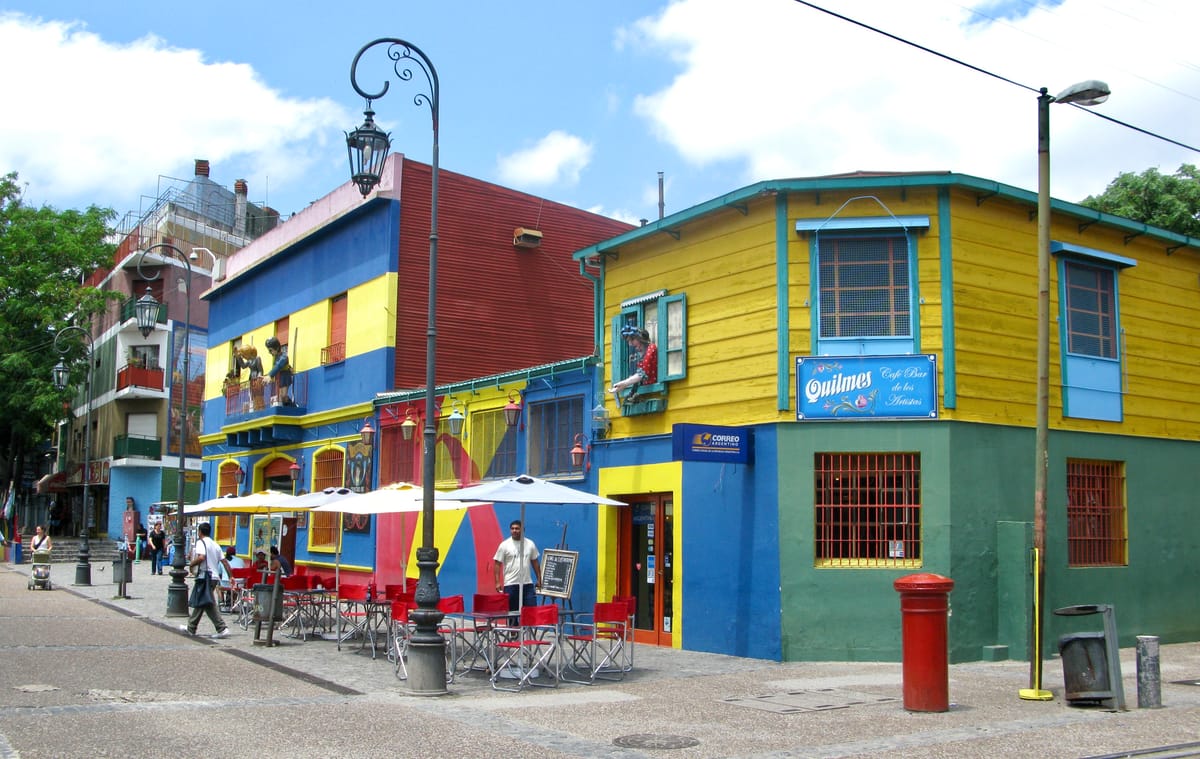
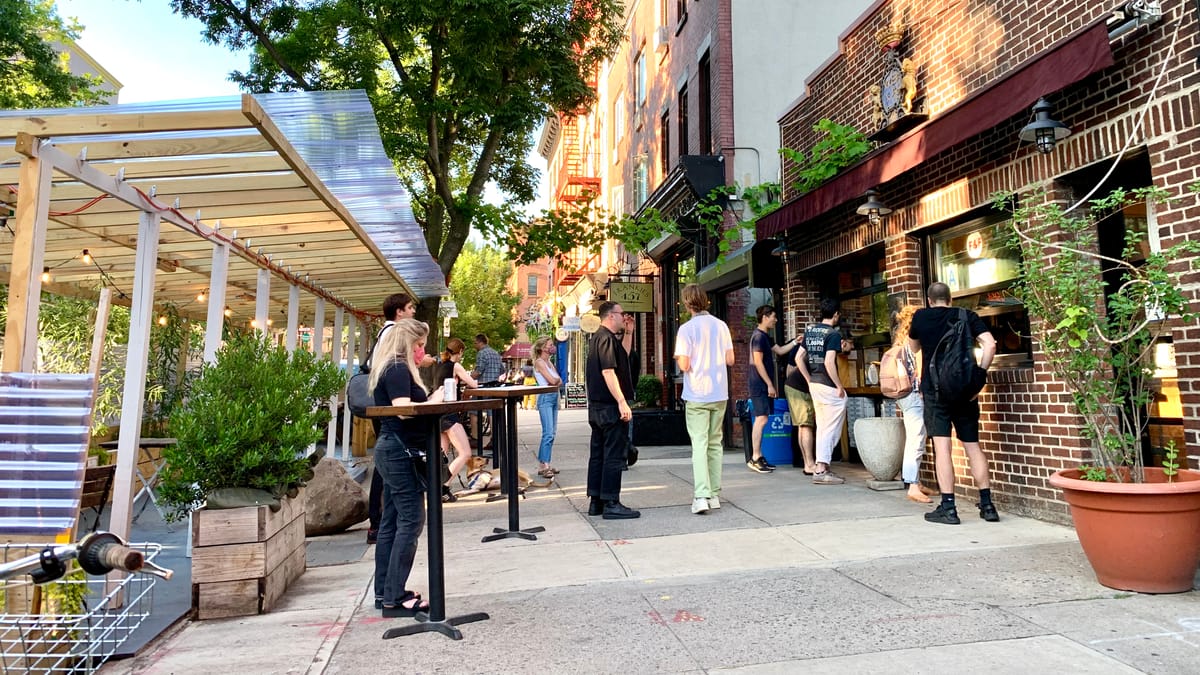
The Foundation and Future of the Placemaking Movement
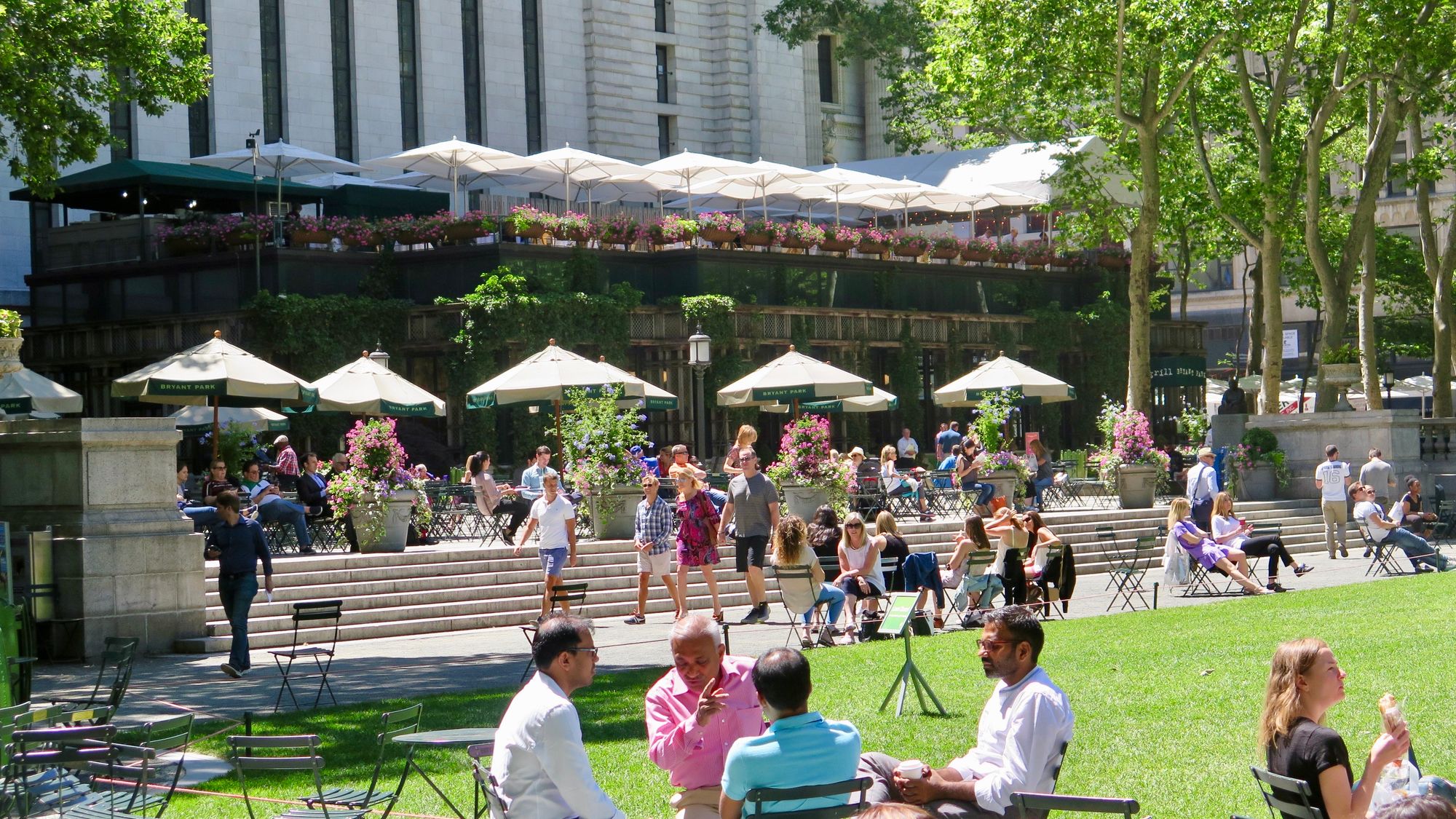
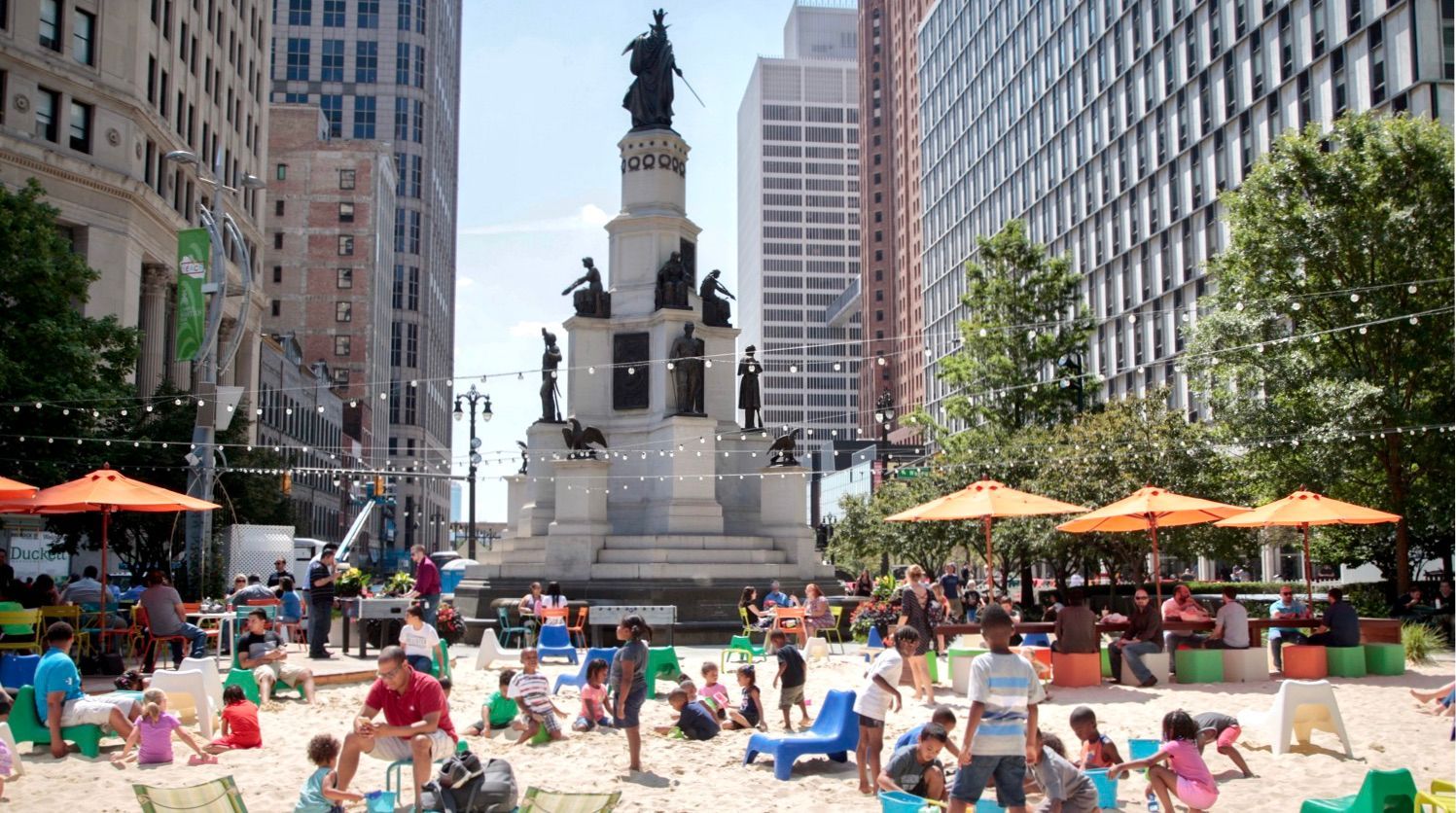
If you are interested in collaborating (articles, presentations, exhibits, projects, and more) or supporting the cause contact us.






